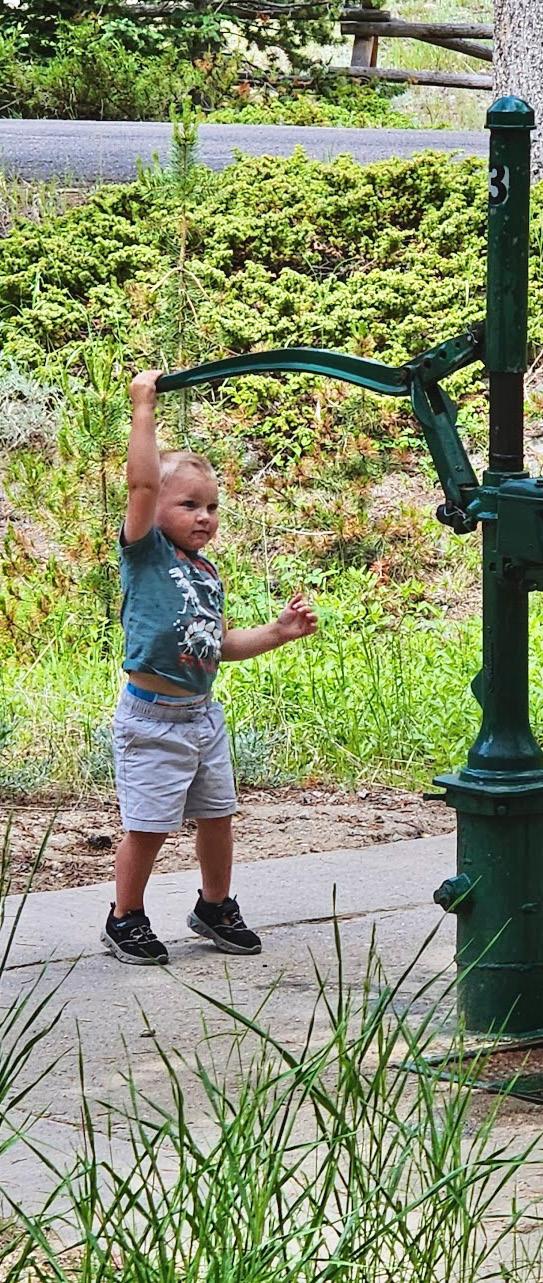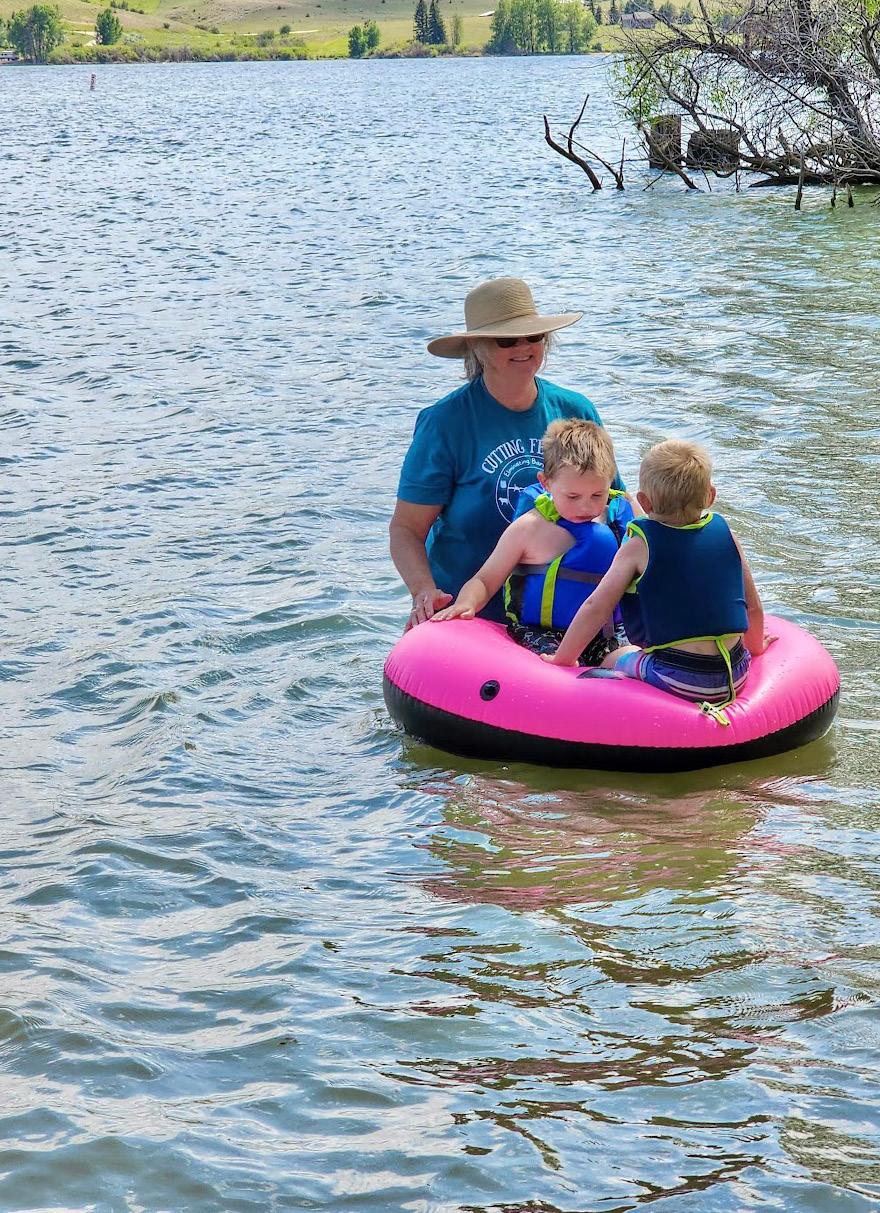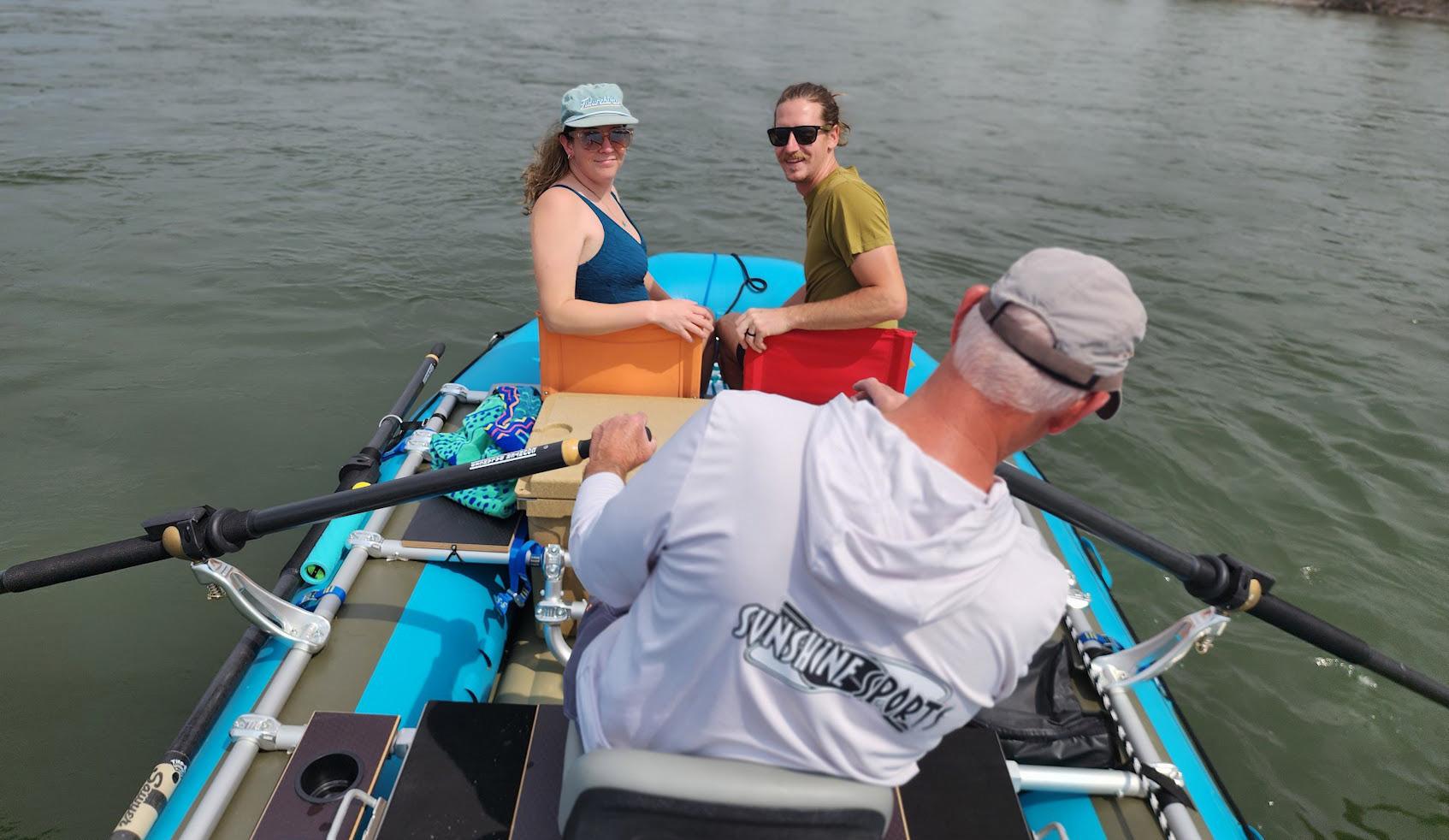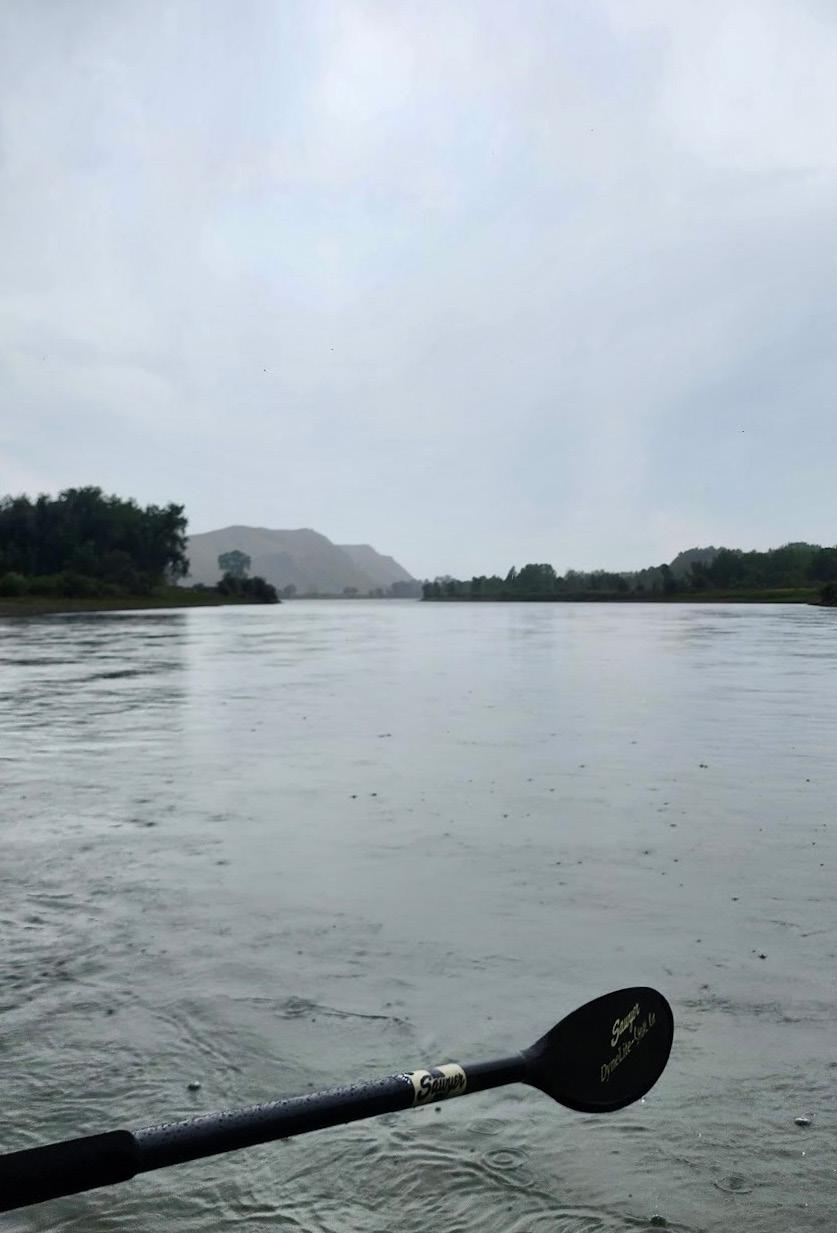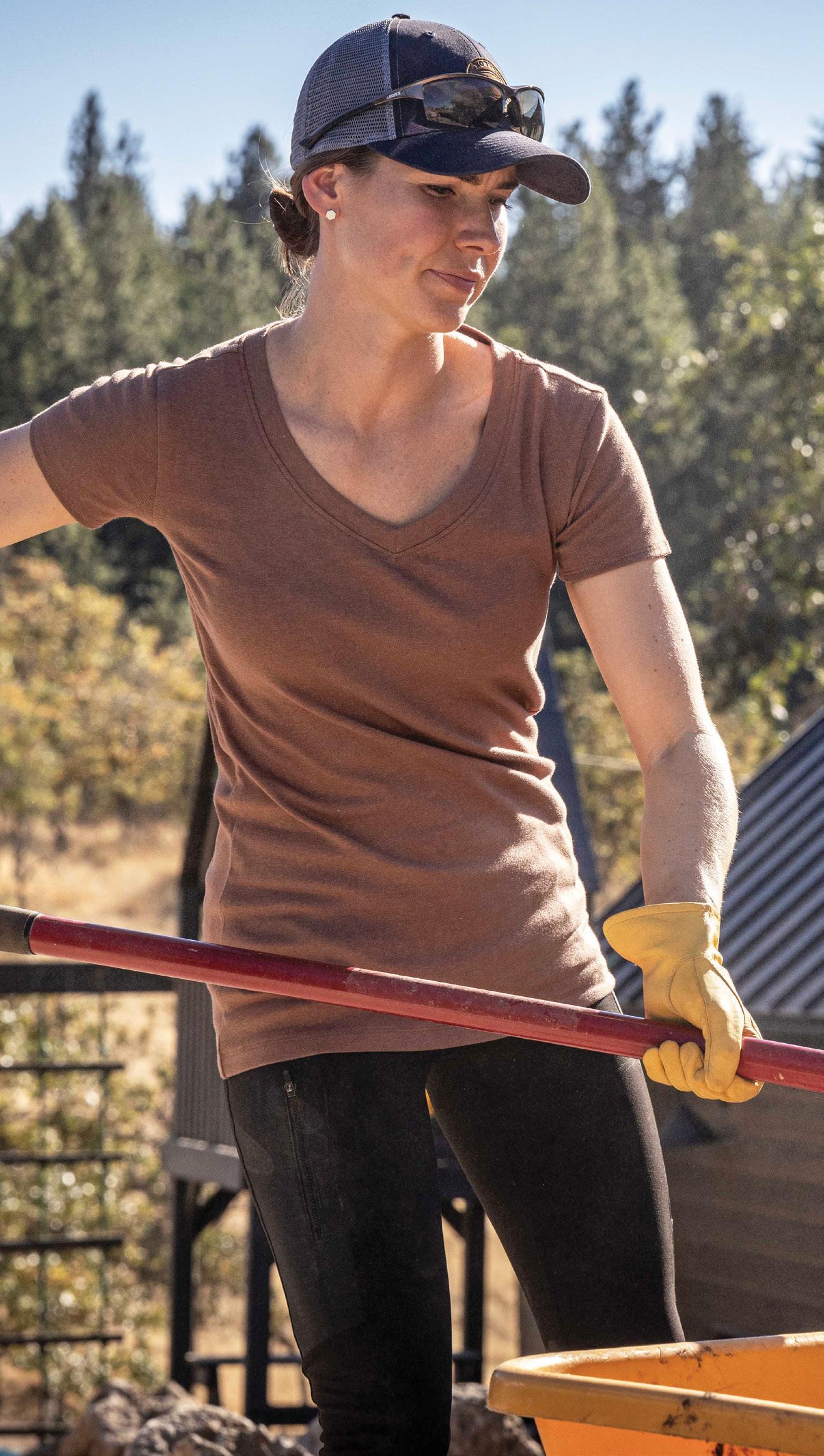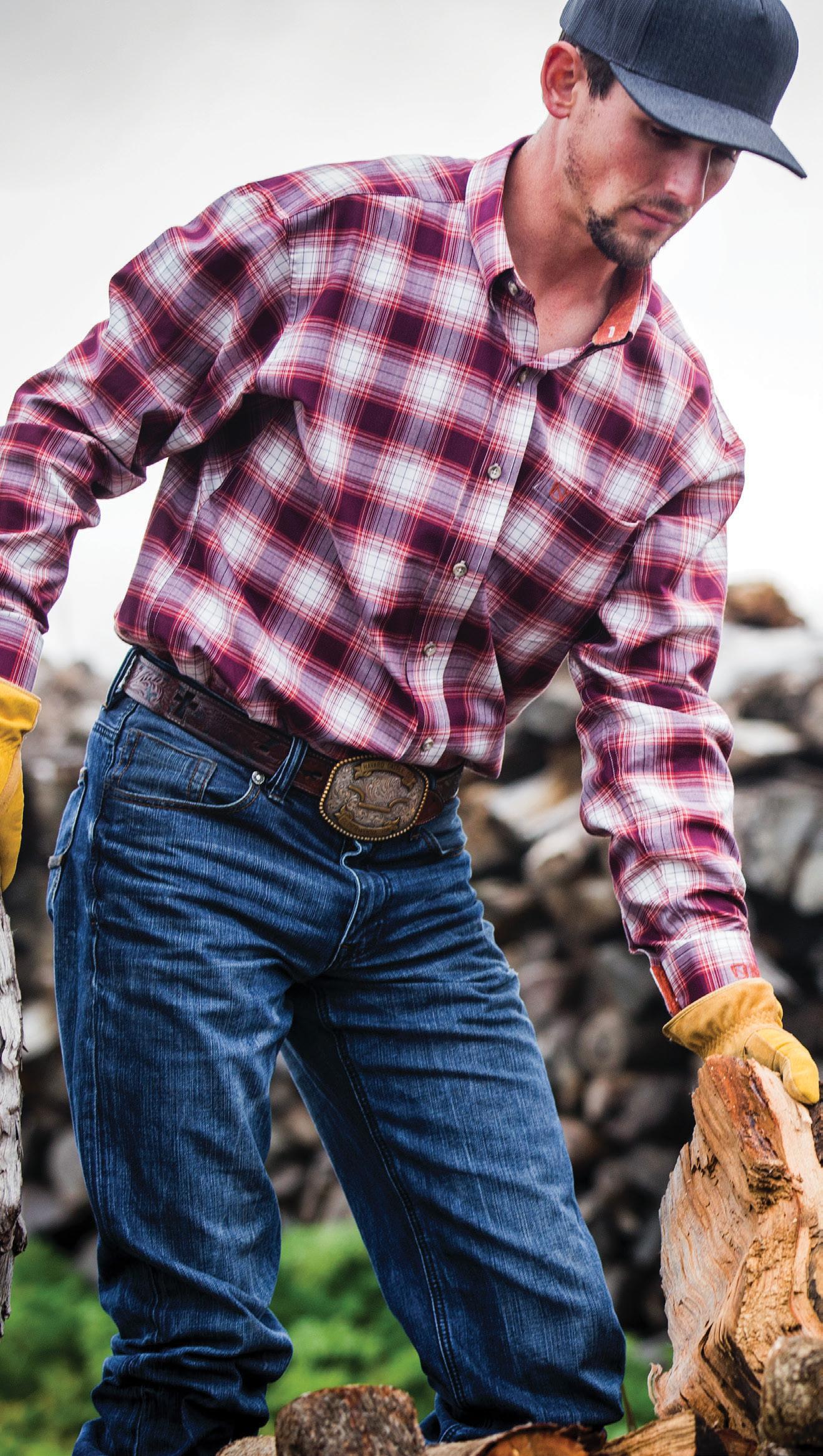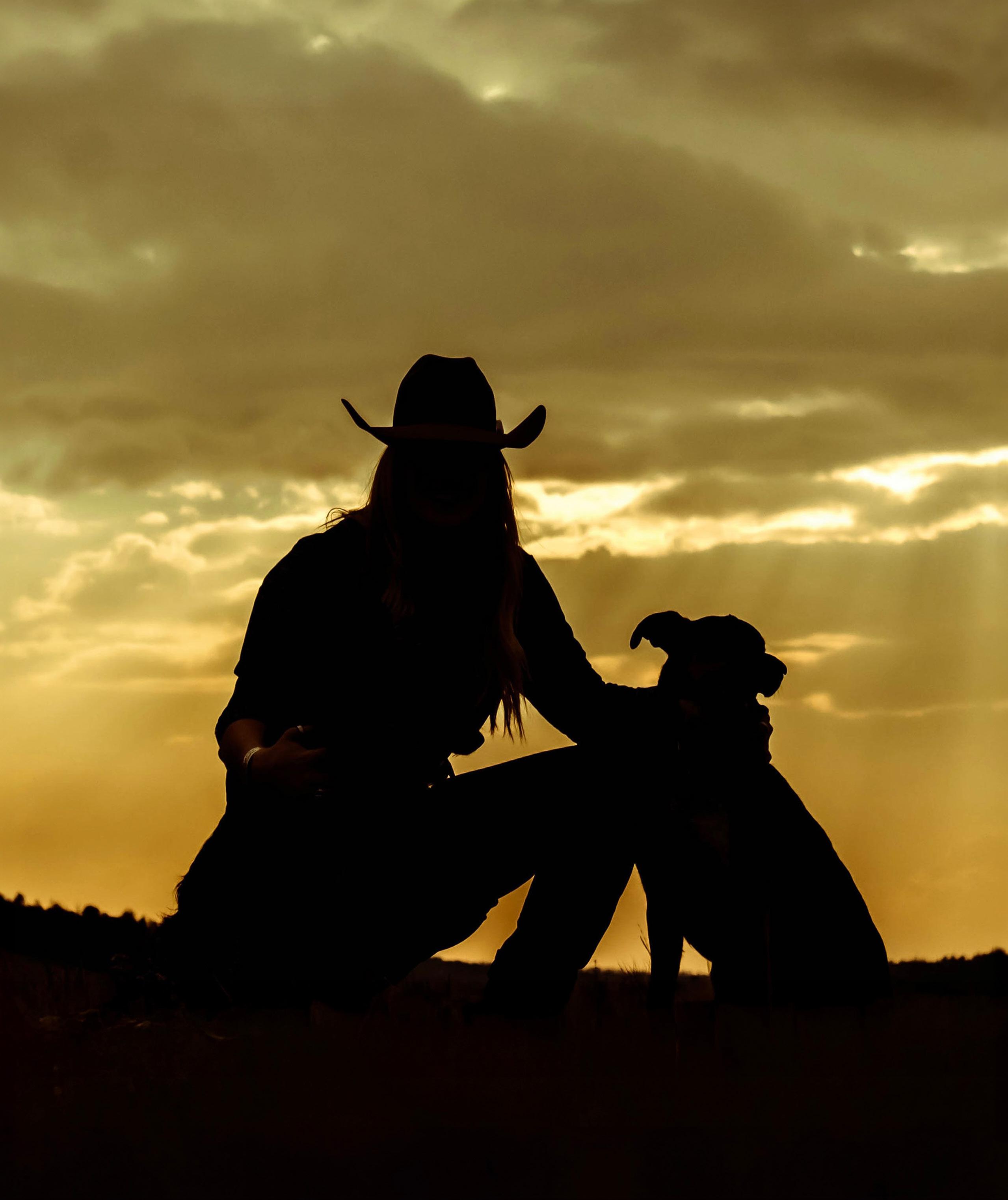

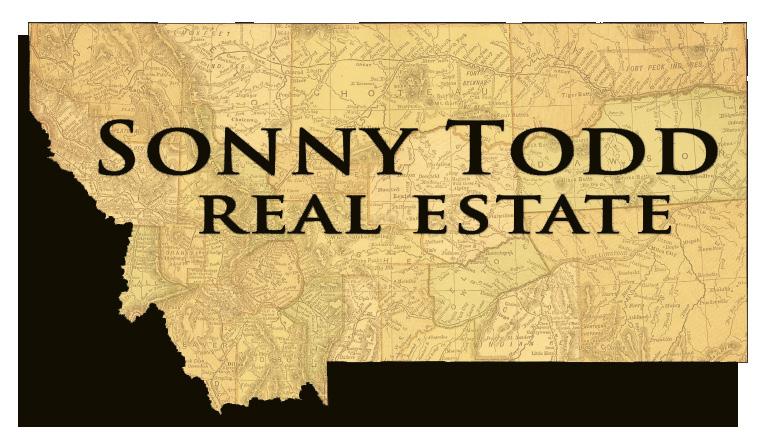


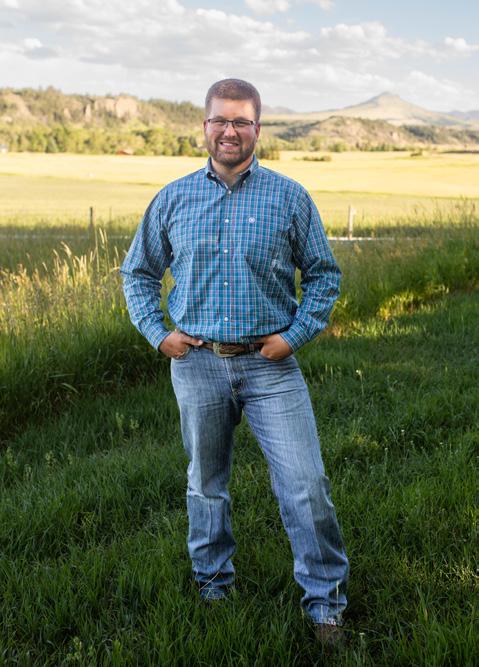
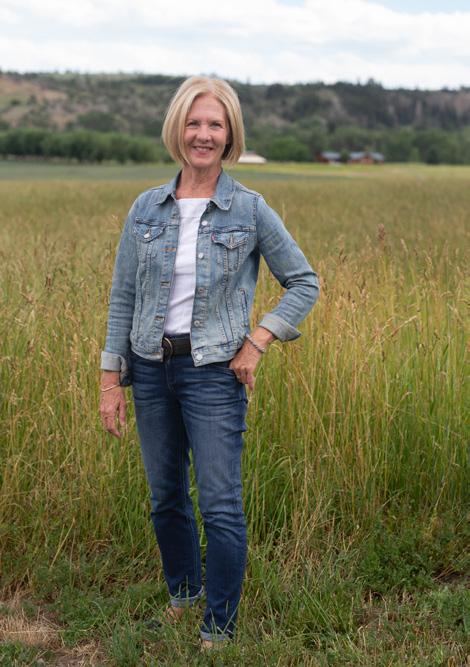
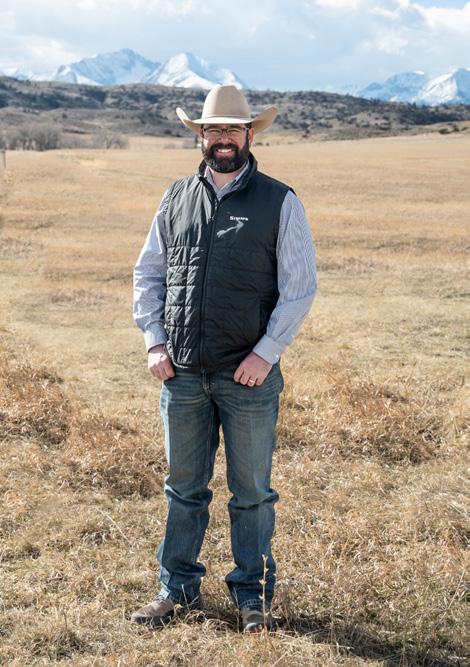



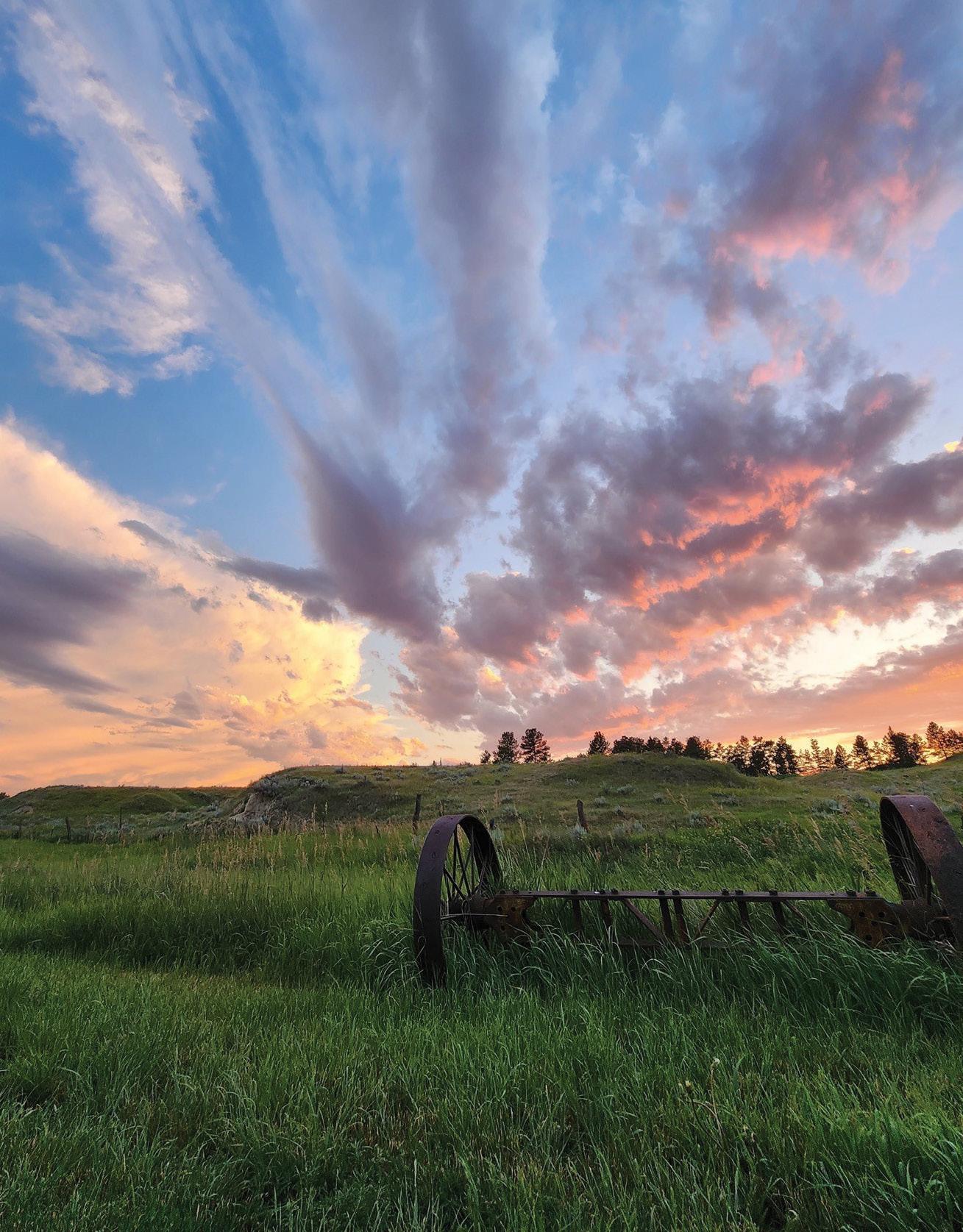













Convenient, innovative financial solutions, backed by the power of local management and decision making. This commitment empowers our team to make quick, informed, local decisions, ensuring you receive the services you need, when you need them.

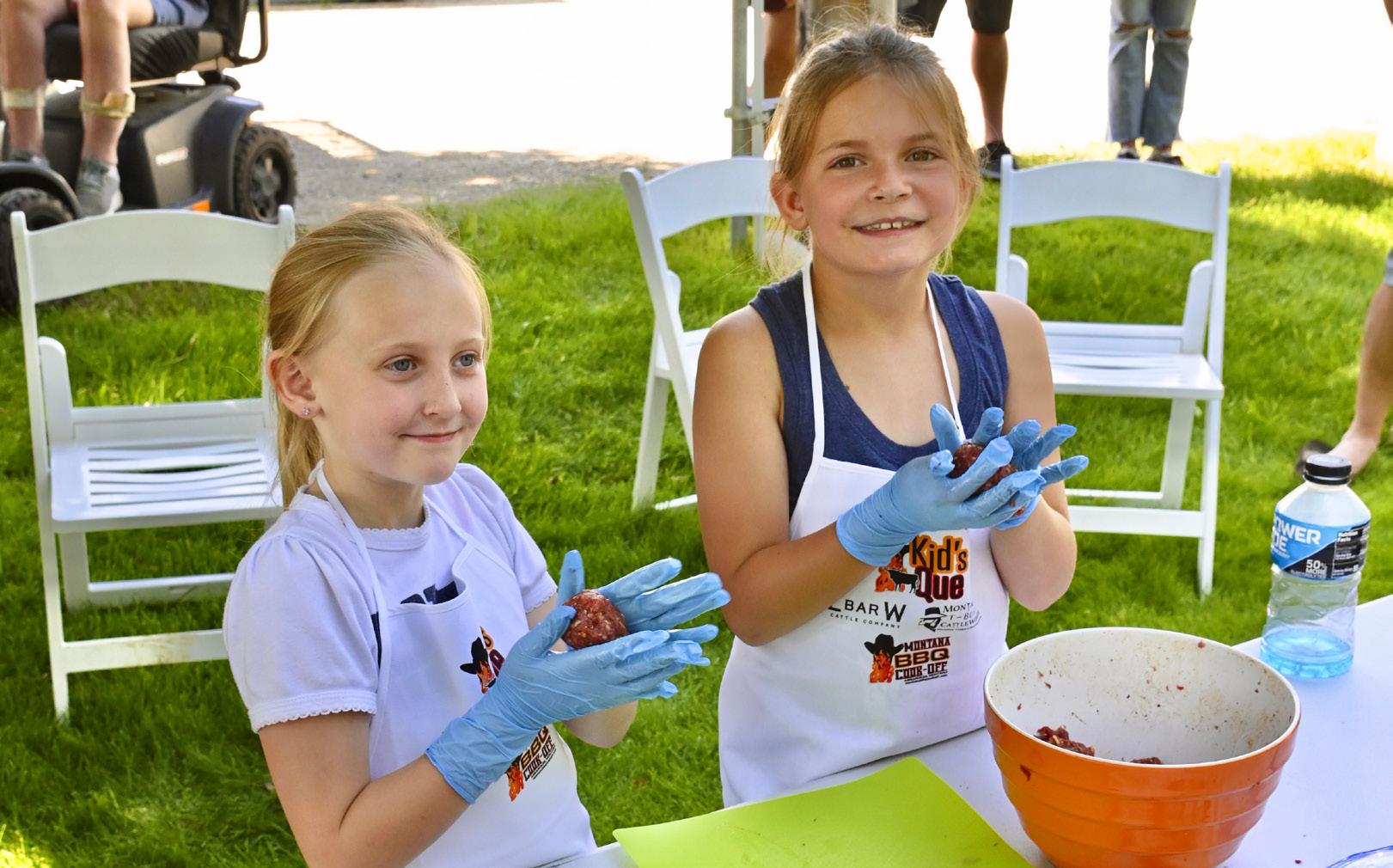
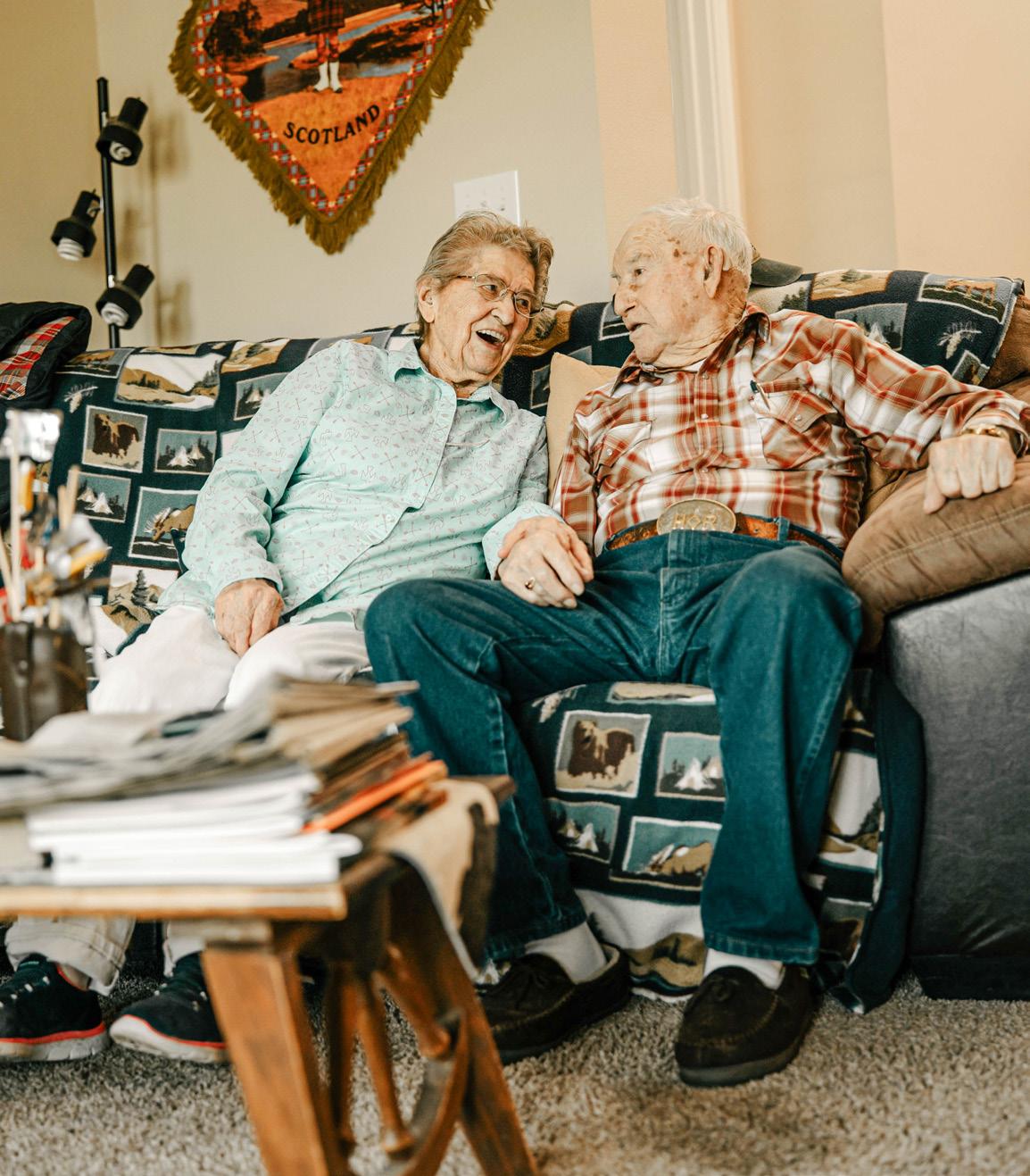
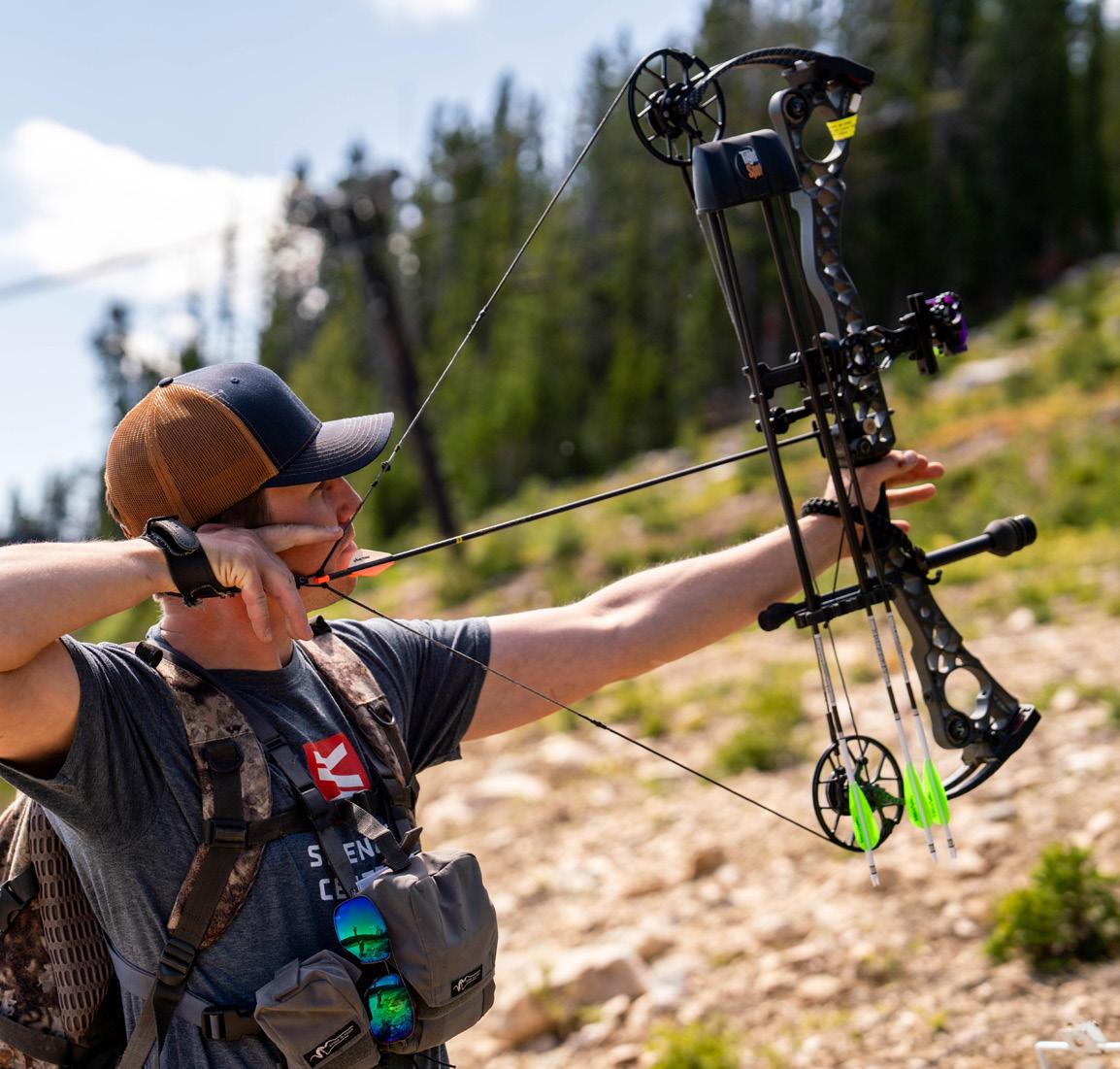



While we were planning this issue we were struck, once again, by a common theme weaving its way through the stories. Determined young chefs at a competitive barbeque in Absarokee; a centenarian couple from Nye married for 77 years; passionate people who have turned their much-loved hobbies into successful careers - authenticity reigns again! We often say we feature articles that educate, enlighten and entertain and this issue delivers!
This is our 25th issue since purchasing Raised in the West seven years ago. In that time, we’ve met hundreds of remarkable people who have allowed us a glimpse into their lives. We’ve been invited to dozens of amazing community events, celebrations and activities. We have loved sharing historical stories of the past that have shaped our communities and our state in extraordinary ways. Doors have opened for us that couldn’t have opened any other way and we’re blessed beyond measure.
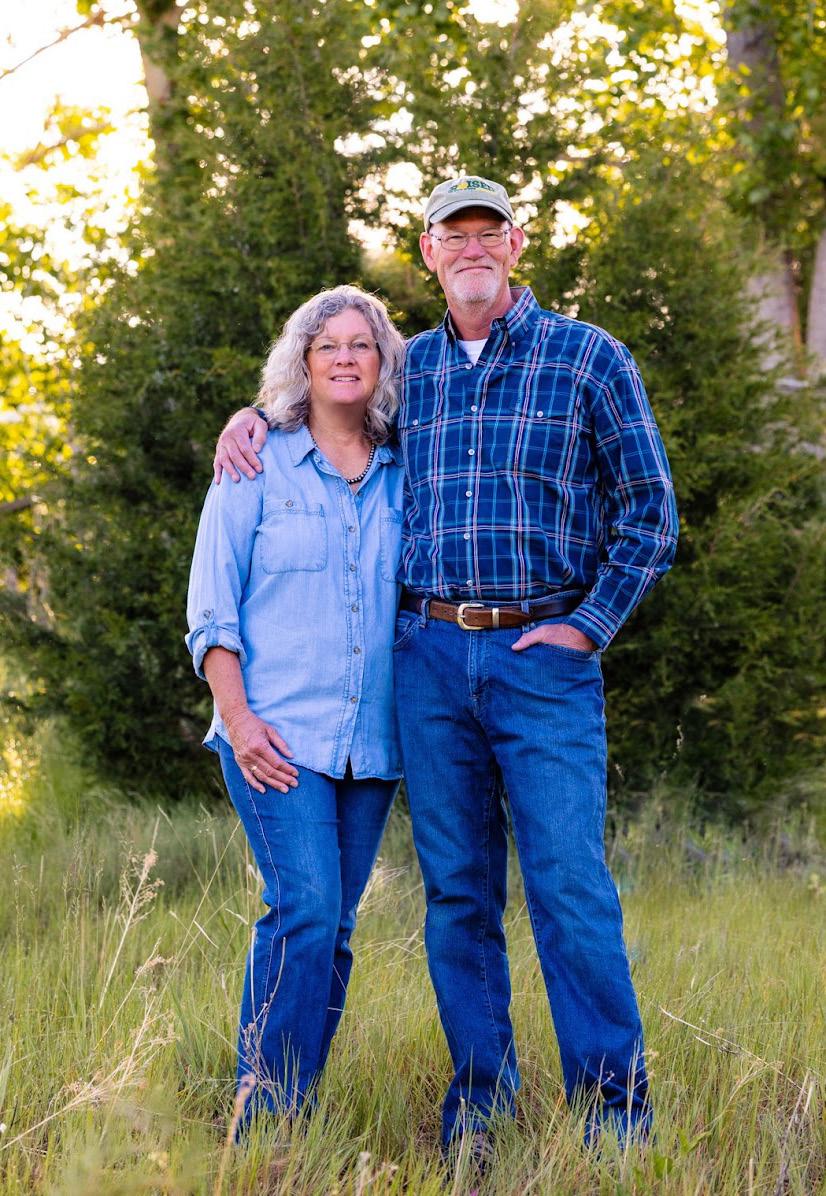
We wouldn’t be able to do what we do without our faithful advertisers. In a time when so many businesses are turning exclusively to online advertising, our loyal advertisers have chosen to continue with us. Dozens have supported us since the first issue, and we are eternally grateful.
We’ve grown, continually expanding our area to reach more folks. We distribute across eastern and southcentral Montana and northern Wyoming where thousands grab our complimentary copies in our distribution spots.
For those that enjoy reading our issues online, that’s grown too. Every issue in its entirety is available on our website. We now have subscribers in 26 states –most of whom have roots back home. Often, we receive notes from folks who know someone in a feature or know someone else that knows them. It keeps our publication relevant and real and easy to relate to. We hear stories of people hanging on to issues for months, even years, sharing articles with friends or saving new recipes or gardening tips.
To top off the celebration of our 25th issue, we were just named the 2025 Great Montana Western Magazine by Montana Pro Rodeo Hall & Wall of Fame. We are surprised and humbled and extremely honored.
We couldn’t do this alone. We give credit to our remarkable writers, photographers and our copy editor, assistant publisher, website designer and our incredibly talented graphic designer, Melanie Fabrizius. All involved put their heart and soul into every issue.
We love doing what we do. Our publication is wholesome, nonpolitical and positive; God willing, we’ll continue to bring you RITW for years to come!
Thank you to everyone for your support, we sincerely appreciate it.
“Rejoice always, pray without ceasing, give thanks in all circumstances, for this is God’s will for you.” 1 Thessalonians 5:16-18
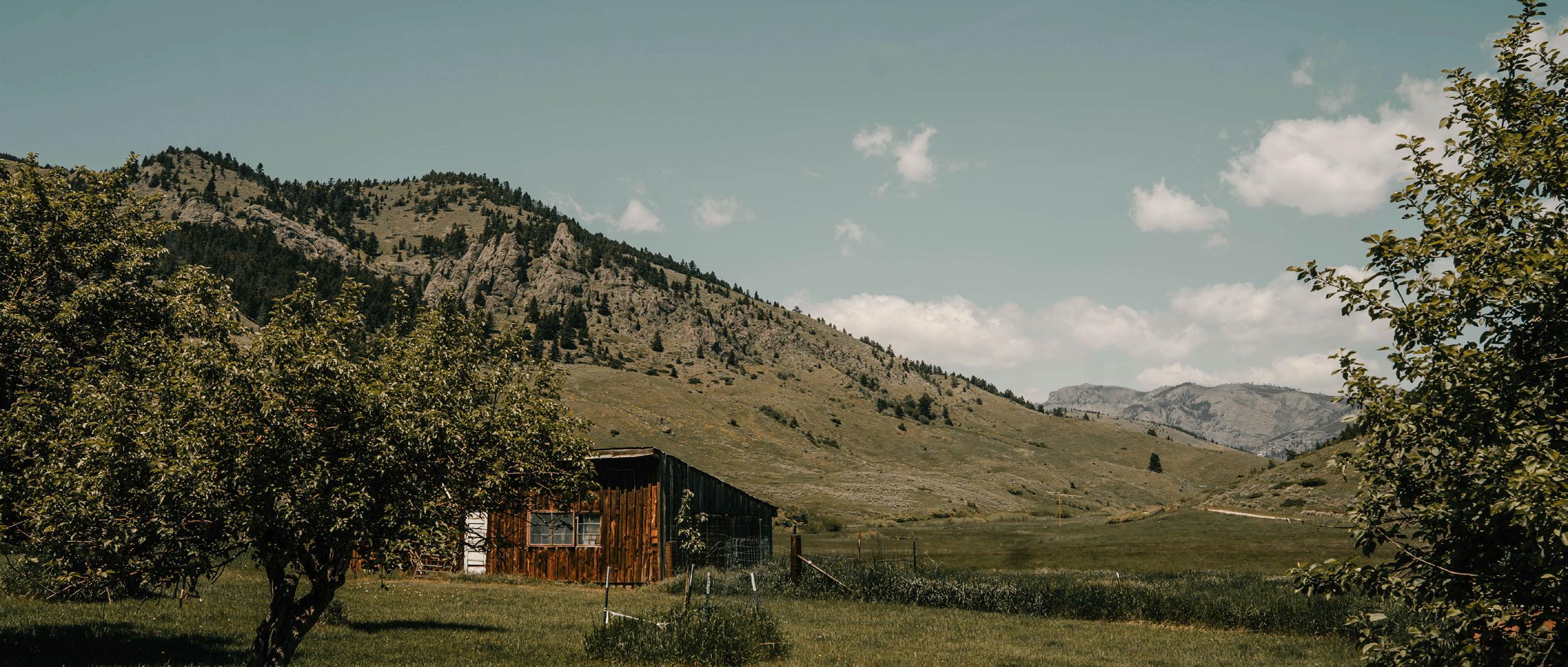





Melanie grew up on a farm in Montana and is currently living in Billings. Her life-long love of art led her to a career as a freelance graphic artist. Melanie enjoys camping, rockhounding, fashion and watching the sunset with her two dogs, Comanche Sue and Pistol Annie. Check out her art at www.fancymf.com



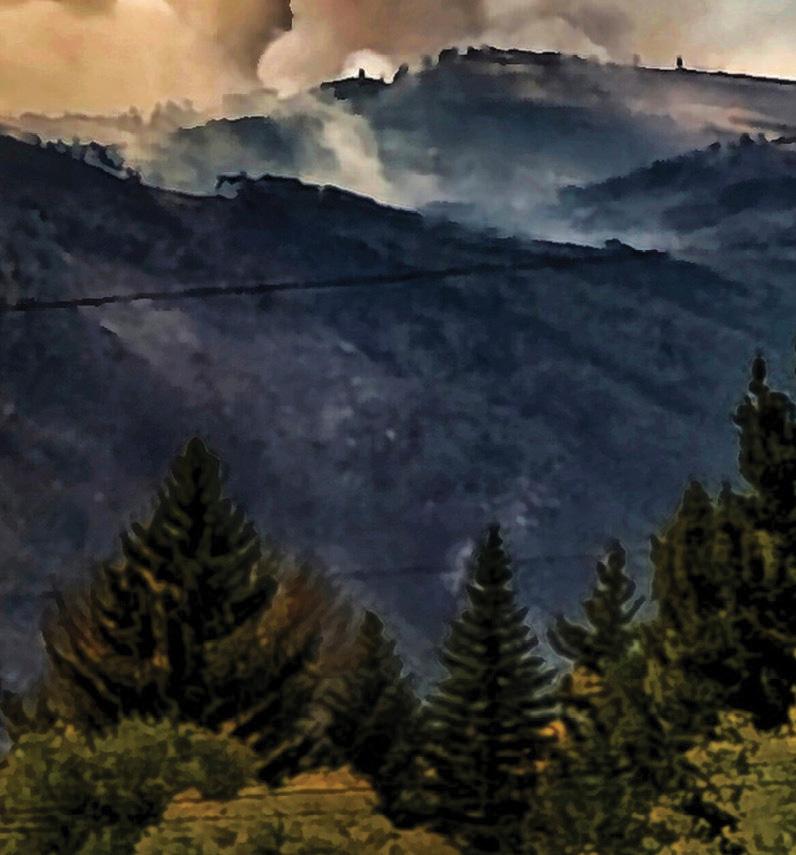
Melanie was born and raised in Billings and is a fifth generation Montanan. She moved to Wyoming in 2013 to attend the University of Wyoming where she earned a degree in Marketing. She fell in love with Wyoming and her husband, Blaine, and the two of them make their home in Lander. Mel enjoys climbing, painting (Acrylic Melon), skiing, biking, graphic design, and her crazy cat. She can be reached at publisher@adventuresinthewest. com
Carolyn is the fourth generation from a Montana ranching family. Raised on a registered Hereford cattle ranch at Reed Point, MT, cattle and horses are in her blood. But so is writing. She has been freelance writing since high school for various agricultural publications. Married to John Deeney, the couple ranch near Grass Range and raise Hereford and Red Angus cattle.
Originating from a fifth-generation Montana ranch, Kayla now ranches with her husband, Chace, and owns Ranch Raised Media. Whether it be through photography, writing, social media, graphic design, or web design she strives to share the story of the western lifestyle on a day-to-day basis. Follow Ranch Raised Media on Facebook and Instagram or visit www.ranchraisedmedia.com to view her work.
Great Falls writer, Amy Grisak balances her life between the mountains and the prairie looking for stories that catch her interest. This award-winning author shares what she loves with readers, whether it’s finding gorgeous hikes in Glacier National Park or how to push the gardening envelope in our challenging Montana climate. She’s published several books which can be found at www.amygrisak.com
Jean is a cookbook and children’s picture book author, freelance writer and has been a weekly columnist with Western Ag Reporter for over 15 years. She lives near the Beartooth Mountains in Red Lodge with her four children. Most days she can be found outdoors with her animals, on a hike, at her children’s activities, or cozying up writing and reading. You can find her books at www.jeanpetersen.com
Laura believes everyone has a story that’s worth telling, and she’s always honored to do the sharing. Her writing career spans more than 25 years, and her work can be found in newspapers and magazines throughout the region. She has a knack for personal profiles and feature writing. She shares her adventures with her husband and daughter where they can be found hiking in the mountains or floating the rivers near their home in Red Lodge. She can be reached at laura@penandlight.com
Theresa was raised on a ranch in Northern Wisconsin where her family also owned a hunting lodge. From a young age she carried a camera and recorded the rural lifestyle around her. Farming, ranching, hunting and horses are her favorite subjects to photograph. Moving to Montana fueled her passion for outdoor photography. She’s built her photography business capturing the spirit of the Western lifestyle through weddings, portraits, outdoor events and recently added equine sale photos to her services. Find her work at wildfillyphotography.com

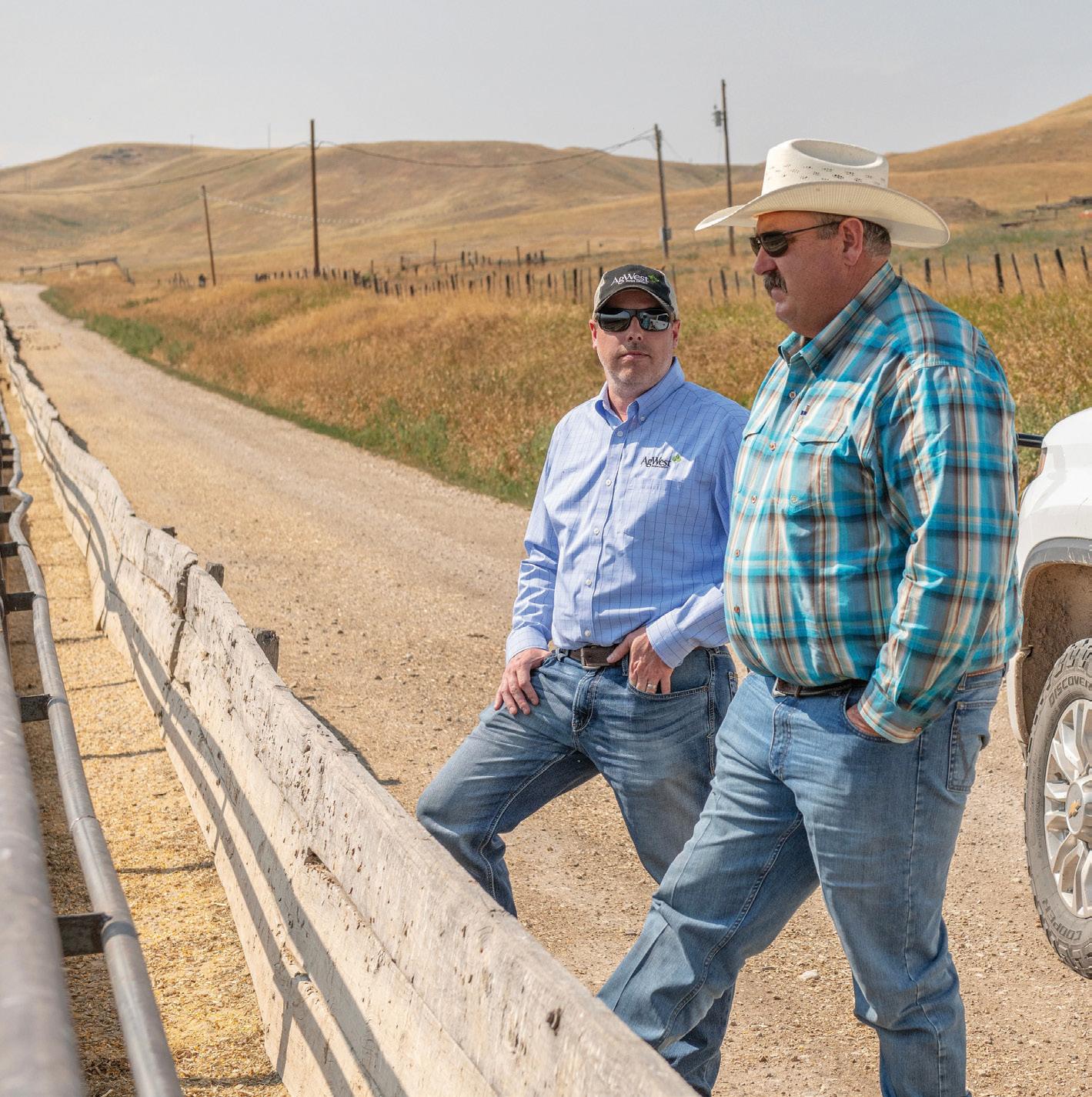
Contact us at 866 552 9172 or visit AgWestFC.com to learn more. Put earnings back in your pocket with competitive borrowing rates and an annual cash dividend through our Patronage Program. In 2024, AgWest paid the equivalent of 1.25% of eligible average daily loan balances back to our customer-owners.
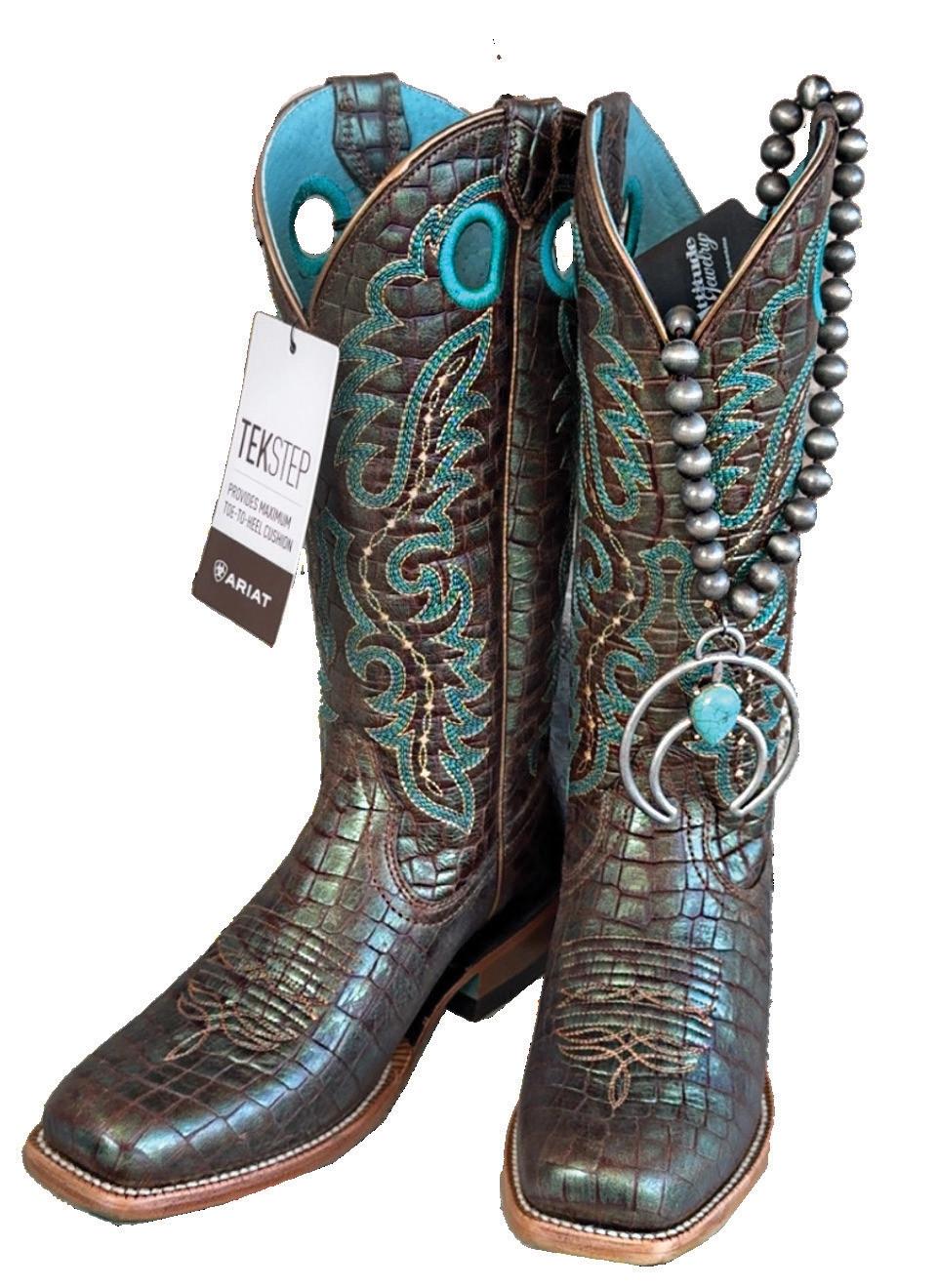

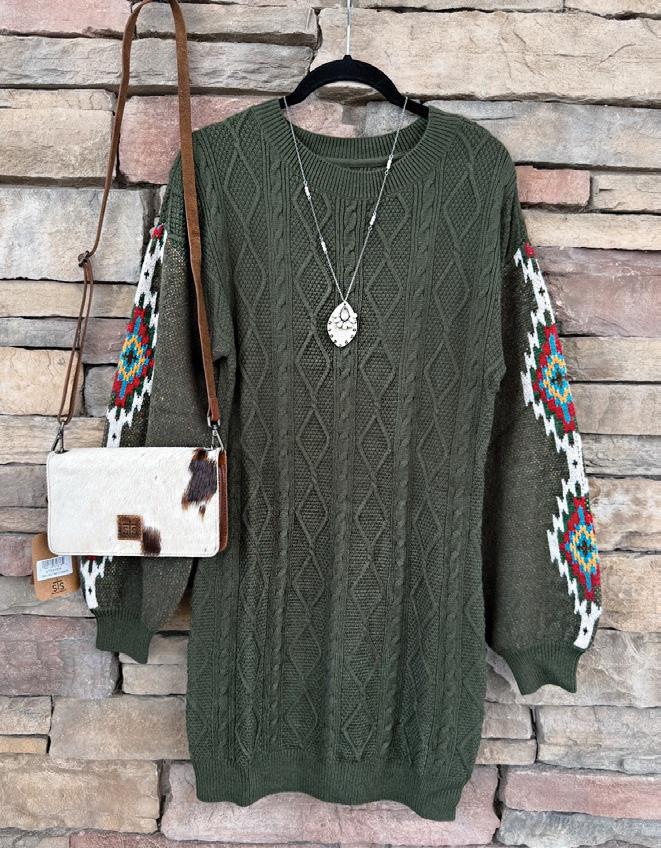
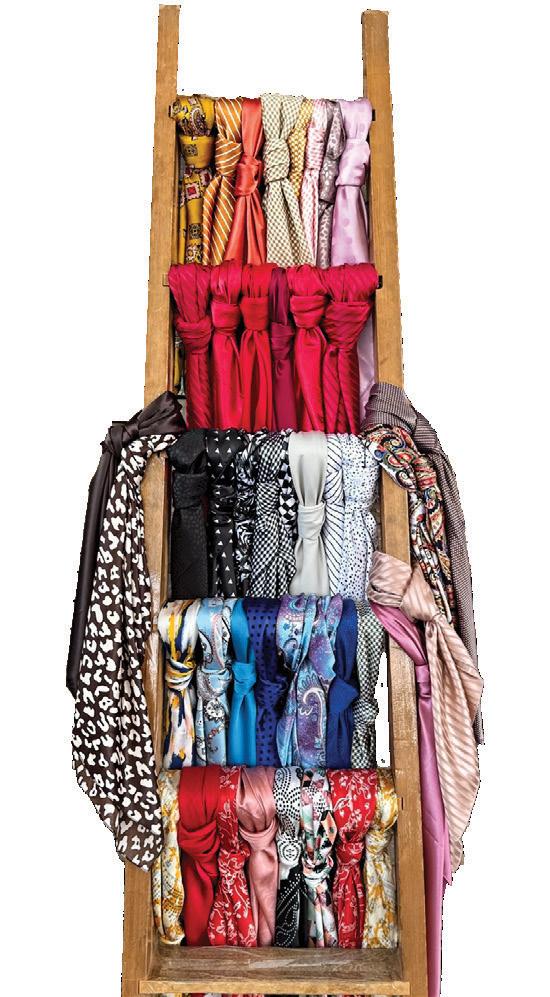
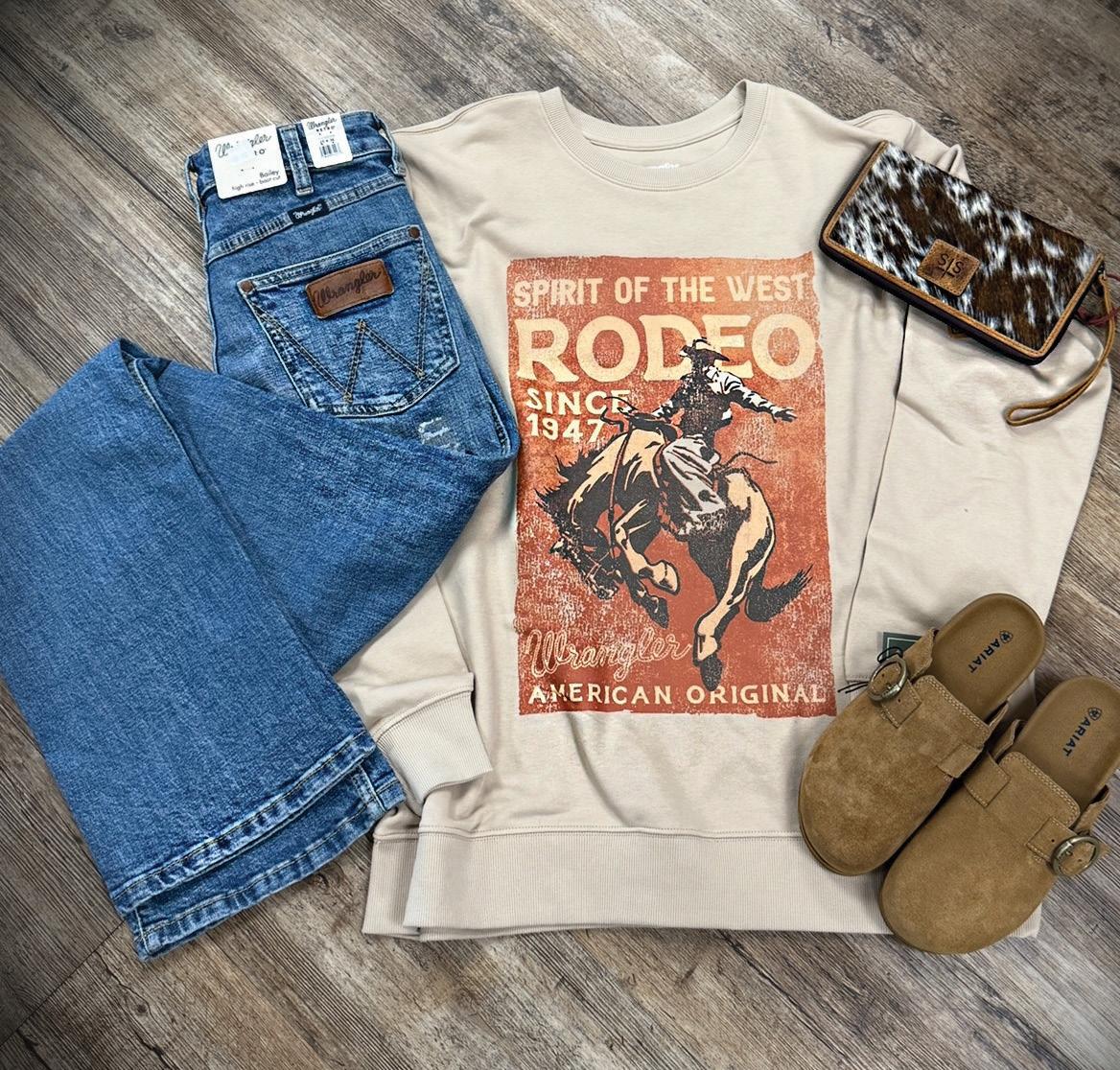


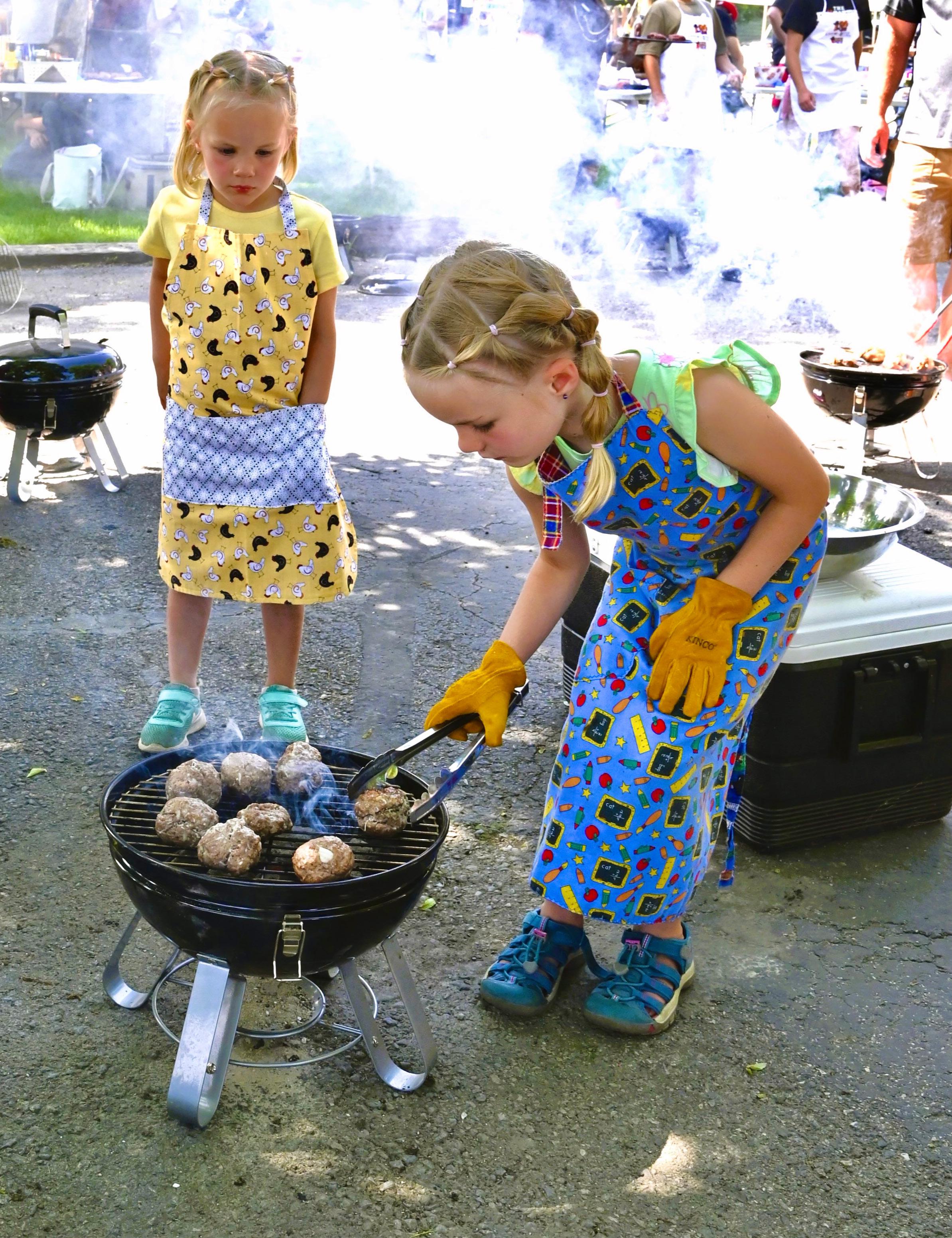

The tantalizing aroma of seared meat teased the crowd. Smoke rose from the portable charcoal grills, manned by chefs ranging in age from 6 to 13; all busy turning patties and kabobs, rolling meatballs and checking temperatures. It was an exciting time at the 3rd Annual Montana BBQ Kid’s Que Cook-Off in Absarokee this summer.
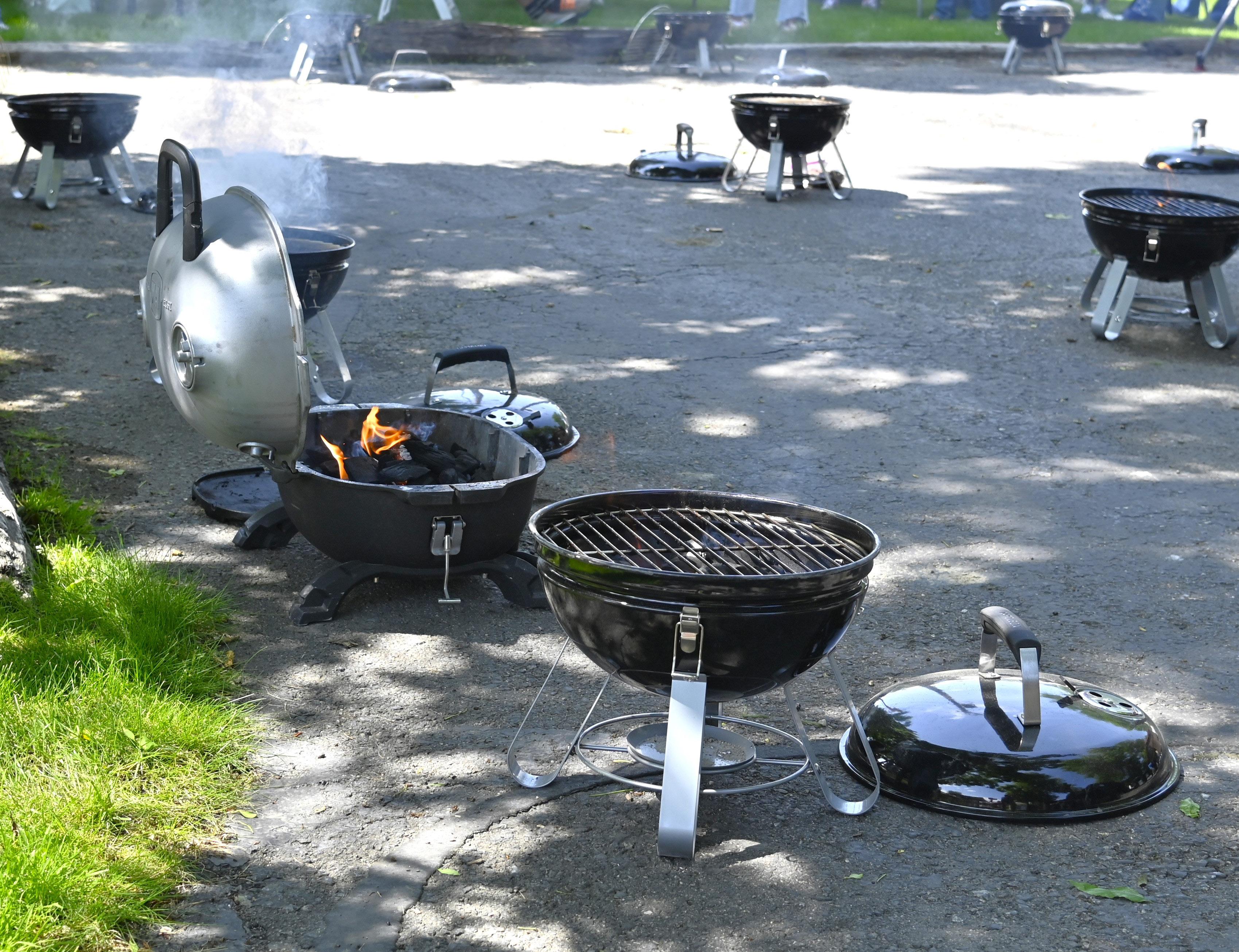
L Bar W Ranch out of Absarokee, kicked off the competition by donating the main ingredient in everyone’s dish - hamburger. Each chef started with two pounds of ground beef and, using their best recipe and other ingredients, worked their magic on burger dishes; each hoping for the grand champion prize.
Before the grilling could begin, kids chopped, mixed and formed their dishes at tables set up just off the outdoor cooking area. Parents were allowed to coach the youngest chefs, but physical assistance was prohibited.

rubber gloves and aprons that hung below their knees, their nervous enthusiasm was apparent.
“The funnest part of the day was probably cooking with my best friend,” Maisyn said, “And the preparation. It’s fun getting all the things together.”
THE FUNNEST PART OF THE DAY WAS PROBABLY cooking with my best friend.
Working as a team, 7-year-old Maisyn Barthelmess and 8-year-old Scotlyn Romaine studied their recipe and transformed regular burger patties into burgers with a “punch.”
— MAISYN BARTHELMESS
“We added onions, eggs, and spicy brown mustard to the hamburger,” Maisyn said. “It was fun, and they were really good!”
Coached by Maisyn’s mother, the girls tested the recipe a couple of times before they came to the competition. Wearing oversized
Next to their table, a friendly sibling rivalry had brother and sister, Gannon and Grier Smith, 11 and 13, taunting each other as they made burger patties. Their lighthearted banter over whose burger would be best continued throughout the competition.
Grier competed last year and won, and her brother decided that he’d go for it this year. He worked diligently on his burgers and as he finished forming perfect patties, he poked a hole in the center.
“That’s a trick I learned to keep the moisture in,” he said. “I think the judges will like it.”
As the time for cooking approached, the excitement level continued to rise.
At the Griffin table, sisters, Payton, 7 and Parker, 4 and a friend were working on meatballs. Though Parker was too young to compete, the generous judges said she could help. It was her job to prep the onions. Thankfully her mom thought ahead, and a pair of swim goggles kept the tears at bay.

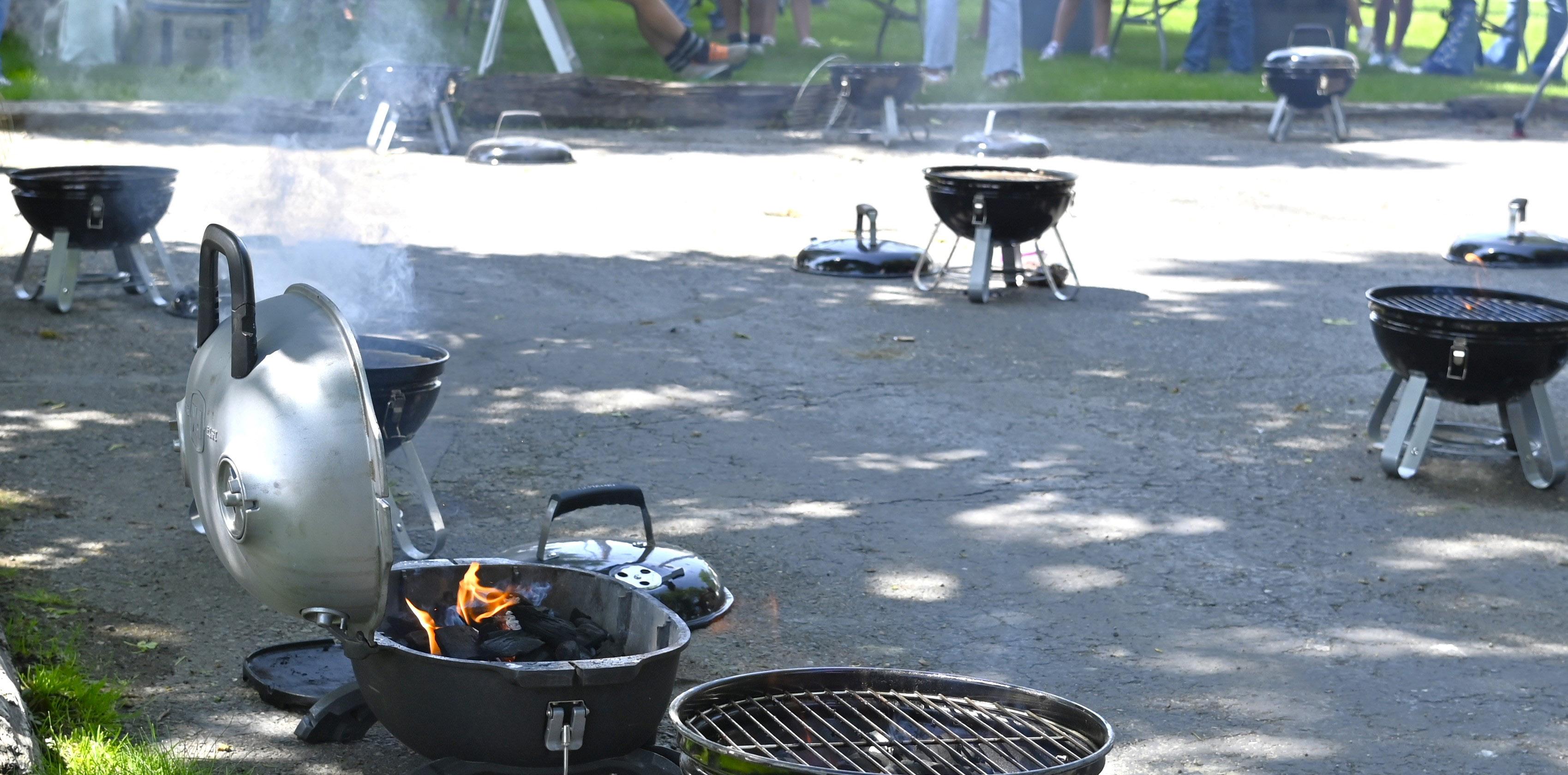

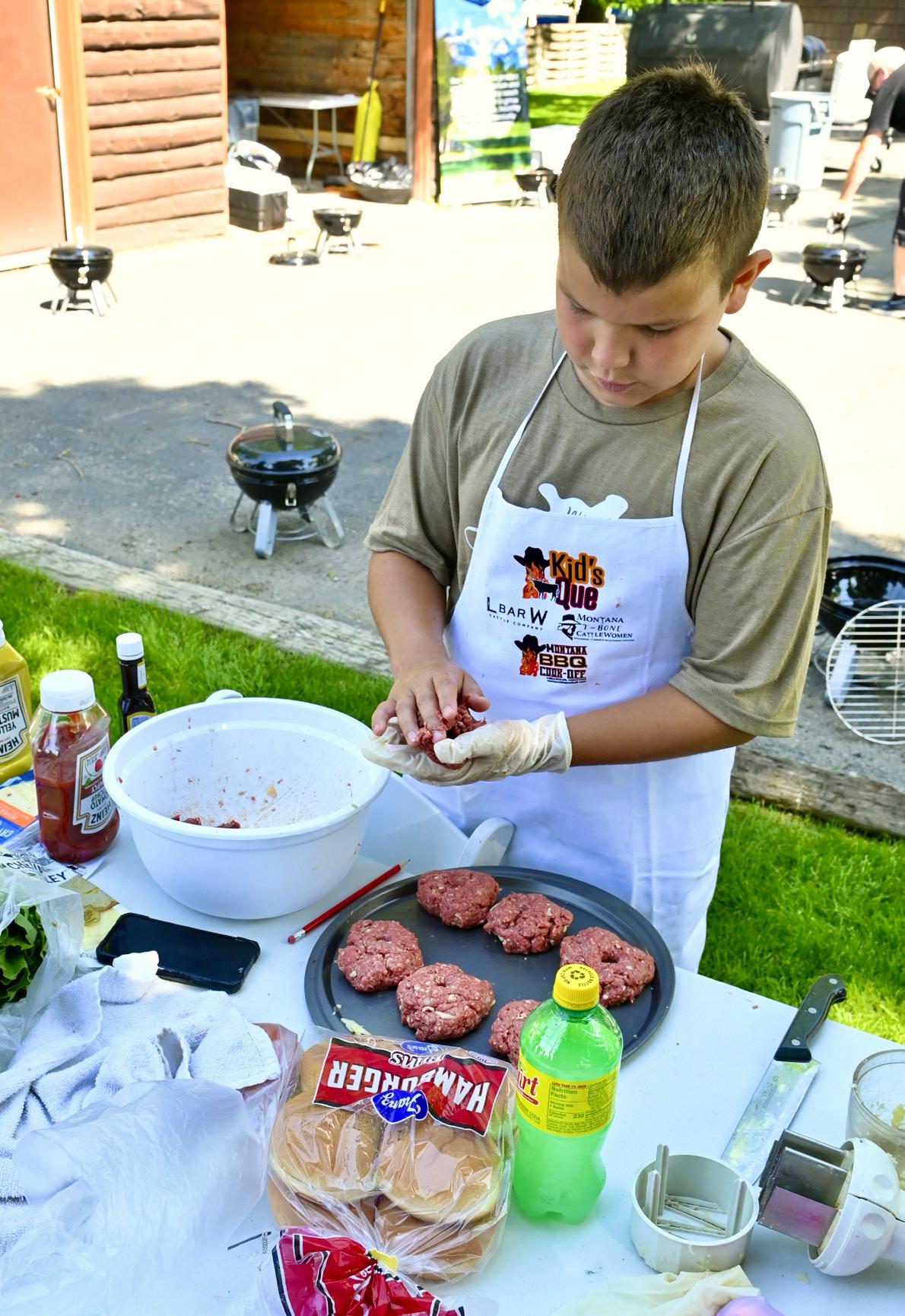
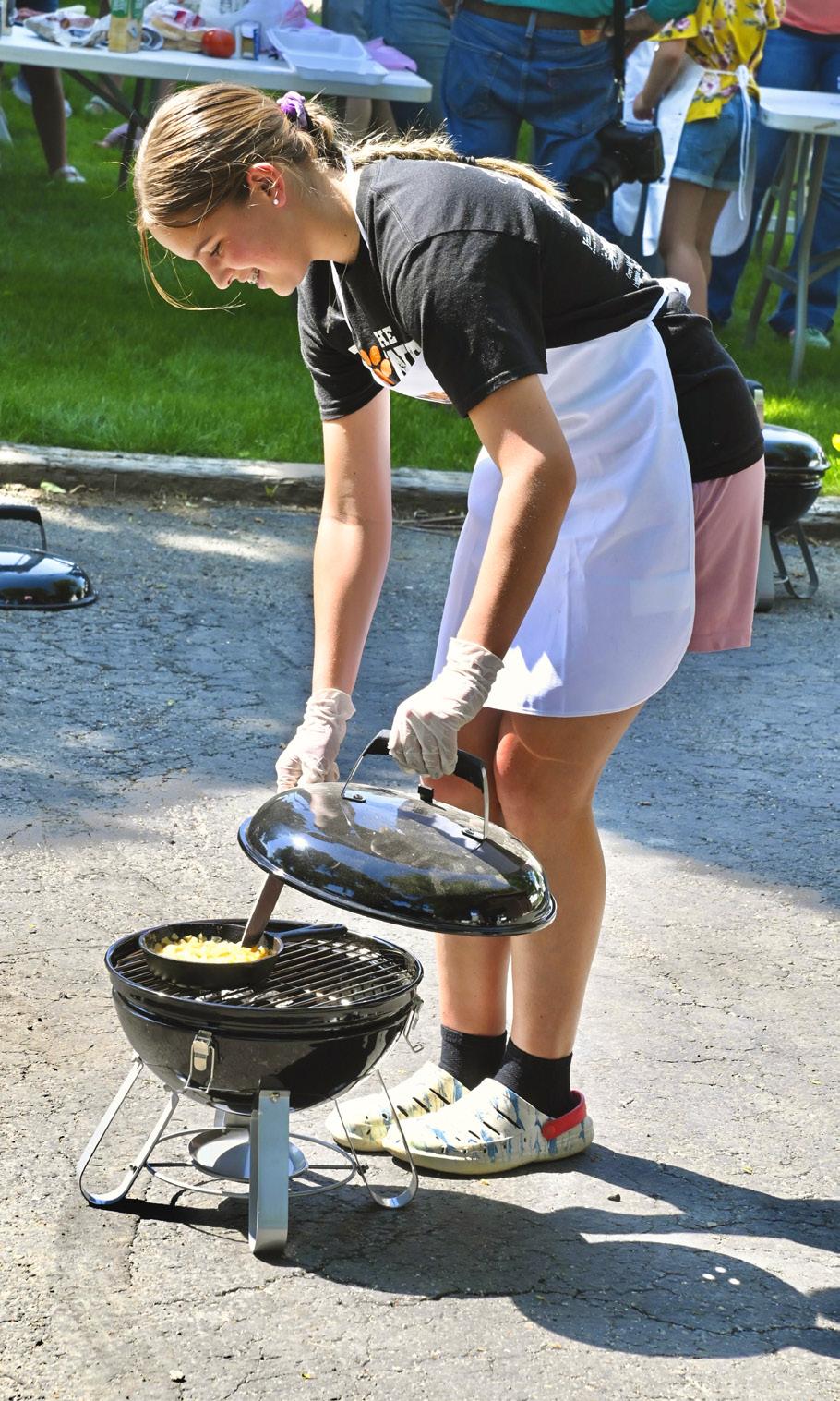
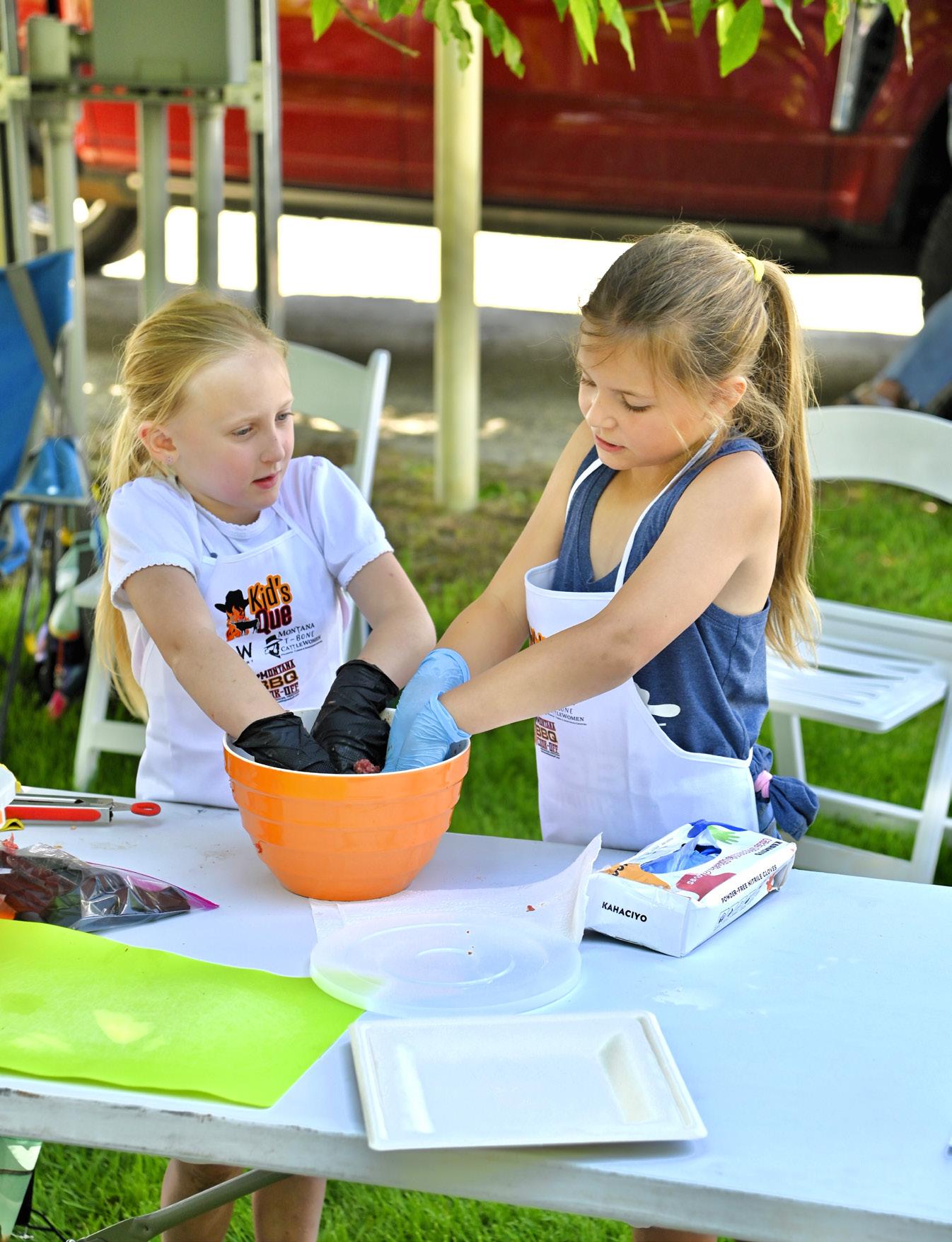
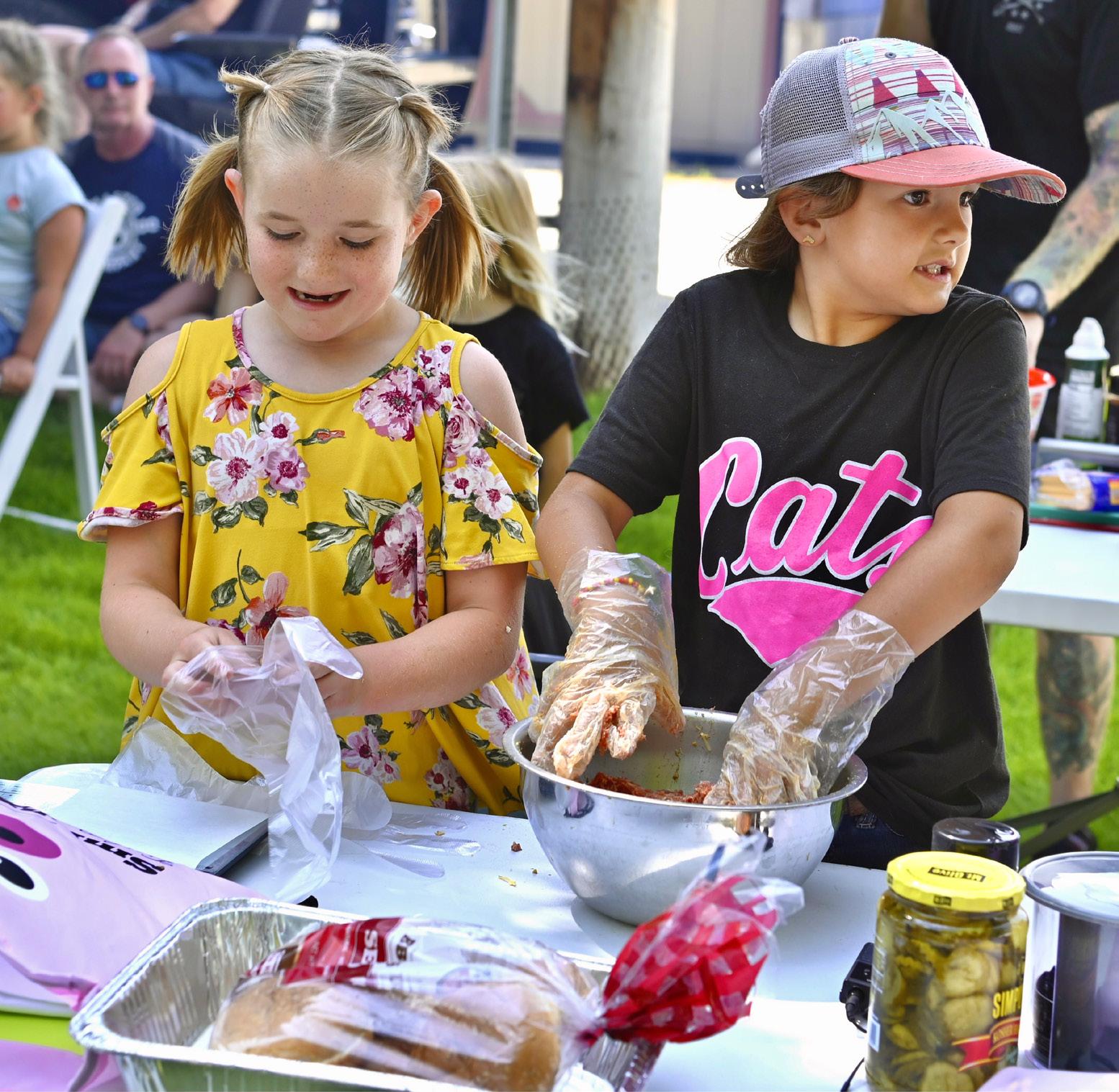
Payton was the head chef and as such; the one at the grill. When the meatballs were ready for the heat, she put on leather gloves and cautiously watched - turning them at the fiveminute mark to ensure they turned out perfect, using a thermometer to test for doneness.
“It needed to be at 160 degrees,” she said, “That meant that the meat was done cooking.”
Moving around the miniature barbeque, Payton looked more like a ballerina than a chef. But she was taking the day seriously and claimed her favorite part was cooking on the miniature grill.
“My meatballs were yummie,” she proclaimed later. “We Won!”
“This is such a great opportunity for the girls,” Jessica Griffin, mother of the young chefs, said. “They’ve been helping me cook since they could stand on a stool.”
Jessica was allowed to coach, but Payton was emphatic that she was the boss. She said her best tip for cooking was to make sure to wear leather gloves when you barbecue to keep from burning yourself.
Back at Scotlyn and Maisyn’s table,
the girls were ready for the grill. Mixing in “special spices,” gave them an edge they hoped the judges would appreciate.
“We seasoned them really good,” Maisyn exclaimed.
Judged on presentation, tenderness, taste and overall appearance, the kids were competing for cash prizes and medals thanks to the generosity of the Montana T-Bone Cattlewomen, who also presented an educational component demonstrating where the cuts of meat are found on a carcass.
The Montana Barbeque Pro Shop in Billings also provided gift certificates to the winners.
Fifteen aspiring young chefs in three age groups competed. Six of those competed as a team. The winners were announced on Saturday at the Montana BBQ Cook-Off. With yearly growth, the competition hopes to attract more competitors next year, especially in the older age division. In the 10 – 15 age group, Kellyn Anderson was 1st and Ezrick Dyen took 2nd. In the 6 – 9 age group, Payton and Parker Griffin were 1st and Mila Anderson was 2nd.
“It’s a great opportunity for all ages of kids,” Staci Grimm, mother of a competitor and one of the organizers
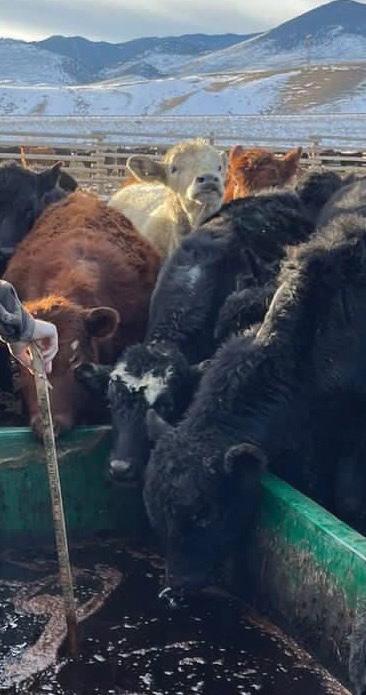
Liquid Feed is an innovative, cost-efficient formulation geared to forward thinking cattlemen. • no waste • no storage fees • no delivery costs • no wear-and-tear on vehicles
and BETTER








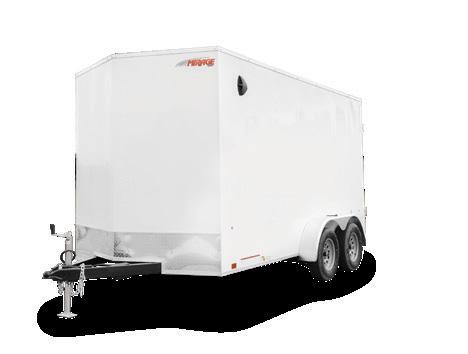




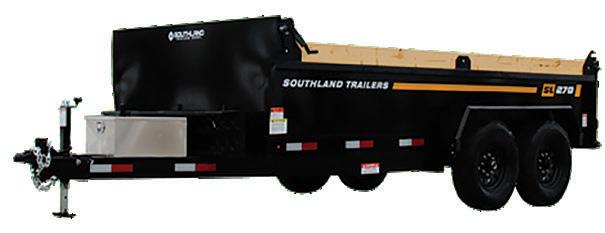



— STACI GRIMM
said. “Next year we hope to appeal to area
and FFA clubs to
As the day wound down, Gannon Smith was already planning for next year and said he was thinking about other ingredients that could be added to burger patties to make them stand out.
“I’m keeping it a secret until then,” he smiled.
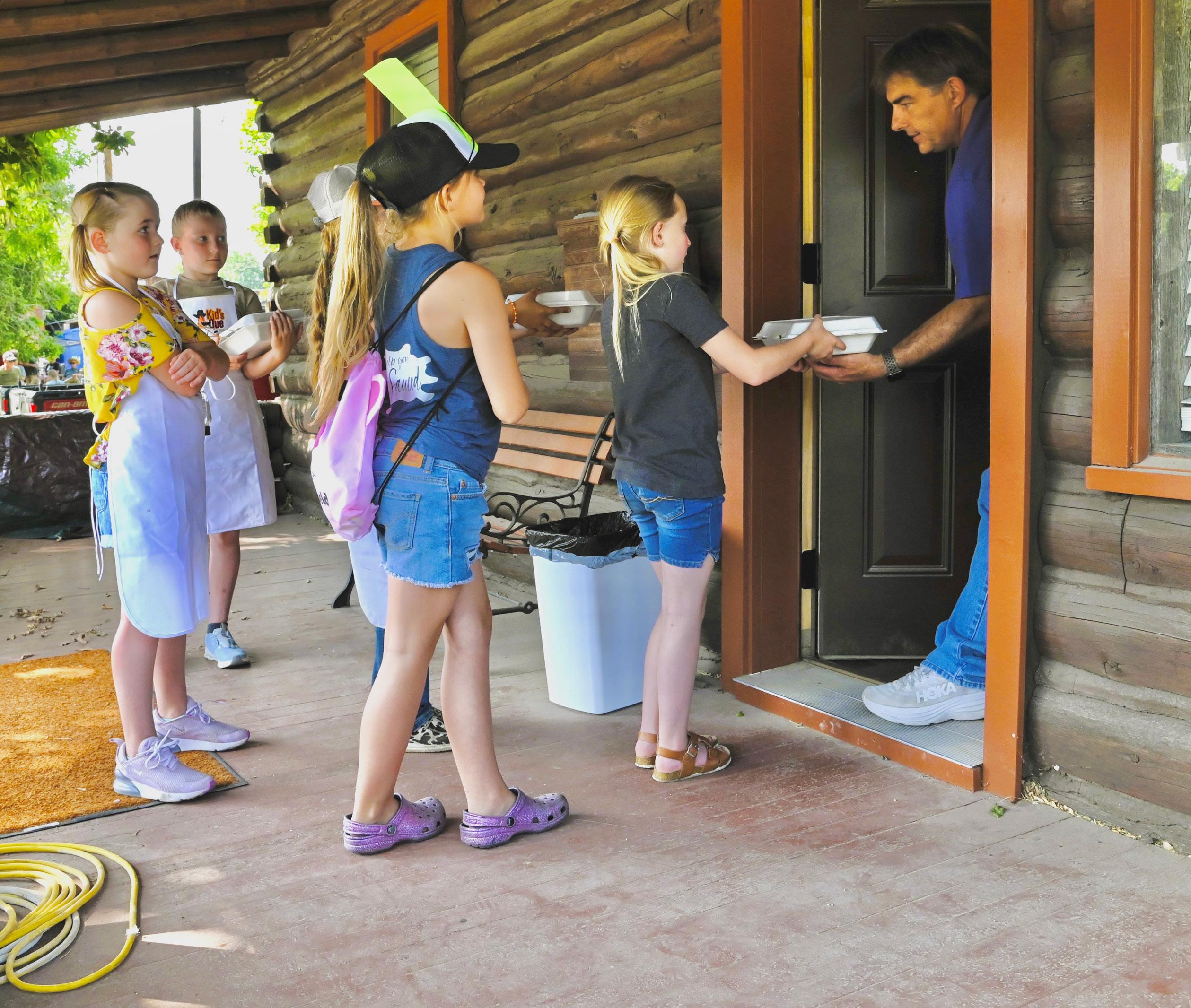



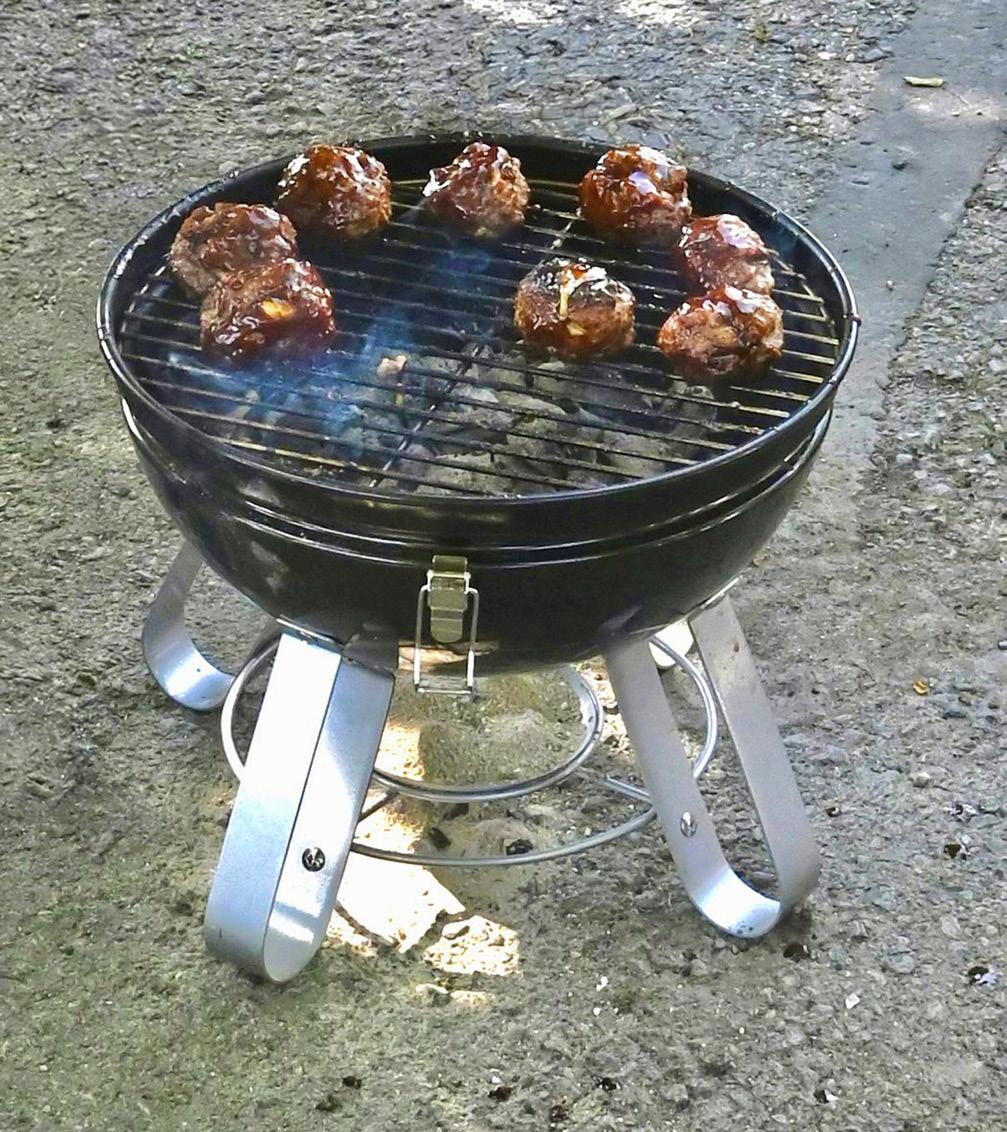






• 1 ½ pound ground beef
• ½ pound bulk Italian sausage
• ¾ cup seasoned breadcrumbs
• ½ cup grated Parmesan cheese
• ¼ cup finely diced onion
• 1 ½ Teaspoon minced garlic
• 1 egg slightly beaten
• ¼ cup milk
• 1 Pound Shredded Mozzarella Cheese (add just before cooking)
• Special Seasoning
• 1 Teaspoon fresh chopped thyme
• 1 Teaspoon fresh chopped sage
• 1 Teaspoon salt
• 1 Teaspoon black pepper
DIRECTIONS: Mix the ingredients in the Special Seasoning together and set aside. In a large bowl, add all the ingredients except the Mozzarella cheese, with clean hands, mix together well. Sprinkle with the Special Seasoning and mix some more. When thoroughly blended, shape into 1 ½ inch balls (slightly larger than a golf ball). Make a hole in each one big enough to stuff with a bit of shredded Mozarella cheese and close the hole back up. Put the meatballs on the grill and turn in 5 minutes. Test for doneness by using a thermometer. They are done when it reads 160. Carefully remove from the grill and eat them!



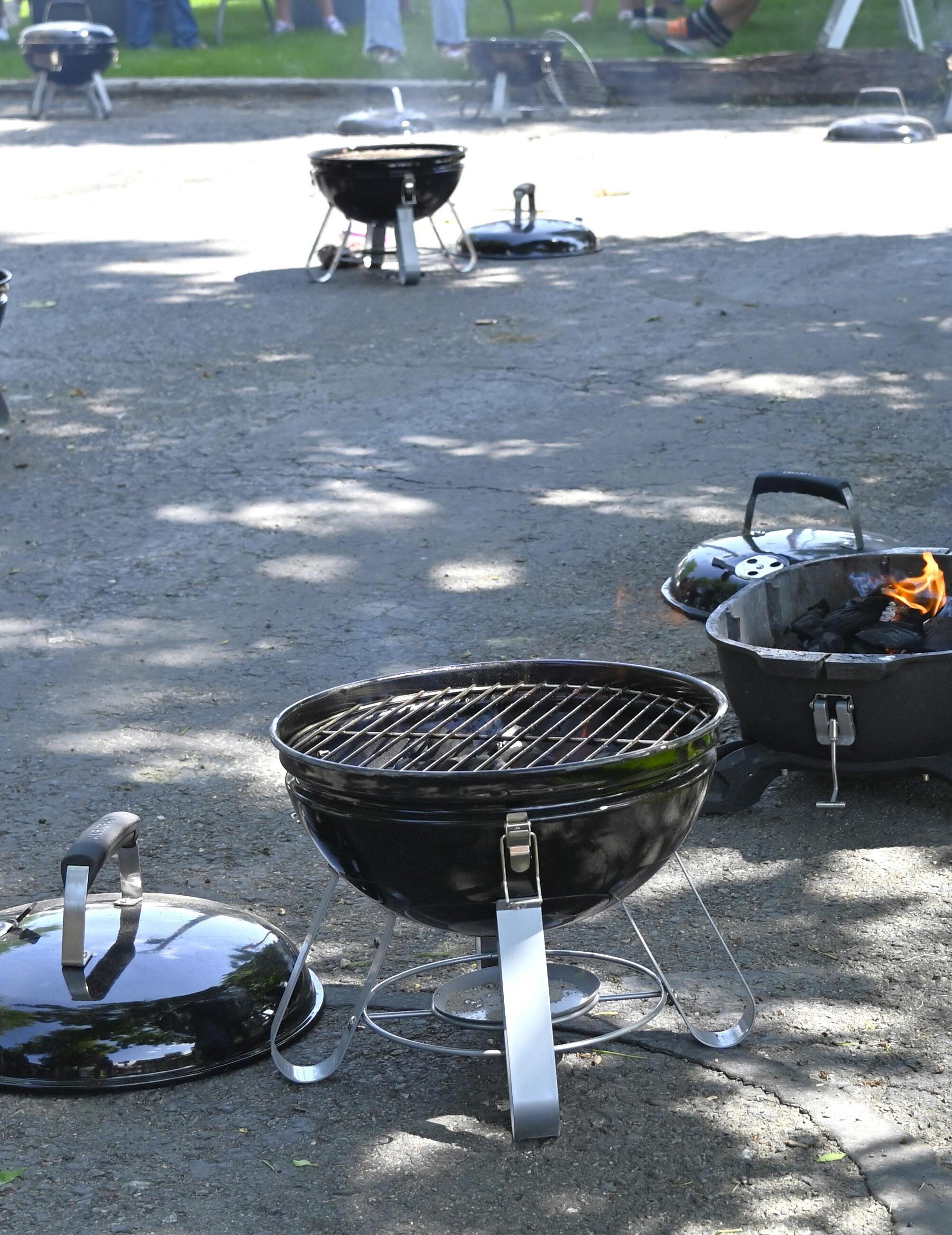
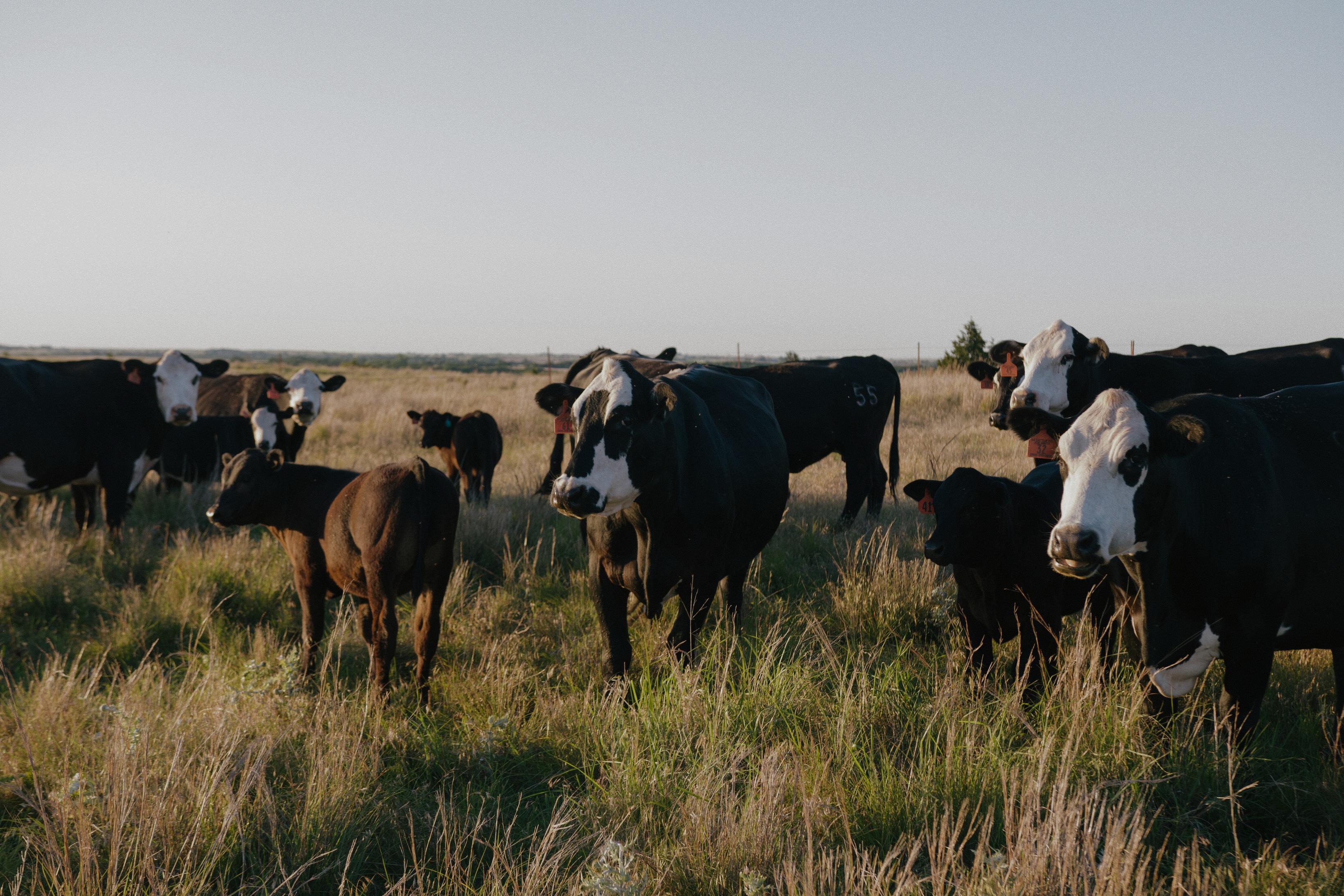







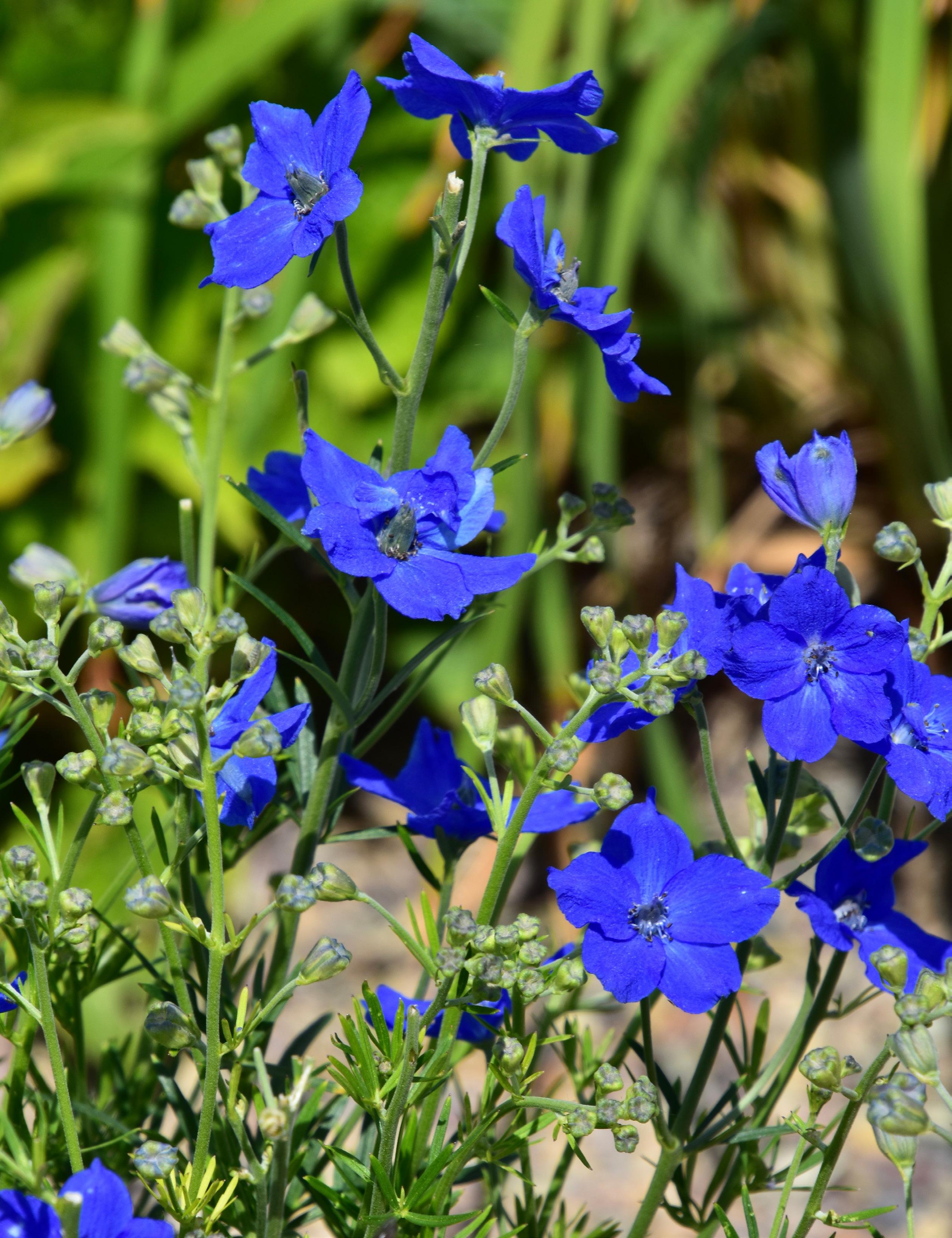
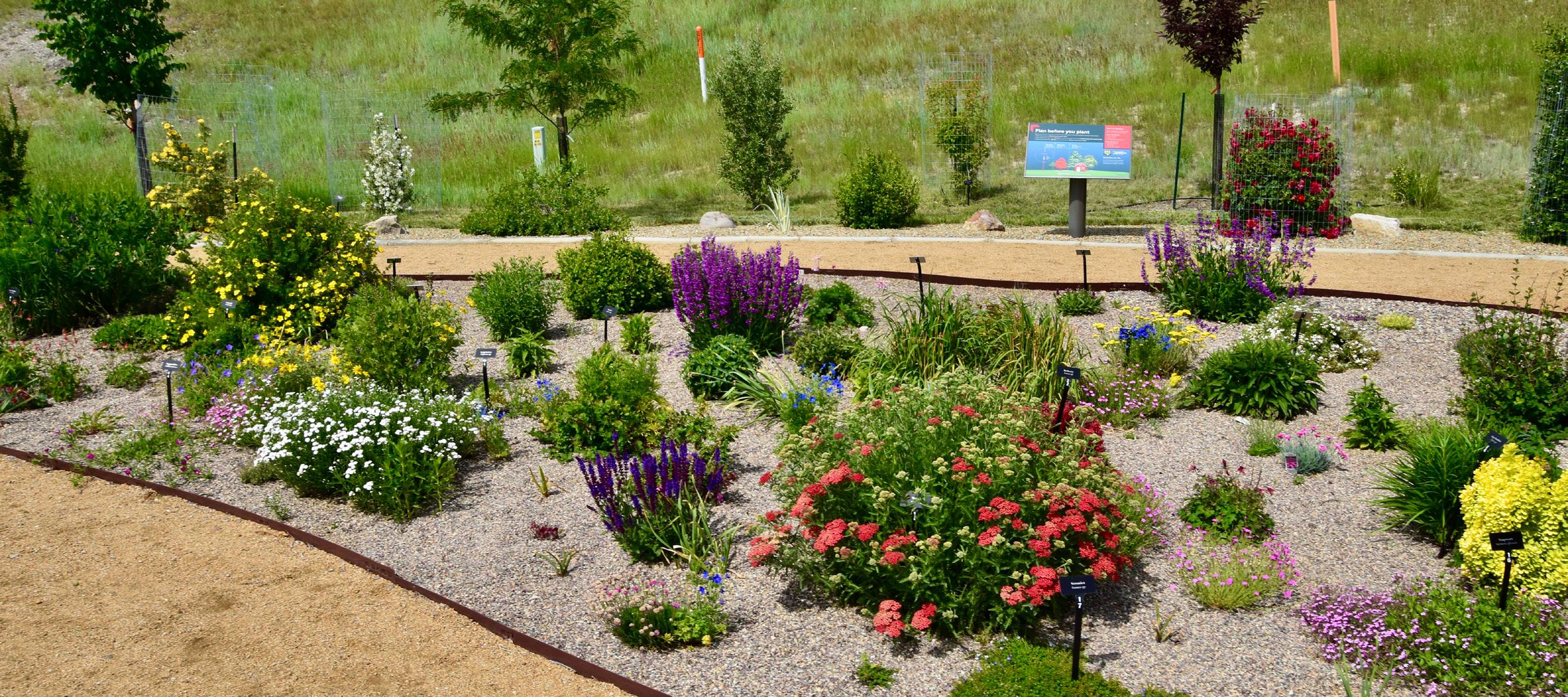

A couple of years ago, a grass fire, sparked by a chain hitting the roadway, ripped across the dry field and within minutes, burned nearly a mile, ultimately reaching the shop at my son’s workplace. The flames were quickly extinguished, but it was a wake-up call. A structure-threatening fire can occur at any time, especially during our hot, dry summers.
Landscape planning around homes and outbuildings can serve as the first line of defense in protecting property, and it can be both beautiful and functional. While the idea of landscape design is daunting, a great resource is the Firewise Demonstration Garden, outside of Helena, at the Montana City Volunteer Fire Station #1, where the TriCounty (Lewis & Clark, Broadwater & Jefferson) Firesafe Working Group (TCFSWG) shows us beautiful and functional ways to protect our homes.
The best safety zone for a home is to have the fire on the ground when it reaches a structure. If it’s in trees, it can throw hot embers, making it more difficult to save structures and less safe for those fighting the fire.
To demonstrate various fire wise garden designs, the demonstration features 150 different plant species planted strategically to provide the best protection. Effective fire mitigation around the home requires more than just rock and perhaps a few sedums to break up the monotony. While all plants will burn; the key is choosing plants with higher moisture levels or increased saponin components, which act as a natural fire retardant, along with lower resin levels.
The fire experts at the Firewise Garden select plant varieties for their fire-resistant qualities, as well as their ability to thrive in the Montana climate. When deciding on potential species, the TCFWG seeks plants that won’t burn as quickly and are drought resistant. Low-growing varieties are also desirable to reduce fuel load.
Visual appeal is achieved with flowers that provide blooms that last nearly all season, and are not on the top of the menu for deer
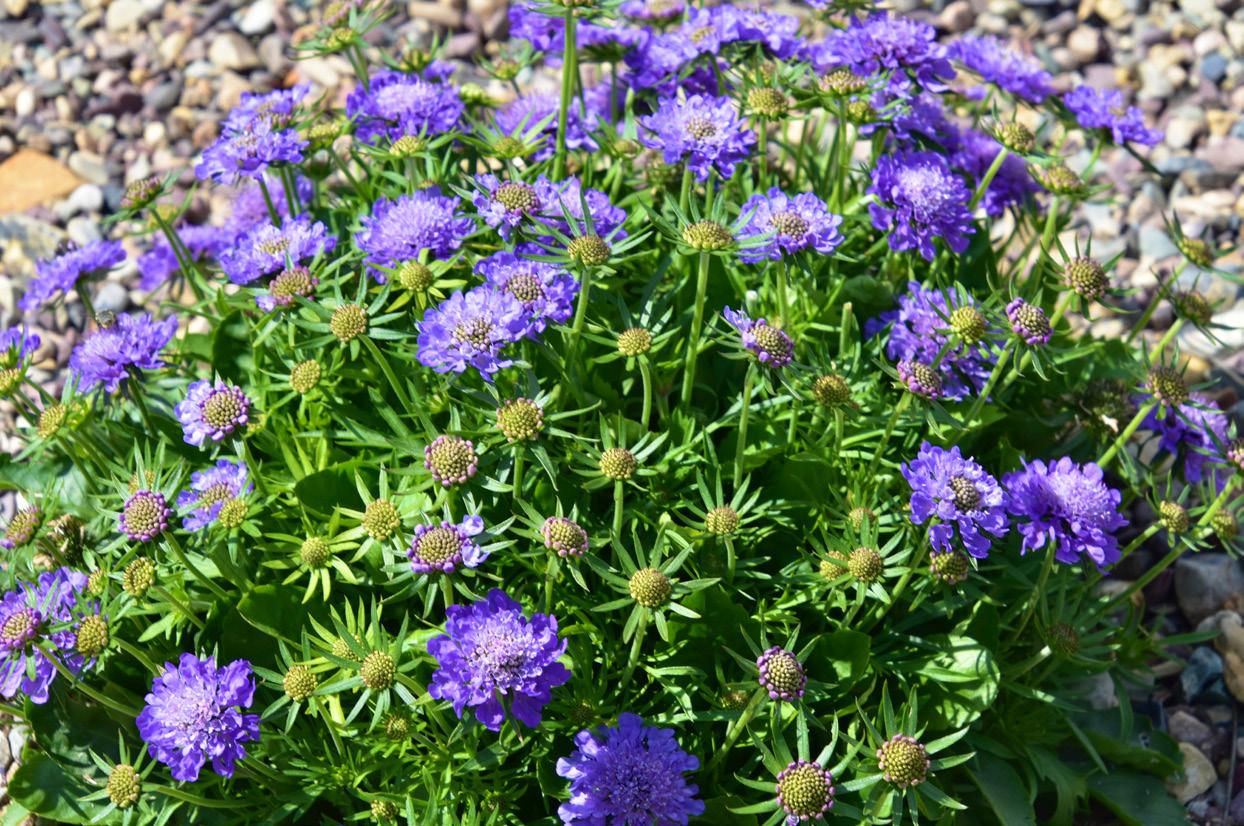


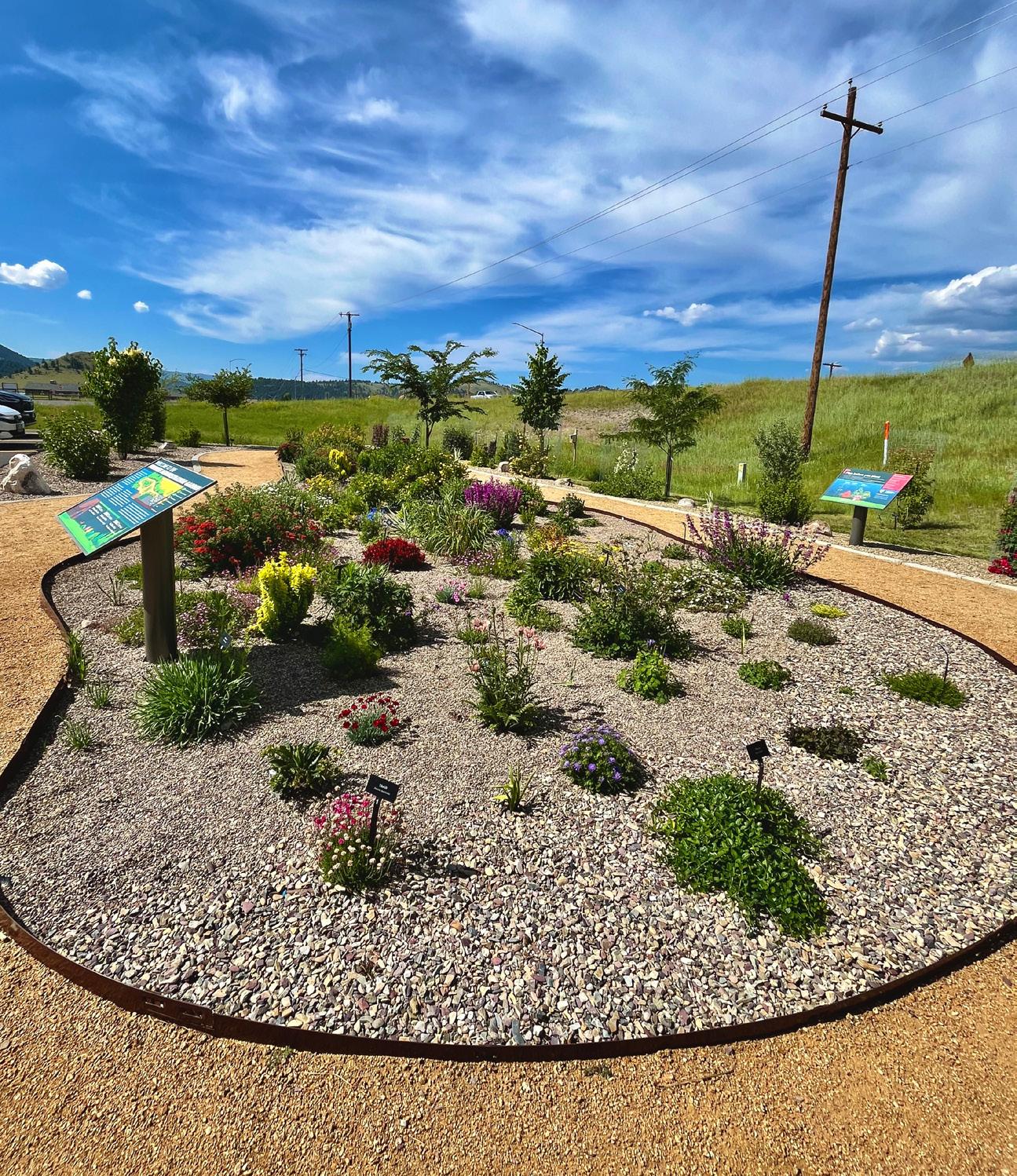
One flower garden at the Firewise Garden is an example of spacing plants farther apart, with very few touching one another, which reduces potential fuel sources near a home. In this bed, landscape fabric was used to suppress weeds and pea gravel as a non-flammable mulch.
Even with the fire considerations, the garden is a riot of color and is teeming with activity, buzzing with bees and butterflies. Brilliant red and hot pink yarrows contrast with the fuchsiacolored penstemon and bright yellow potentilla shrubs.
The second garden does not use weed fabric, and the plants are closer together. While this style is typically more attractive to gardeners, the goal is finding a balance between the visual appeal and fire mitigation. Some of the most notable plants in this grouping include blue flax and the impressively huge Canterbury bells.
The first two beds, lush and filled with blooms, receive just five minutes of watering via drip irrigation per day under the landscape fabric. This is possible because the plants chosen require less water and have been planted to utilize the moisture efficiently.
The third group of gardens features plants, including silver mound and ice plant, that require little to no water. There are also crevice gardens, which feature rock beds with a planting medium composed of equal parts of pea gravel, sand, and compost or soil. Native plants thrive in these crevices, once

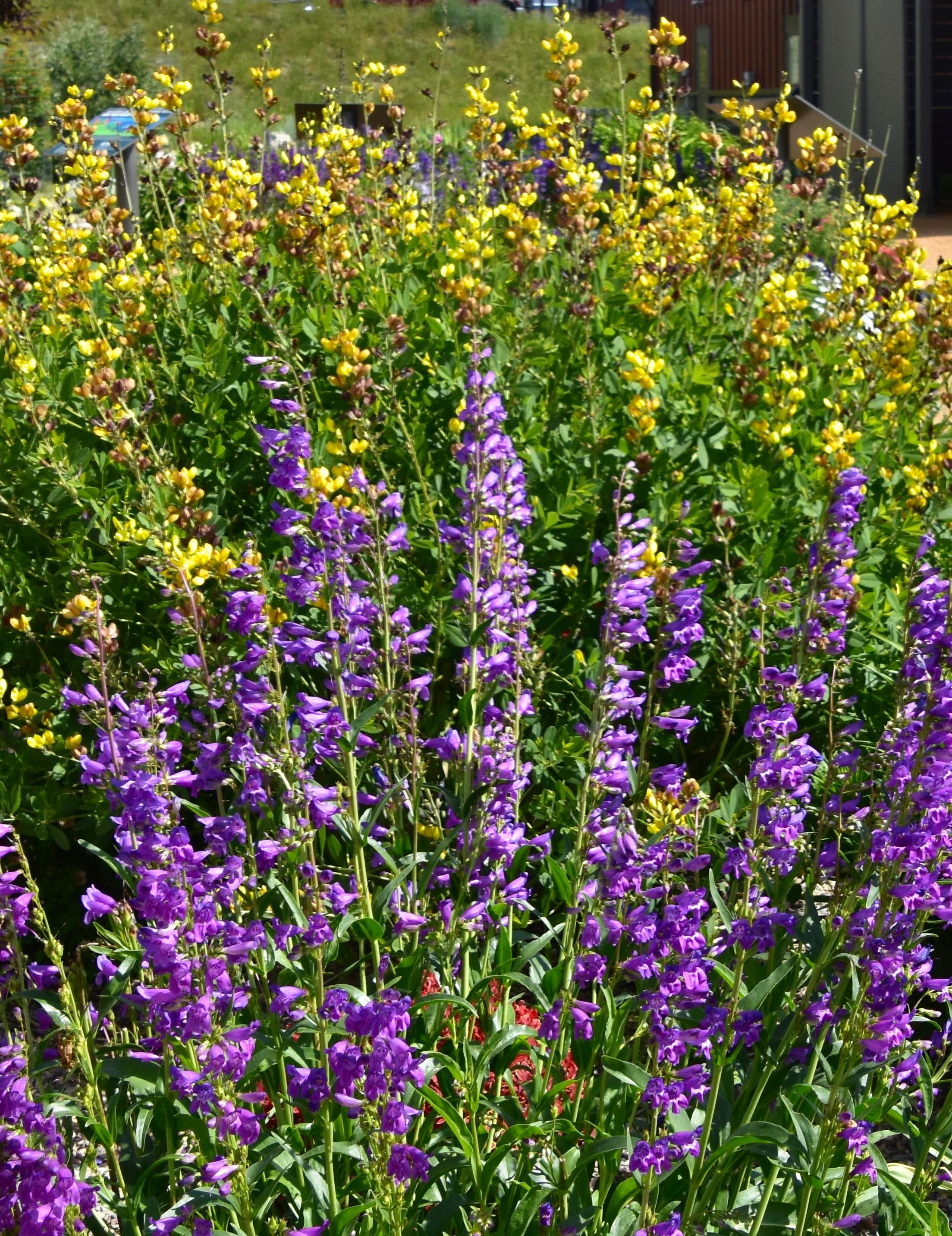




their roots find purchase in this mix deep below the rocks.
Along the perimeter of the gardens are fire-resistant shrubs, many of which are within a protective cage to avoid over-pruning by the resident deer. Shrub roses burst with color, mock orange perfumes the area with its sweet fragrance, and the lilac tree displays bloom long into early summer.
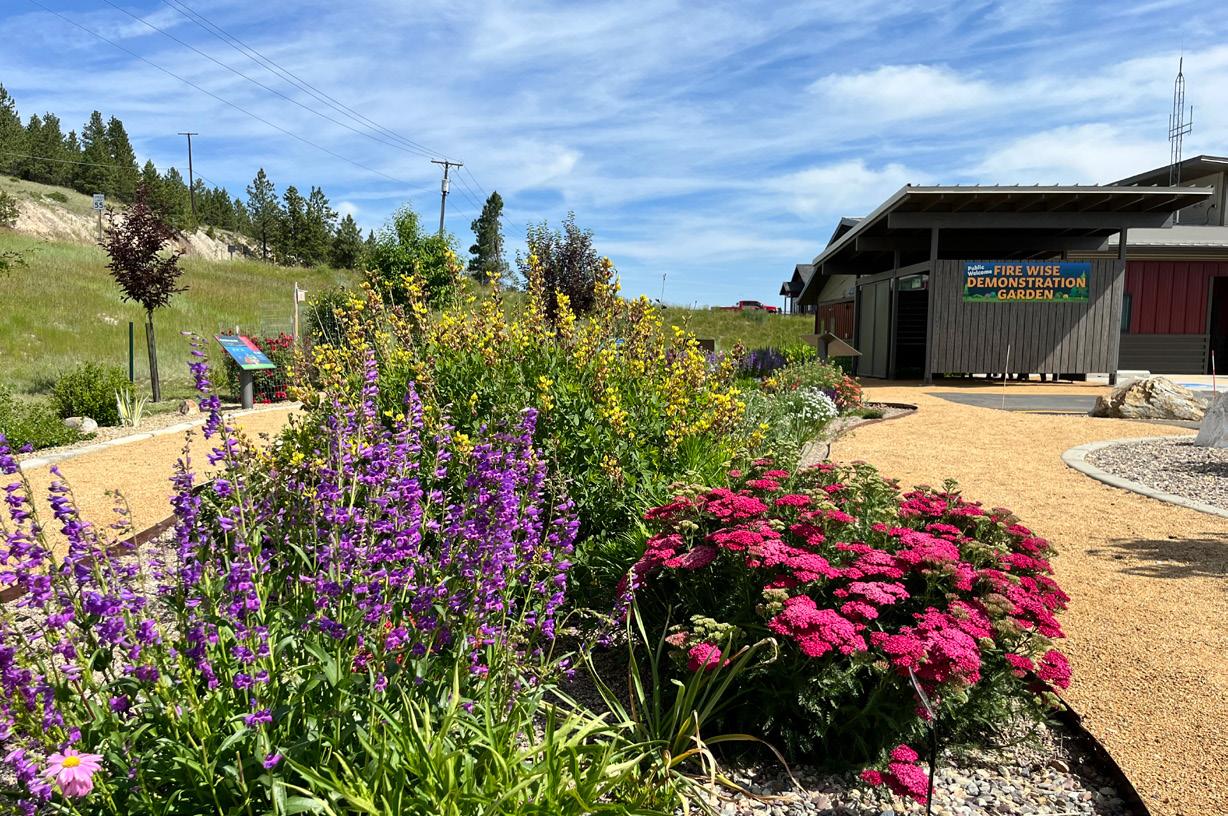
These shrubs offer better alternatives to replace those with higher resin levels, such as junipers and mugo pines, which grow well but burn quickly.

For the lawn area, TCFSWG recommends a short fescue grass that grows well with just ten minutes of watering per day. It can be mowed occasionally for a more even lawn-like appearance, although it is attractive as it is naturally.
The group also offers recommendations for the entire property, including removing standing dead trees, thinning stands, and pruning bottom branches up to 15 feet high to eliminate ladder fuels.
Trees aren’t the only fire danger. When the fire burned across the grass field, at my son’s work, it reached tall grass at the back of the shop that ignited the wood siding. To halt a rapid progression like this, keeping the cured grasses and watering the area within 30 feet of any structure will create a defensible space.
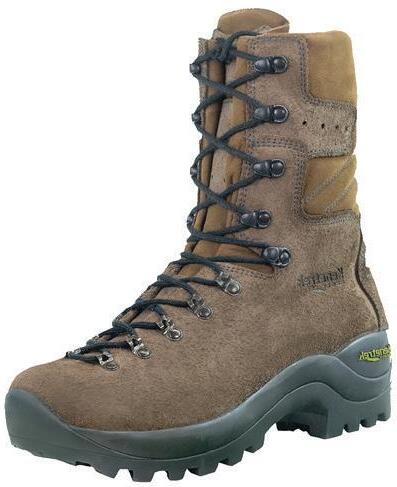

Rain gutters should be kept clean, as an errant spark can ignite dried materials immediately. Rake leaf litter or pine needles in your landscape, rake them down to a depth of three inches or less to reduce the amount of burnable materials.













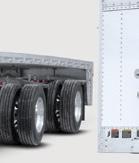






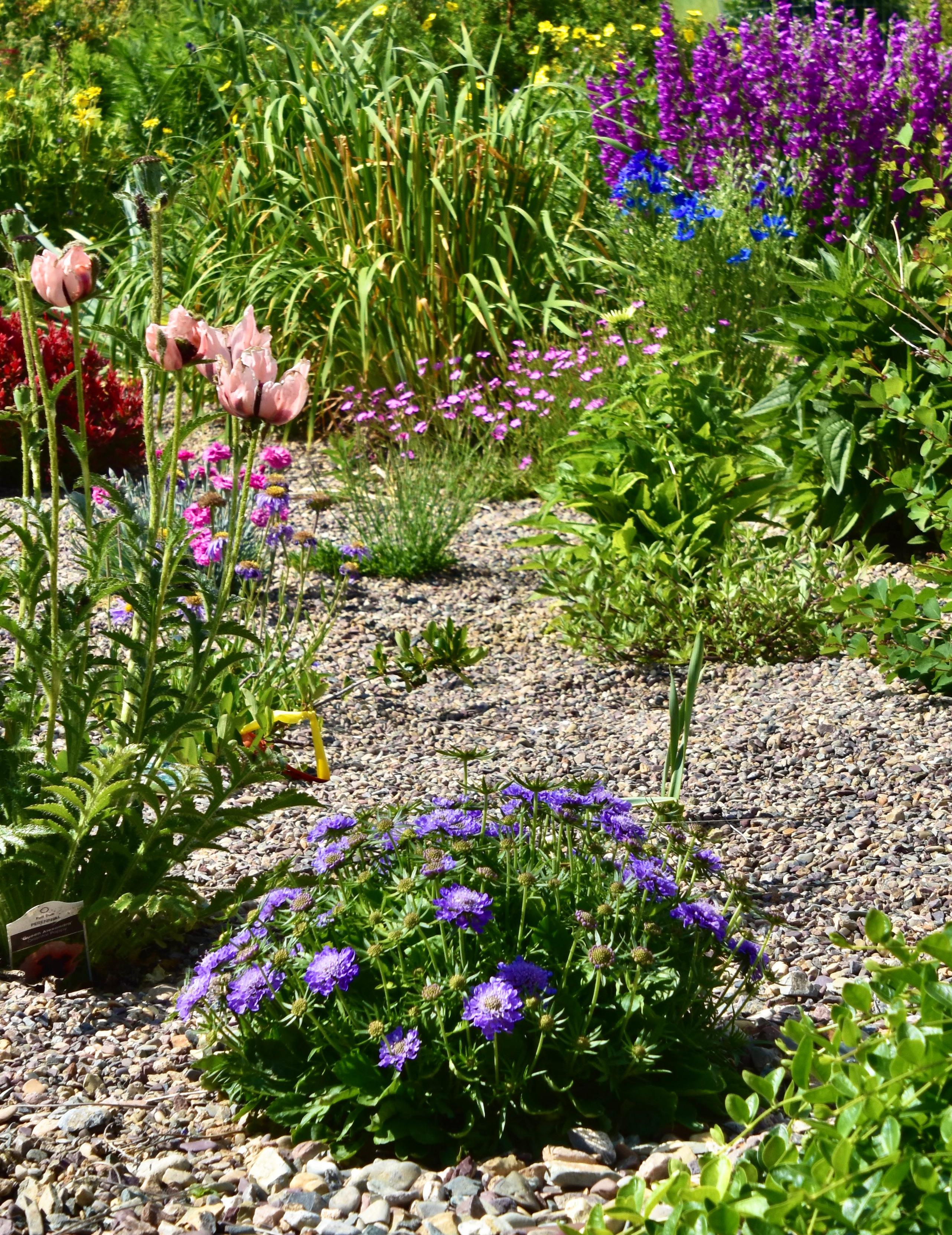























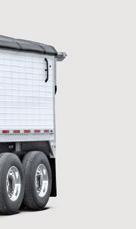















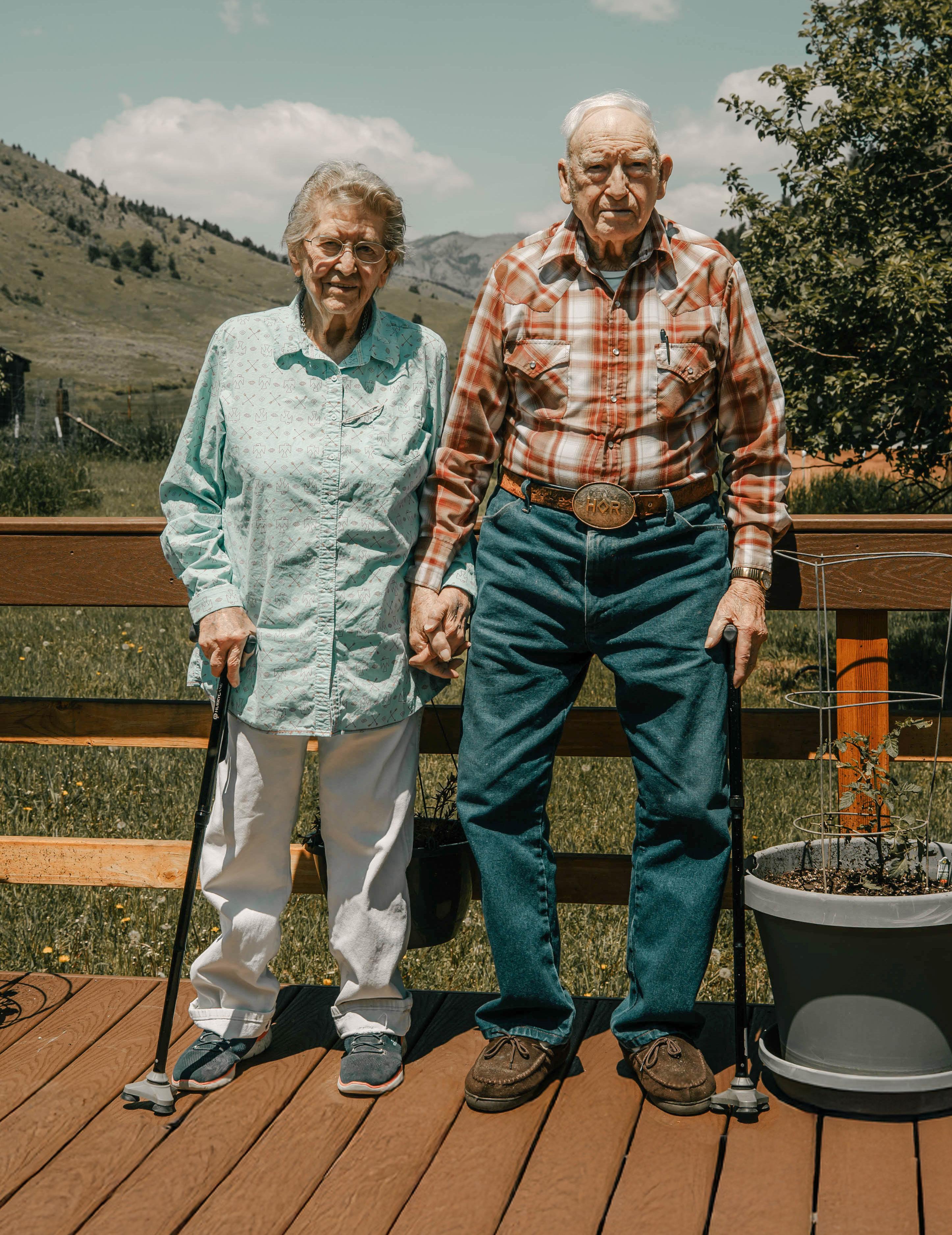
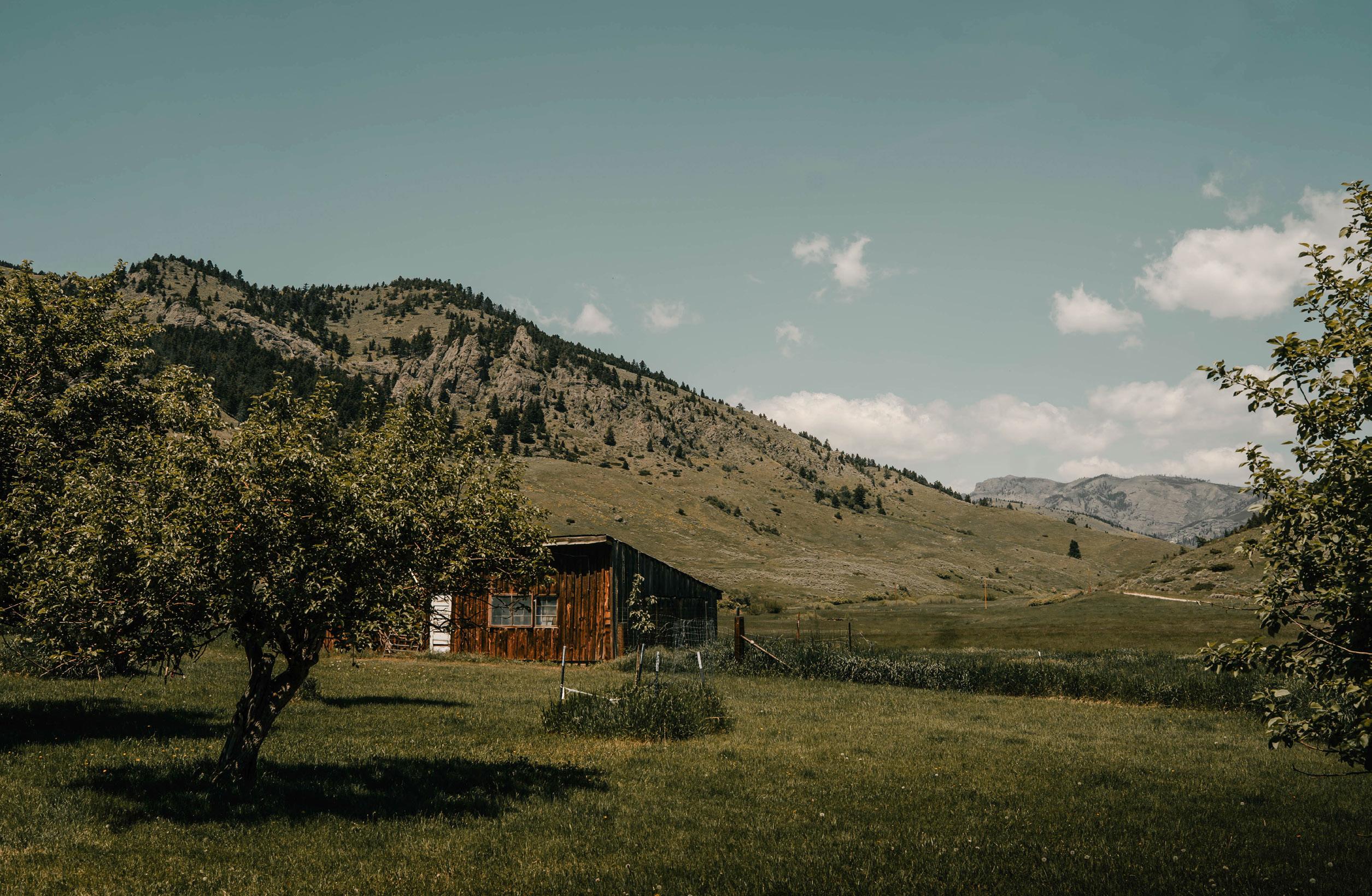
The ancestors of the Russell and Rich families are as hardy as the century-old apple trees still growing on the Russell Ranch. Both families immigrated to the area in the early 1900’s - homesteading at a time when success would come only with hard work, determination and sacrifice.
Surrounded by the Custer National Forest, 35 miles from Yellowstone National Park, the Russell Ranch is nestled in the foothills of the Beartooth Mountains near the community of Nye. Lush grass, endless skies, a crystalclear stream and an unparalleled view showcase the beauty of the ranch. Cow/ calf pairs dot the upper pasture and nearby hay fields promise a good crop.
Herb and Susan (Rich) Russell live on the ranch in a modest home with an unblemished view of the mountains and spend their days relaxing on the shaded deck and keeping abreast of their large family.

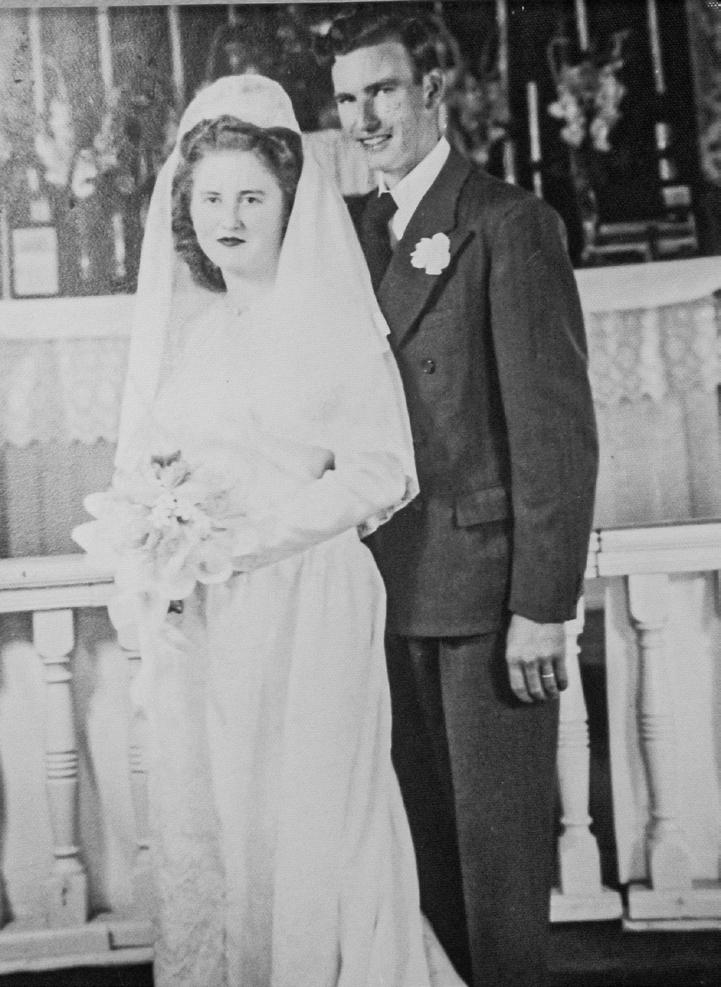
The rusted body of a Model T, a variety of hand saws, an ice saw and a scythe grace the walls in an old shed - remnants of an era long past. Cracked-leather harnesses line one wall and antique tools speak of a time when the ranch was run exclusively by man
and horse-drawn power.
The ranch has been in the Russell family since 1919 when it was purchased by Herb’s father and uncle. Herb was born there, in fact, delivered by his father, 102 years ago. He’s made his home in these mountains his entire life and for the past 77 years, he’s shared it with his wife, Susan, who is 97.
On a recent afternoon, the two of them shared glimpses of their history; their son, David, joined them. As the couple thumbed through photo albums dating back to their youth, they fed off each other’s stories, pointing out photos of relatives, buildings long gone, the first tractor, early cars, and teams of horses. The photos triggered stories of their youth and early marriage, their ancestors and life over the years on the ranch.
Together the two have weathered good times and hardships, abundance and scarcity, six kids, 12 grandchildren, 35 great grandchildren and two greatgreat-grandchildren all with love, laughter, commitment and determination.
“You don’t go 50-50 on anything when you get married,” Susan


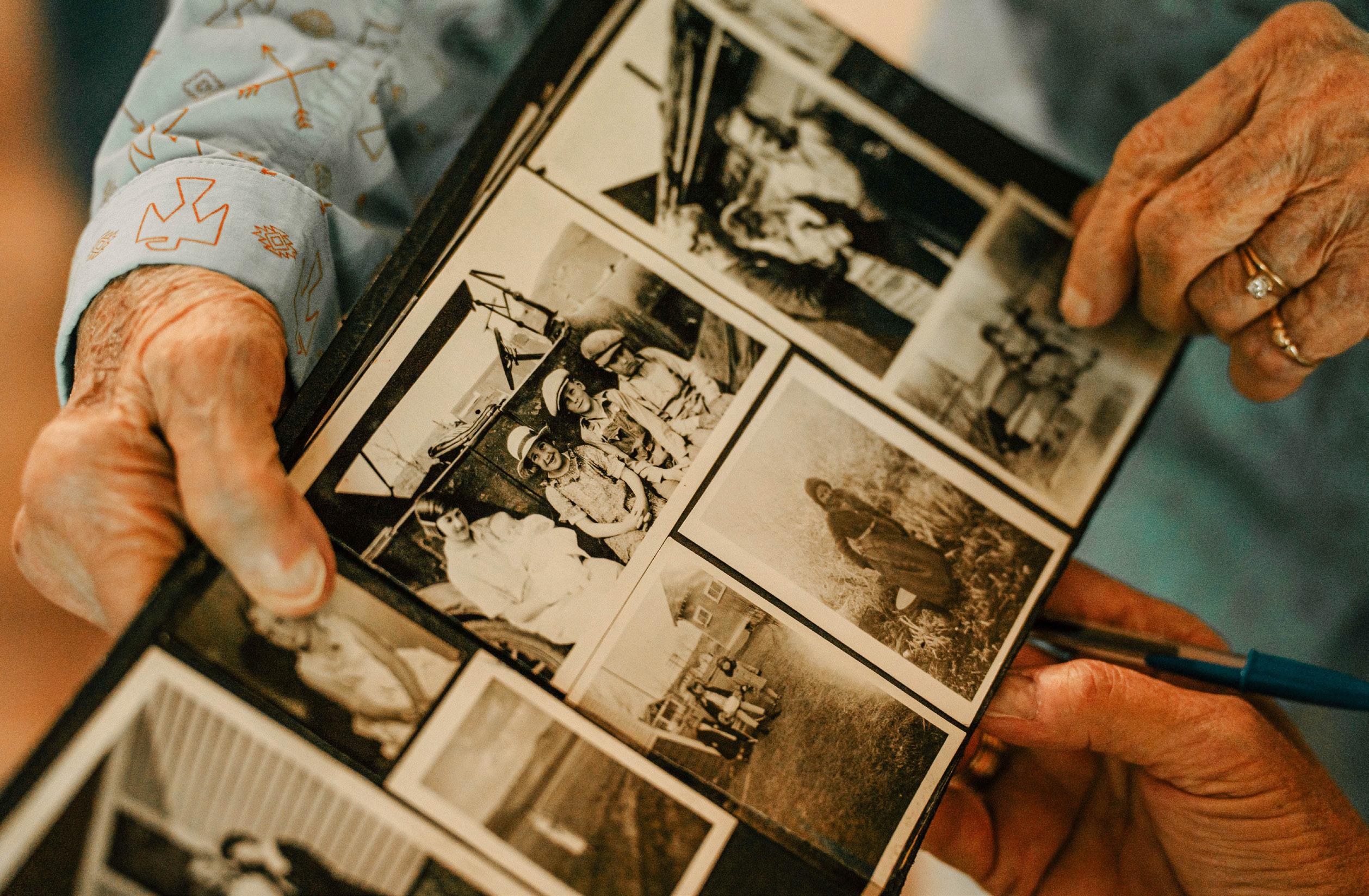
said, “You go 100 percent! It’s the only way it will work out.”
“And an occasional good Scotch Whiskey helps too,” Herb quipped.
Herb’s family descended from Scotland just before World War 1 and moved to the Limestone, Montana area to raise sheep. Herb began his ranching career as a young tike following in the footsteps of his father and uncles.
He paused at times allowing memories to gather in his mind; sometimes counting on Susan and David to fill in the details.
He became a man years before his childhood was over - helping with the haying and the harvest of grain, handling guns, trapping bear and assisting with the care of the sheep. He worked with horses his entire life, riding and roping until his late 80’s.


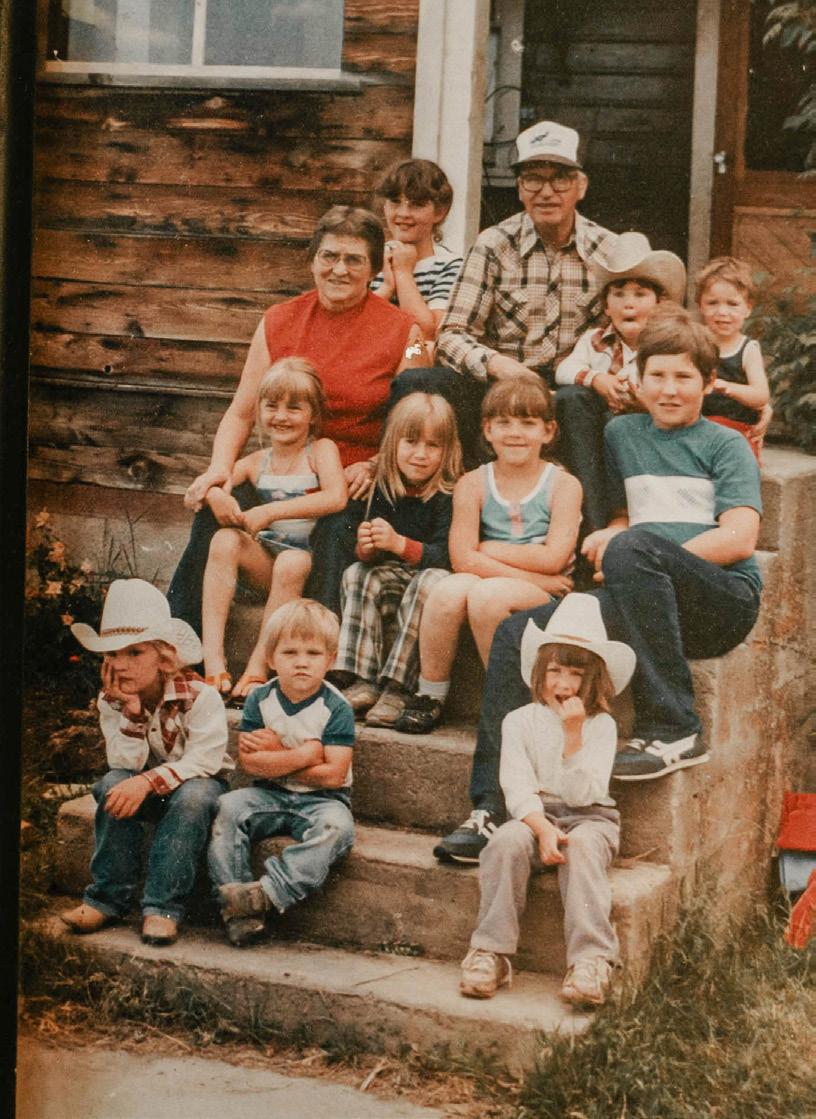

He fondly shared stories of trailing sheep from the ranch down to Columbus, crossing the railroad tracks and continuing north to the White Beaver area where the sheep would winter on his uncle’s homestead before returning to the Russell Ranch for lambing and summer pasture. The trip, twice a year, would take
three days to cover.
He spoke of hauling wheat to Columbus by wagon, and raising turkeys, which were harvested at the same time as the wheat and taken to town on top of the grain.
“We wouldn’t give the turkeys water or grain for a couple of days and then we’d bleed them out,” he explained. “We wouldn’t take the entrails out, we’d just lay them on top of the grain, not even plucked, ready to go.”
Before refrigeration, it was well known that the feathers acted as insulation keeping the insides of the turkey fresh. He and Susan continued the custom after they married.
“We shipped turkeys to Sioux City, Spokane and Seattle,” Susan added. “They loved getting our turkeys.”
While Herb was growing up on the Russell homestead near Limestone, at nearby Dean, the Rich family, who had emigrated from Ireland, homesteaded and ran the post office.
A horsewoman from early childhood, Susan talked of her father delivering messages for the post office and vividly remembers
when she was twelve, being called upon to deliver messages to the nearby Benbow Mine.
Early photos show her on horseback as a child. One captured her wearing snowshoes as she navigated deep snow. Her dad had a freight line from the ranch to Benbow, and he taught her to drive a four-horse team and wagon. Once married, and before they had a tractor, she helped Herb put up hay with a team.
Herb and Susan didn’t meet until she was out of high school. After her mother died, she lived with her older sister in Billings and attended school there, returning to the ranch in the summertime.
“One day, I borrowed my dad’s car and took some neighbor kids to the picture show in Absarokee. There was a dance at the hotel, and I thought we should go,” she paused, smiled and ribbed Herb. “Some guy came in and asked me to dance and that was the beginning of my time with Herb.”
Susan graduated from high school and spent a year working in Seattle before she settled down with Herb.
During the Depression, Herb was in his early twenties and ran sheep on the Forest Service. At that time, no one was
YOU DOn’T GO 50-50 On AnYTHInG WHEn YOU GET MARrIED. YOU GO 100 PERCEnT! IT’S THE OnLY WAY IT WILL WORK OUT.
— SUSAN RUSSELL
visiting Yellowstone Park and the bear population flourished. The government trapper could not keep up with the increased numbers, so Herb started trapping.
“Dad hauled supplies to the sheep herders and helped move their camps to summer pastures in the Beartooth Mountains,” David explained. “Along with supplying the camps and moving them, he also helped with predator control, both coyotes and bears. In one season he trapped 23 black bears and a grizzly.”
“Just before we were married, he went to pick up the traps for the last time,” Susan said. “He’d gotten a grizzly. From the tip of his nose to the end of his tail and as far as Herb could reach with a 30-30 was the length of that bear!”
“Dad wasn’t afraid of anything,” David said. “He’s only 5’10” but he’s always been larger than life. He’s a grizzly himself.”
In a time when every penny counted, Herb often worked jobs off the ranch, confident that Susan was capable of handling things at home.
“Dad bought a stationary baler 70 some years ago and pulled it around to places that stacked hay loose,” David said. “He’d pull up, set up, and hand pitch the hay into the baler to make bales and then stack them. He was tough!”
“When he was out baling, I’d do the haying here,” Susan added.
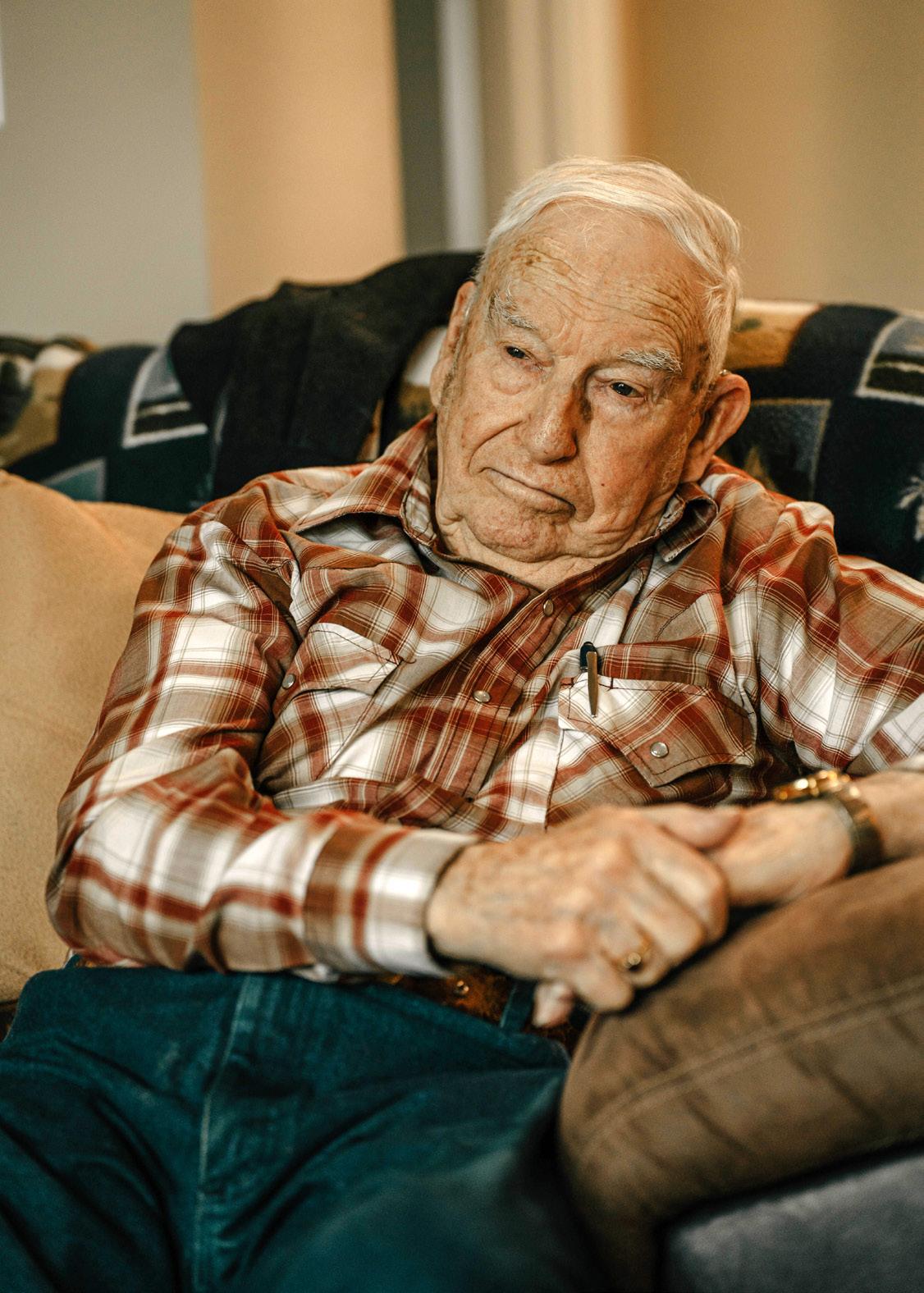


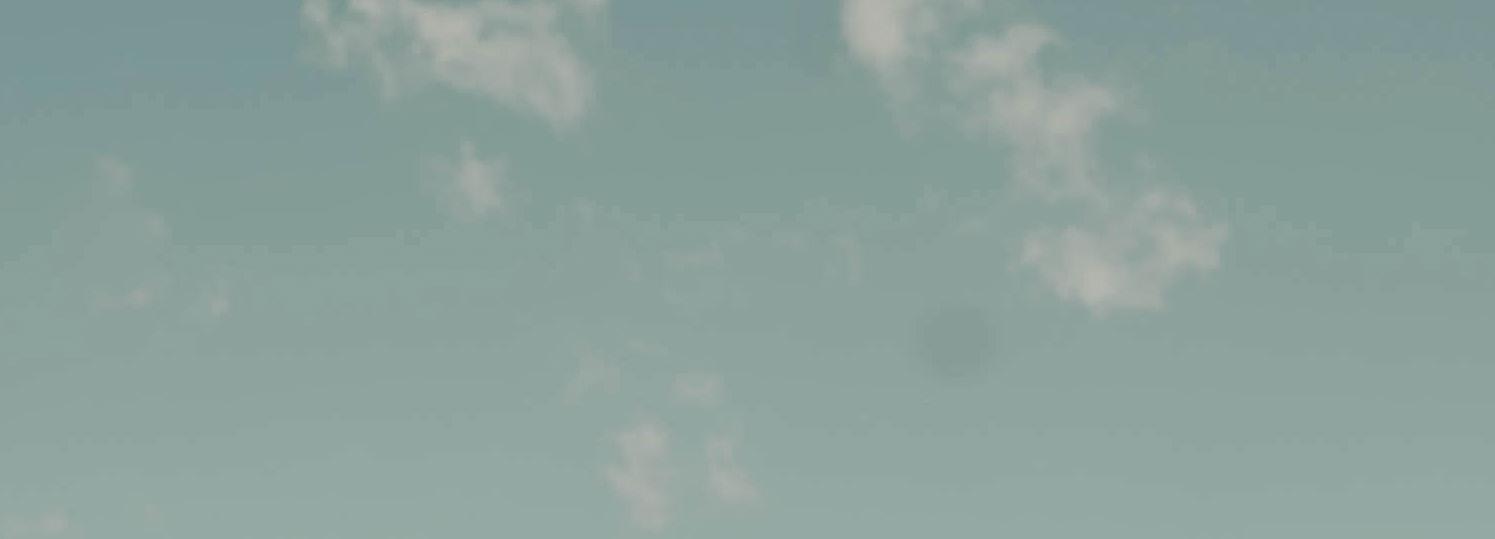
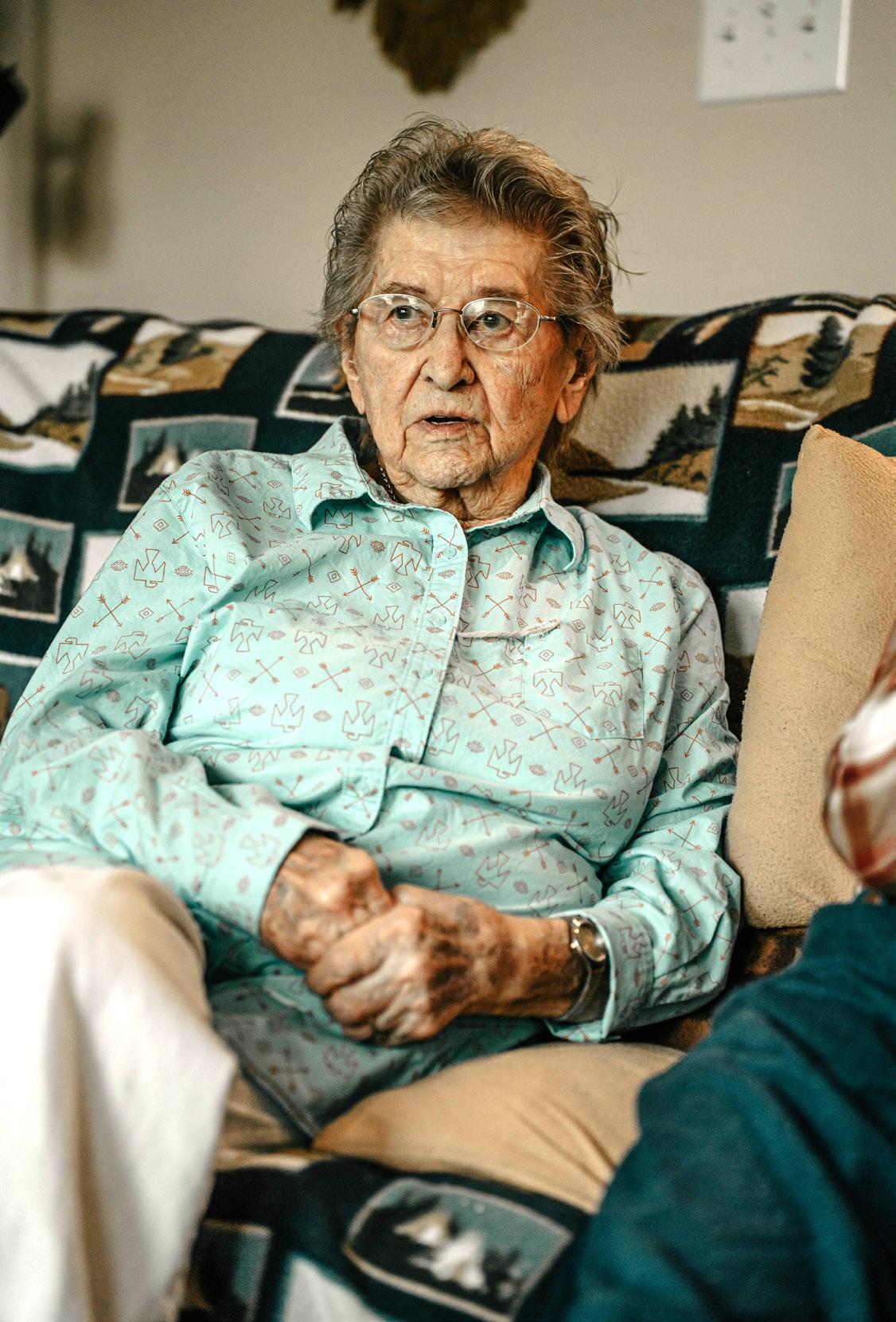
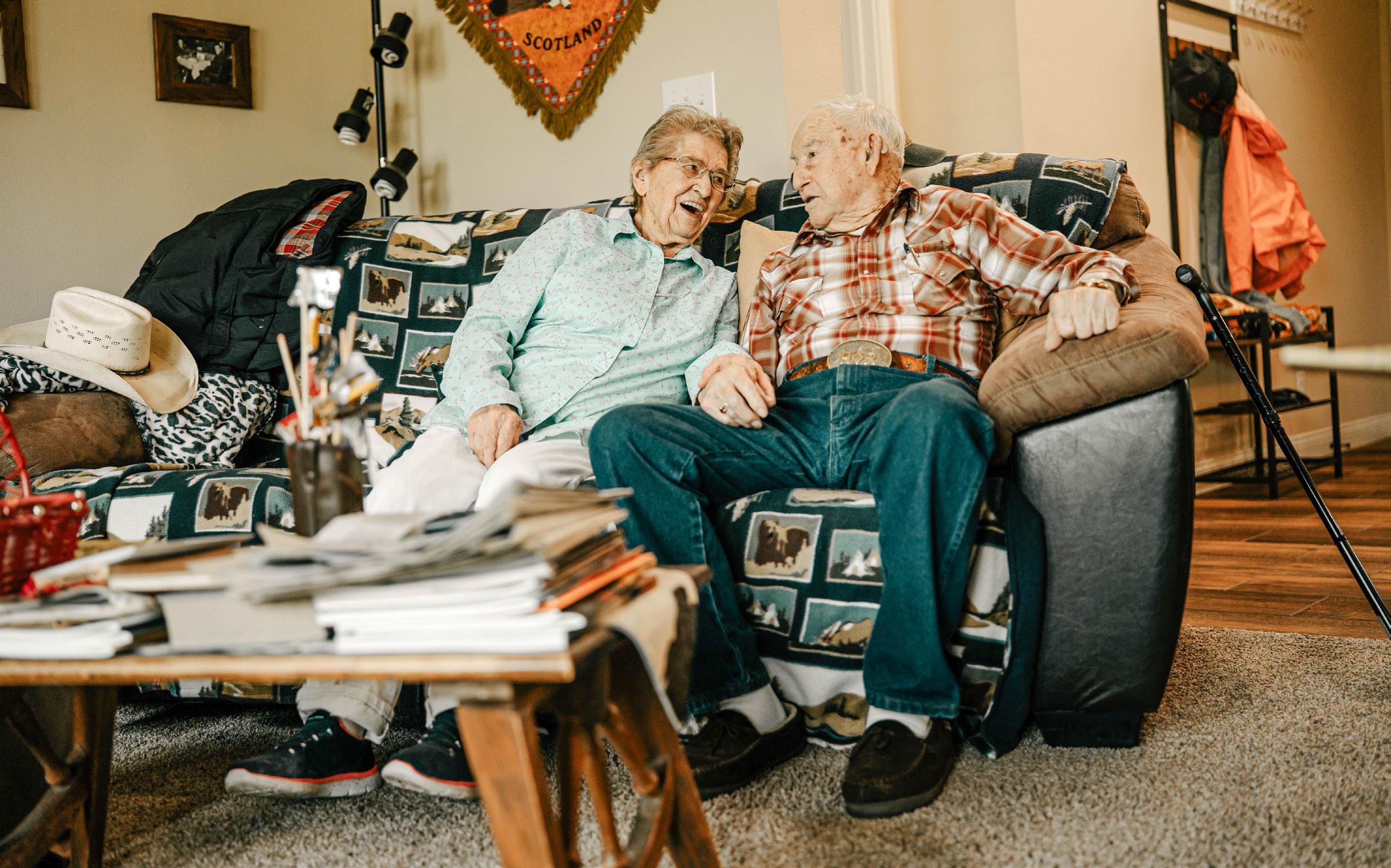

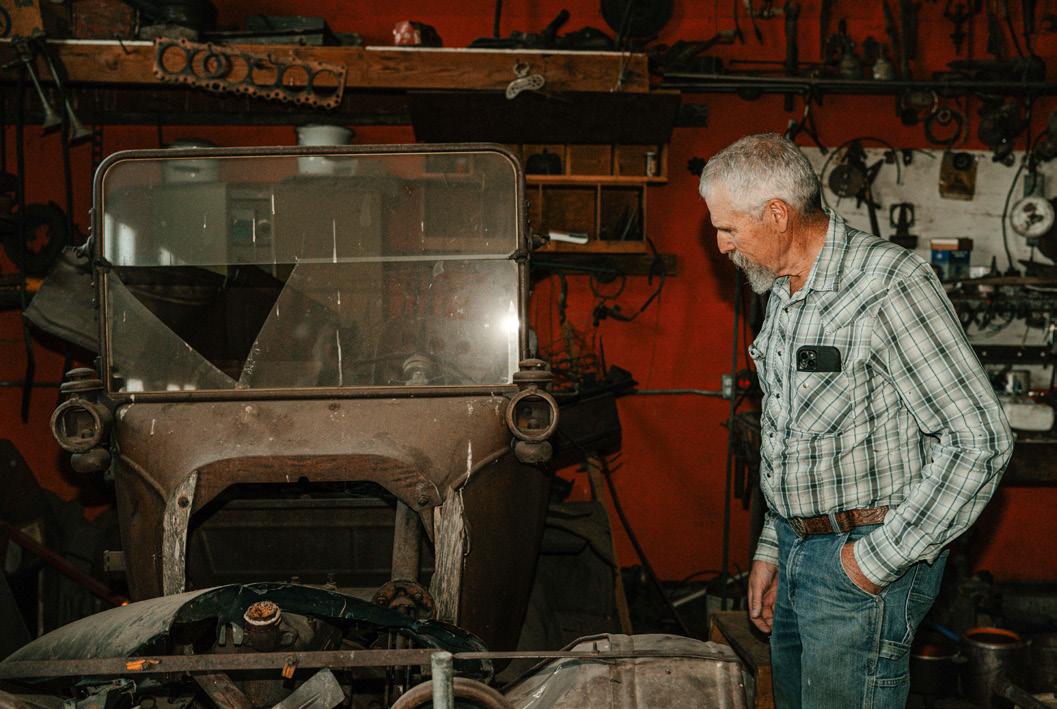
“We were always a team; I’d help him outside and when he came in, he’d help with the children or whatever needed to be done.”
Having a large family was beneficial as the children worked on the ranch and they grew up learning their work ethic by laboring next to their parents.
David operates the ranch today and keeps a close watch on his parents. Several years ago, he took them on a trip of their lifetime: touring Scotland and Ireland to see their homeland and visit with relatives they had never met. The trip remains a highlight in their lives.
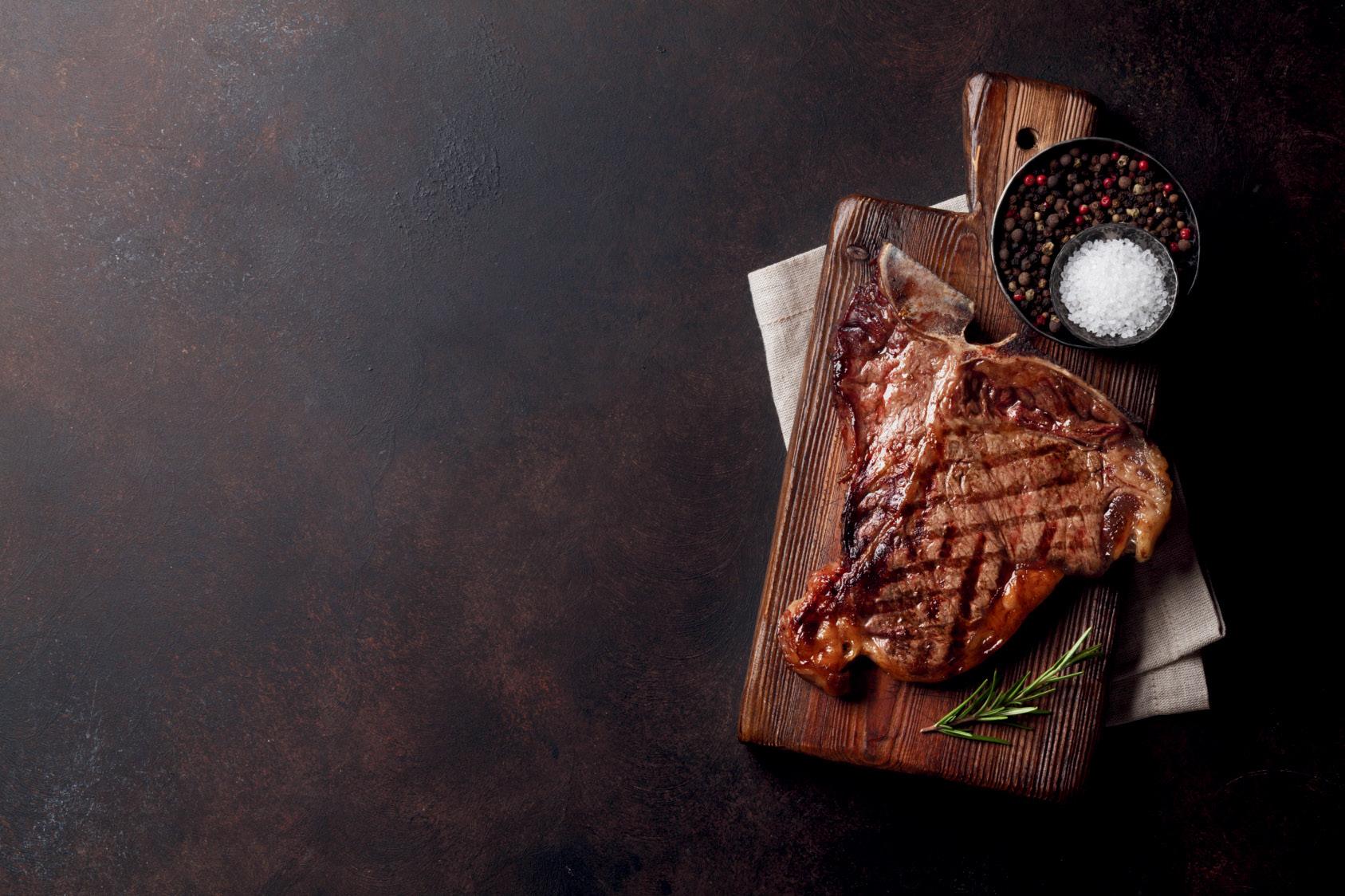
Today, they stay involved in their childrens’ and grandchildrens’ lives with frequent phone calls and visits.
Susan proudly recited where each of her kids live, what they do for a living, where the grandkids went to college and what their careers are. She unveiled her sense of humor talking about a grandson who travels to Australia to A.I. cattle.
“He calls his business, ‘No Bull,’” She laughed.



Several years ago, Herb pulled his old bike out of the shed and thought he’d ride down the lane and get the mail. His dog ran alongside him but hit the tire and flipped Herb off the bike.

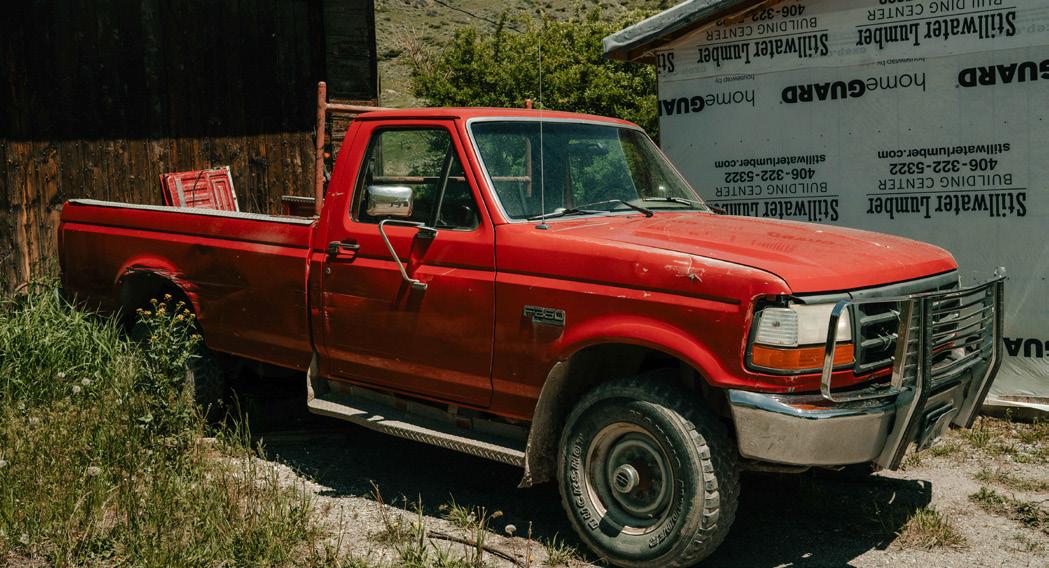


“He lost his glasses and his hearing aids,” Susan said. “The neighbors still tease him about that. They’re always wondering what he’ll do next to get himself in trouble!”
Herb drives his old Ford down to the mailbox every day and they both join their children on excursions to town. Last year Susan assisted her daughter and granddaughter in picking and canning the apples in her yard. Two years ago, for Herb’s 100th birthday the entire clan gathered to celebrate at the ranch.
As they enjoyed the pastoral view of the mountains from their shaded deck, the phone rang. One of their daughters called to see if they needed anything from the store as she’d be out in a couple hours.
“My folks absolutely love it here,” David said. “They are really no different than a lot of our early day homesteaders and settlers, they have the same strong values and determination to survive no matter the obstacles. They’ve lived through a lot of miracles in their lifetime, and they just keep on going.”


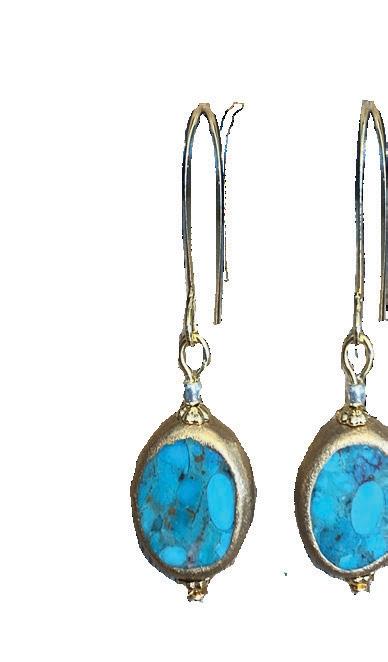





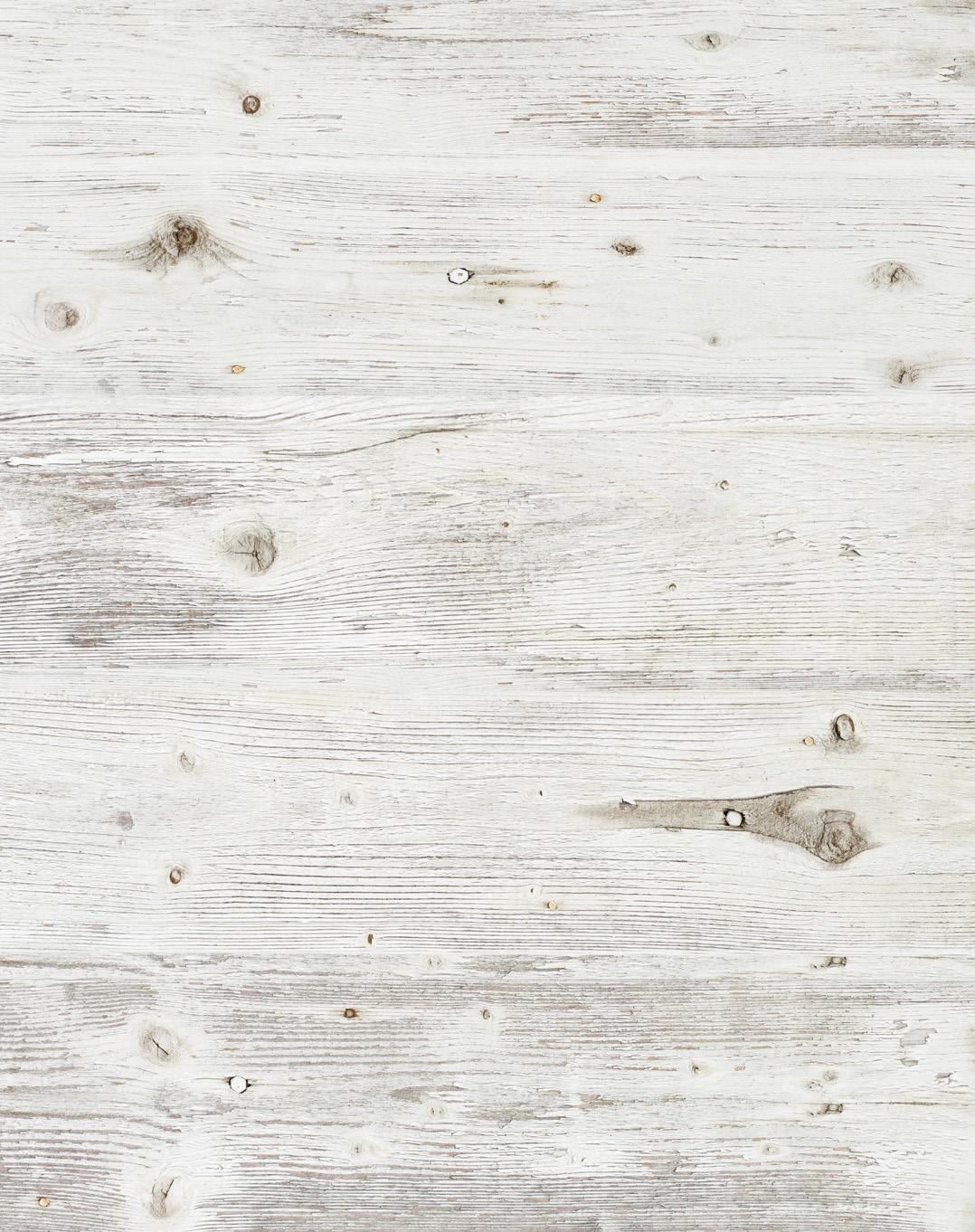









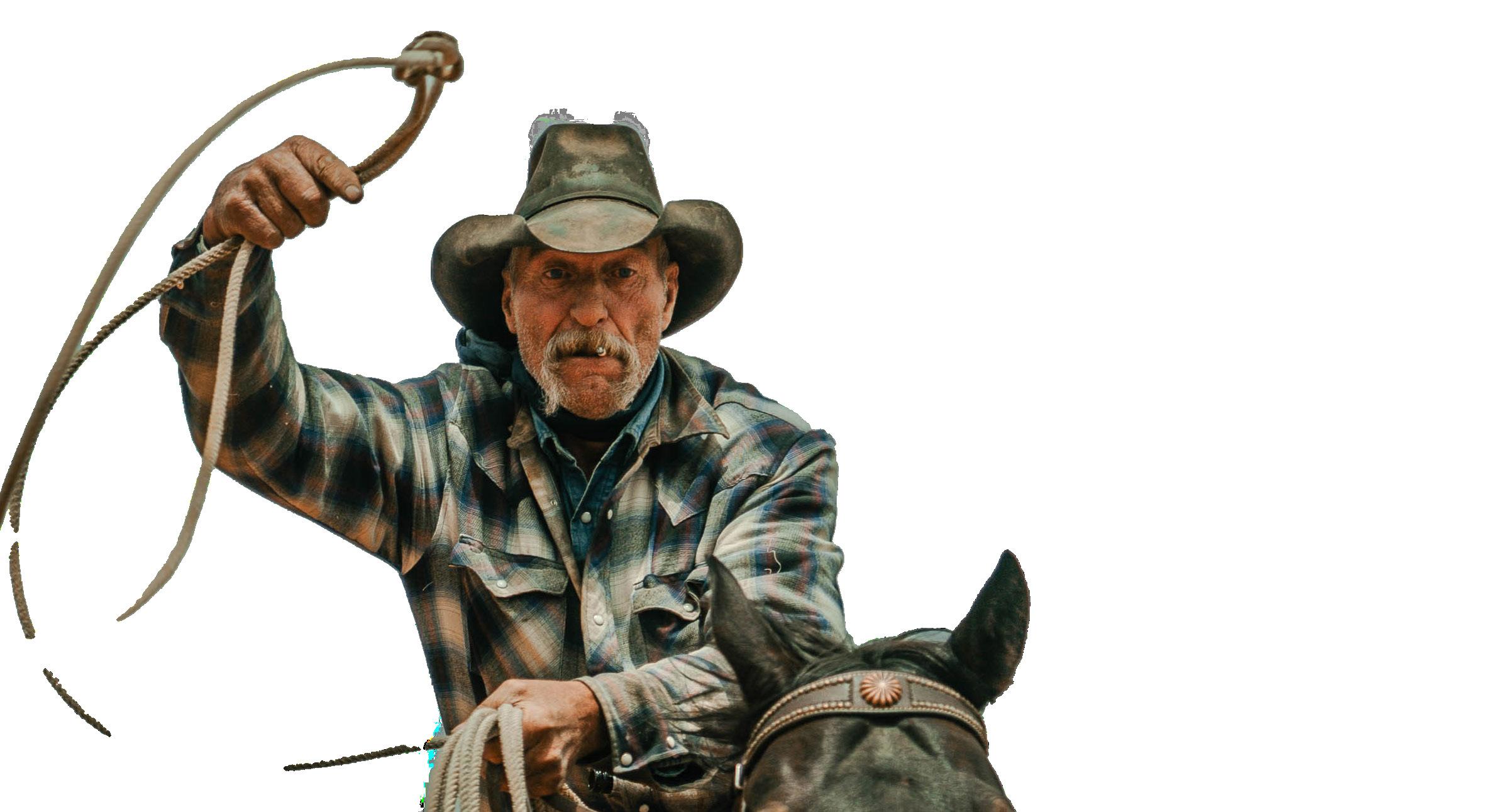

Magic happens when Kenzie Holmberg picks up her camera. Whether she’s shooting a music video for an up-and-coming country singer, doing still-shoots of models for commercial branding, or documenting the everyday operation of a ranch; she captures the raw and the real.
She’s a one-woman show, showcasing the western lifestyle where it’s taking place – on ranches, at rodeos, in small towns. She pours everything into being authentic with herself and with her clients. She examines her subjects with an artistic eye to portray their transparency and personality. Her clients love her informal approach as she puts them at ease, allowing them to truly be themselves while she films or shoots photos.
“My photography is my heart and soul,” Kenzie said. “I’ve developed a style that’s unique to me. I’ve found a niche in the western lifestyle representing people that stay true to who they are.”
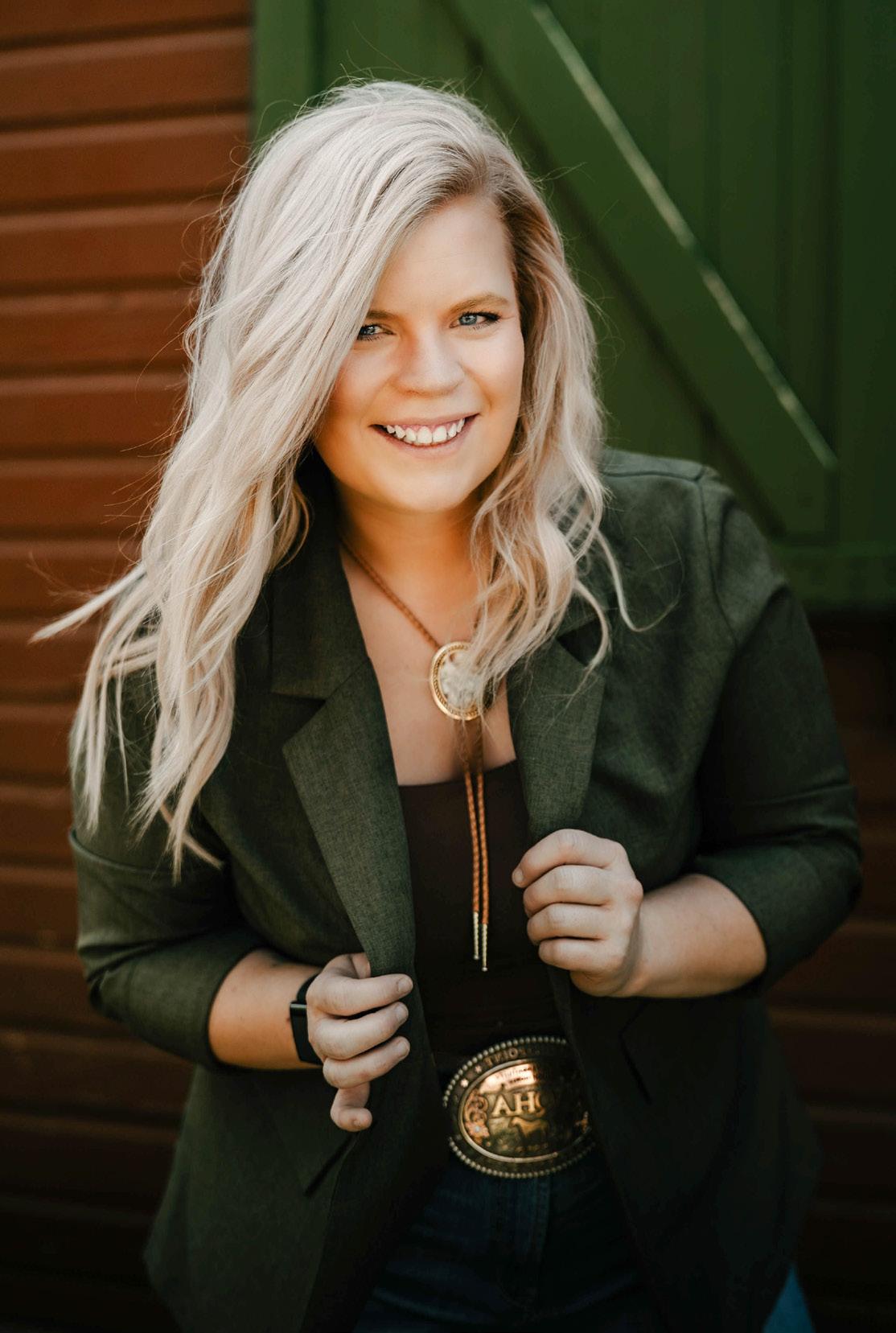
HOLMBERG

Kenzie first picked up a camera while studying Ag Communications at the University of Wyoming. A class she was taking offered a section on photography; she enjoyed it so much her mom bought her a starter camera with hopes that it would become a hobby she would enjoy.
Failures and setbacks can cause people to quit, but for me they’ve been a reason to keep going .
“I took to it really fast,” she said. “But I had no idea it would turn into a career.”
— KENZIE HOLMBERG
Ten years later, she’s a successful photographer, videographer, graphic and web designer and offers coaching and workshops to help other photographers. But the road to that success has been filled with trials.
“It hasn’t been easy,” Kenzie said. “I rebranded myself several times. I’ve gone through personal challenges, and I’ve changed directions. I started out in website and graphic design but the bulk of what I do now is photography and music videos. That’s
something I never would have imagined.”
Seven years ago, Kenzie was working full-time in Billings, and was dabbling in photography as a side-hustle, when she took a leap of faith hoping to succeed as a freelance photographer. She knew one thing - she wanted to showcase the western lifestyle as authentically as possible.
“I figured out most of what I do by trial and error,” Kenzie said. “I’m not afraid to try something new. Sometimes it works and sometimes it doesn’t. I wanted to be a photographer, but at the same time, I had to make my business sustainable.”
In the beginning she reached out to hundreds of companies that promoted their brands in western magazines and pitched her photography skills. For every “yes” she received, there were dozens of “no’s”. Her perseverance paid off; she’s worked with brands such as Pendelton Whiskey, Ariat and Cinch Jeans, in addition to dozens of others.
“Failures and setbacks can cause people to quit,” Kenzie said, “but for me they’ve been a reason to keep going.”
Taking a course on pricing helped her to determine what to charge to be profitable. She restructured her fees and lost a few clients but also drew a caliber of clientele willing to pay her new prices. Paired with intentional messaging and identifying her ideal client, the trajectory of her career changed - only to be stalled once again.
She moved to Arizona in early 2022 and in six months’ time she broke off her engagement to be married and her best friend died in an accident. Her life felt like it was falling apart.
“Just when things started to go well, my personal life fell apart. I was dealing with some things that made me lose my passion and my business fell apart,” Kenzie said. “Looking back, as hard as it

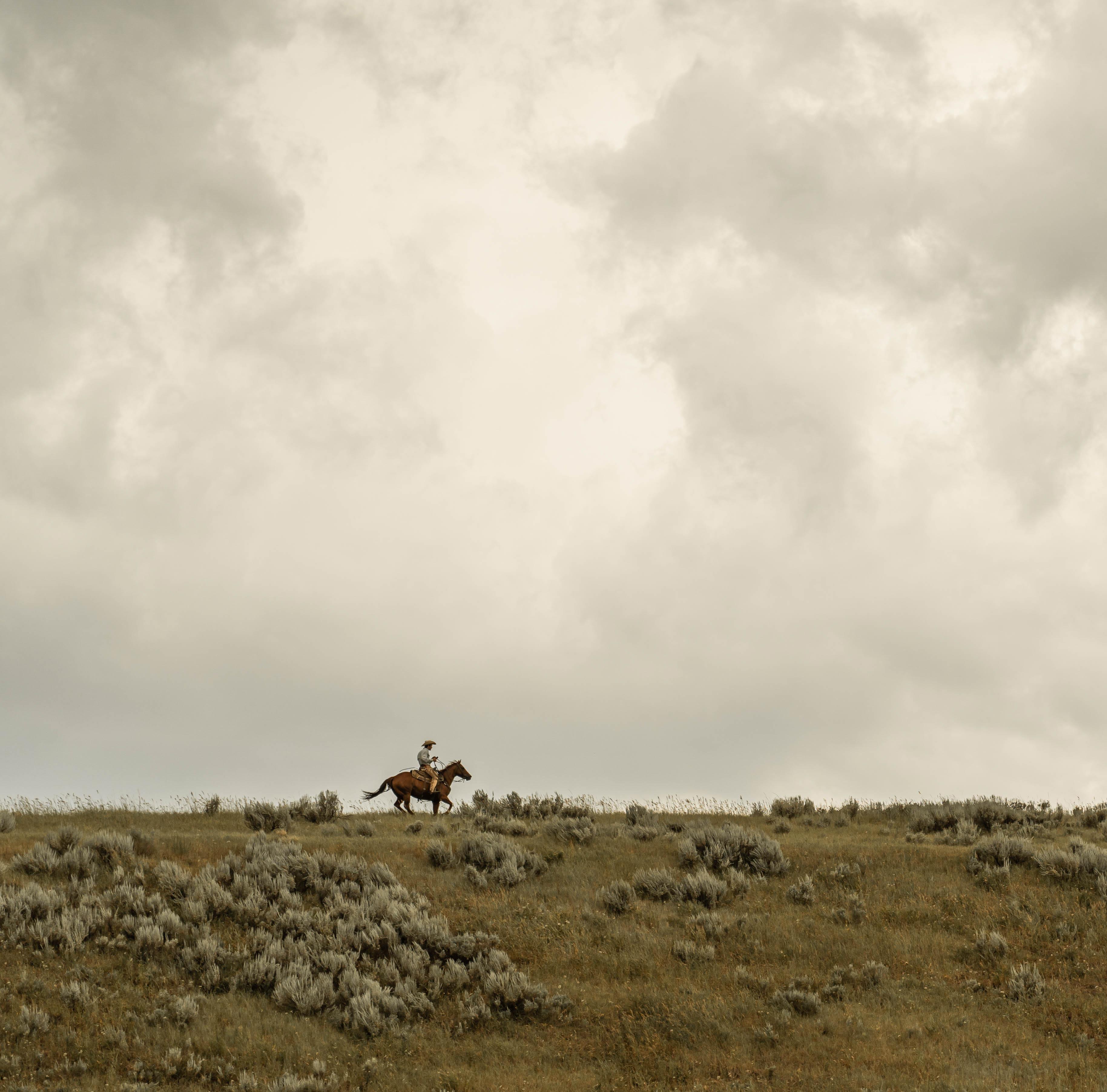
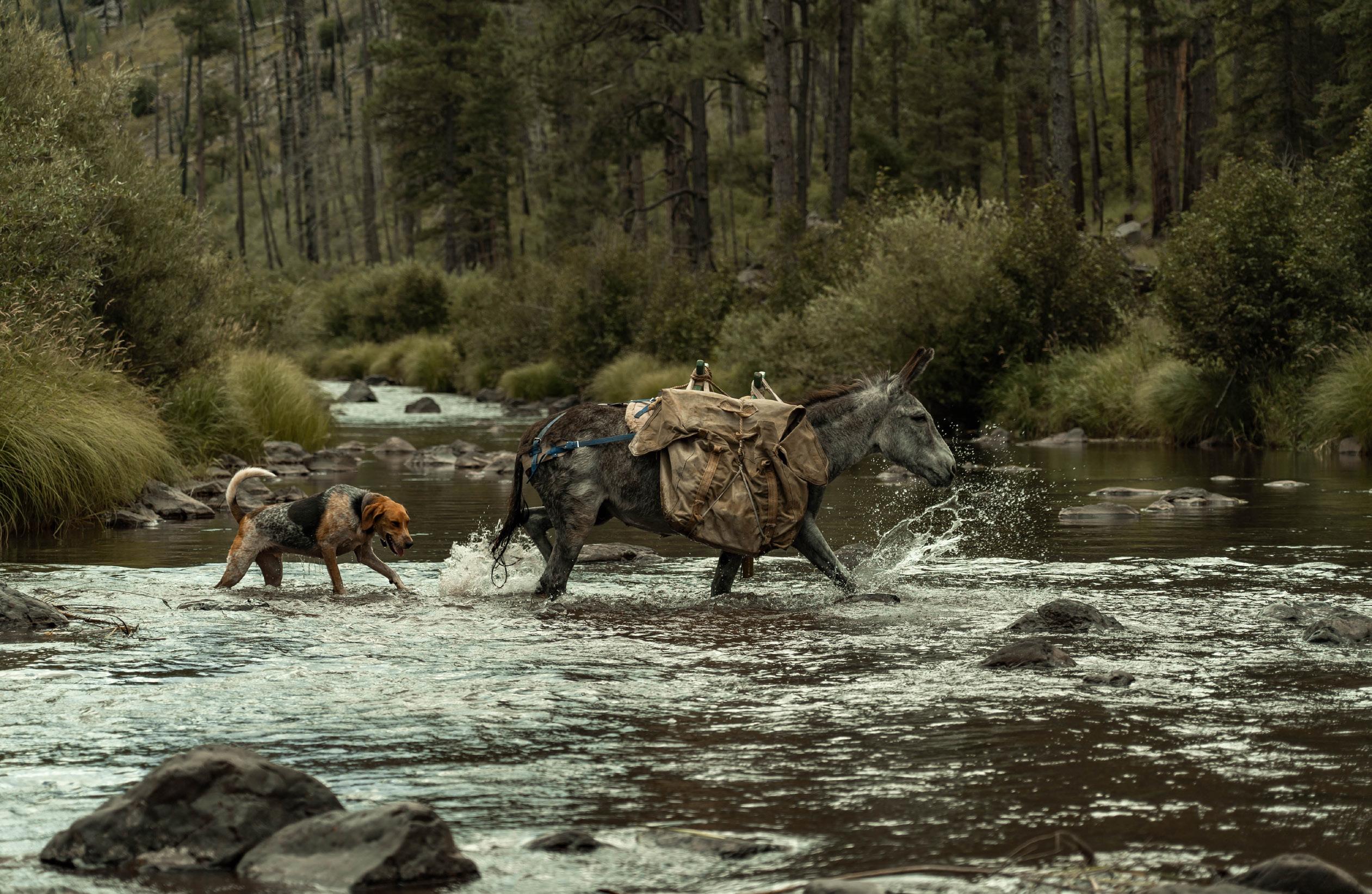
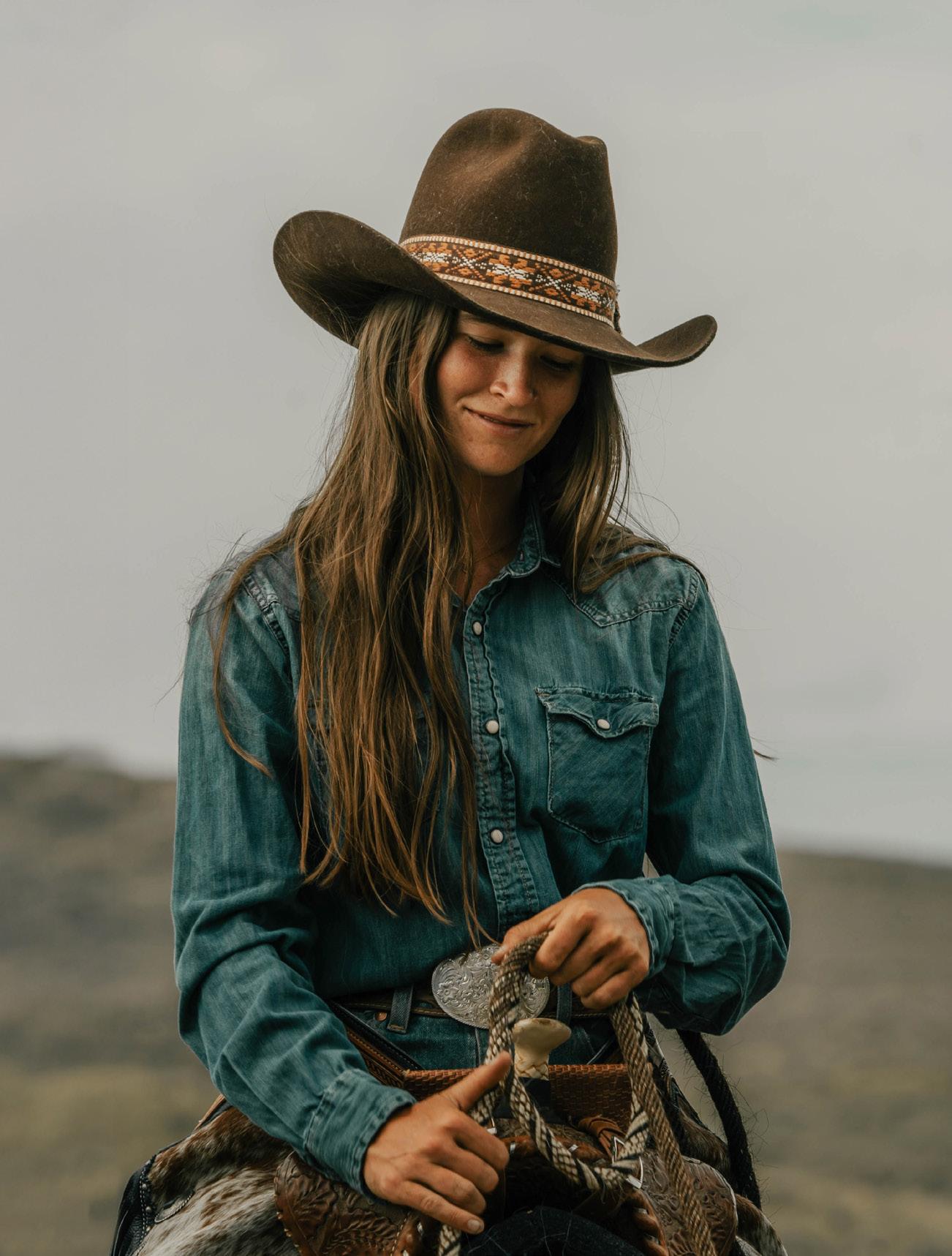
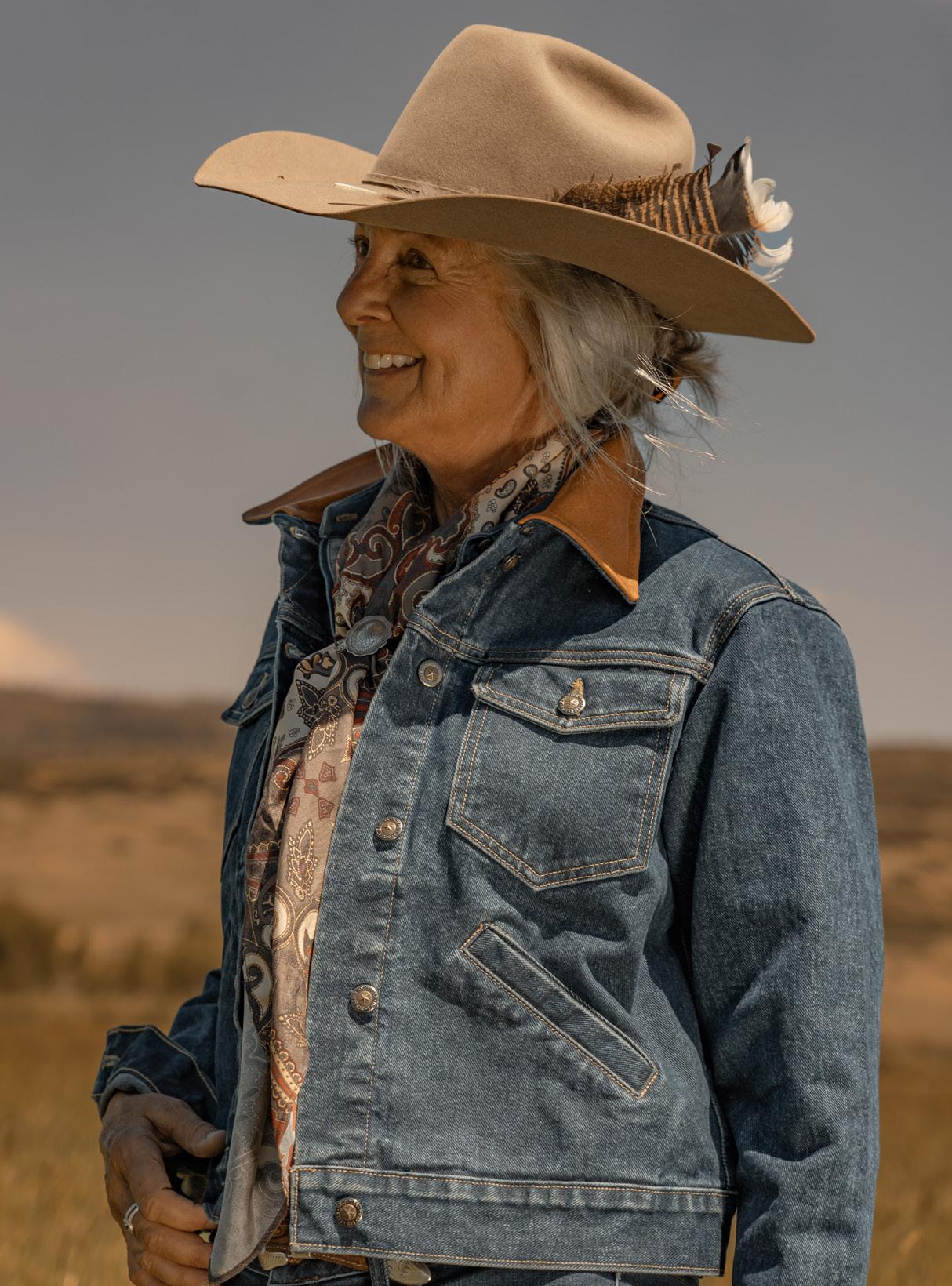

was, I had to figure some things out and maintaining a sustainable income was one of them.”
Getting “back in the saddle,” Kenzie directed her energy on growing her business, BonaFide Cowboy, and staying true to her vision: to capture authentic, genuine and real.
In the same month that she experienced her best month of revenue, she also lost her beloved grandmother. A few months later, a move back to Laramie, which had been on her heart for some time, opened new opportunities for her. With most of her clients already in Wyoming, the timing seemed perfect.
“Great lessons come after the storms,” she continued. “It’s tough when you’re in the middle of it, but once you get through it, that’s where the sunshine and good stuff is.”
Last year, when country artist Chancey Williams asked Kenzie if she’d be interested in filming a video for him, she was suddenly and unexpectedly propelled into the music video industry. She had shot still-photos for Chancey, and he liked her style.
“I told him, sure, I’ll give it a try,” Kenzie laughed. “God has a funny way of surprising me with things that I didn’t have planned.”
The first video she produced for Chancey Williams, “The Ballad of Uncle Don,” stayed at the top of CMT’s 12 Pack for four weeks. She now works continuously with him, often riding with the band on their concert tours, and has produced three additional videos.
“Everybody says life is like a roller coaster,” Kenzie said, “But to me life is like an ocean. There’s always waves - ups and downs, simultaneously. You just try to be prepared for whatever comes

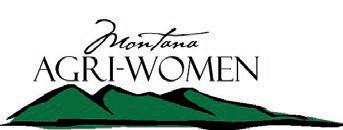



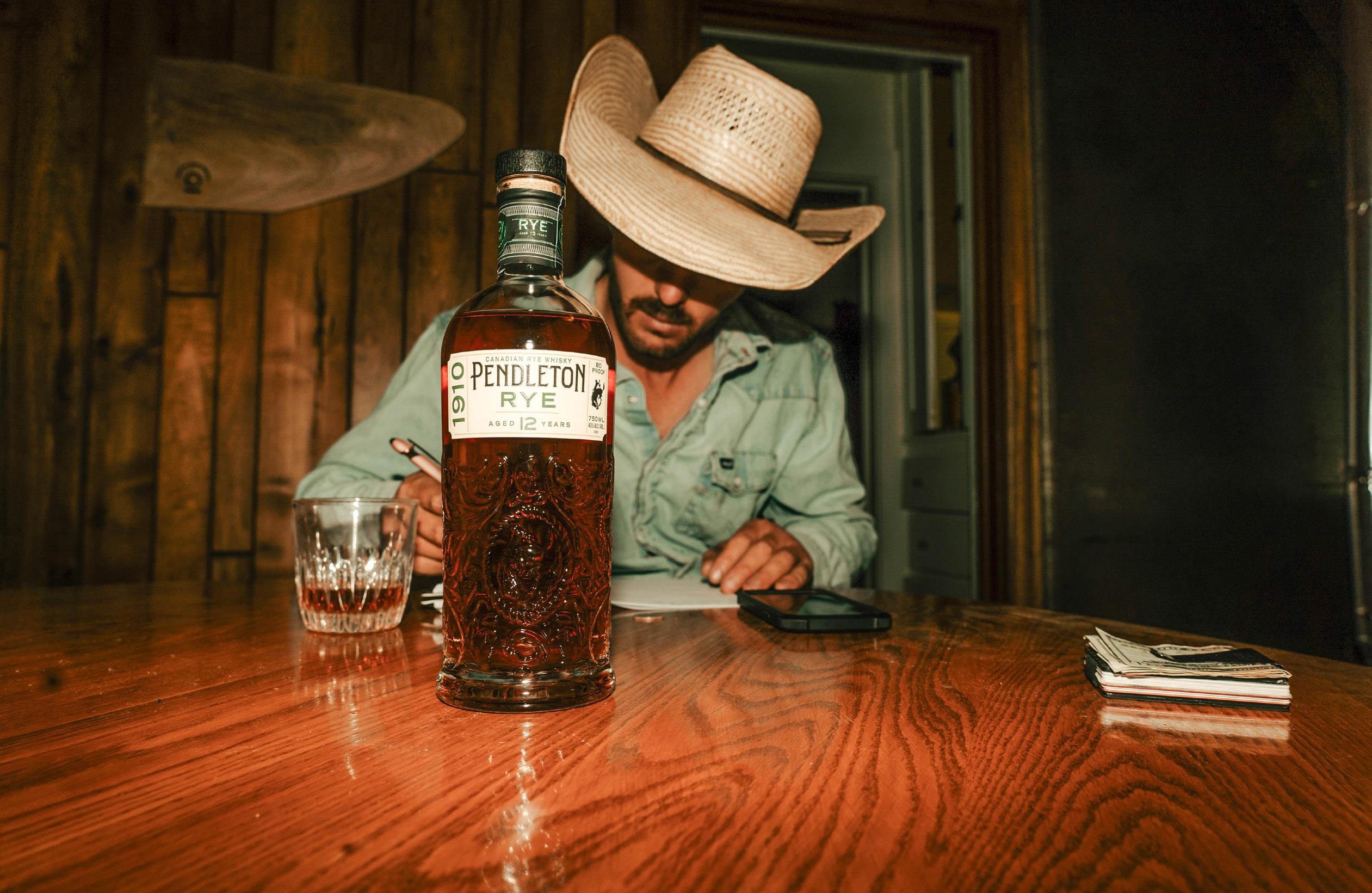
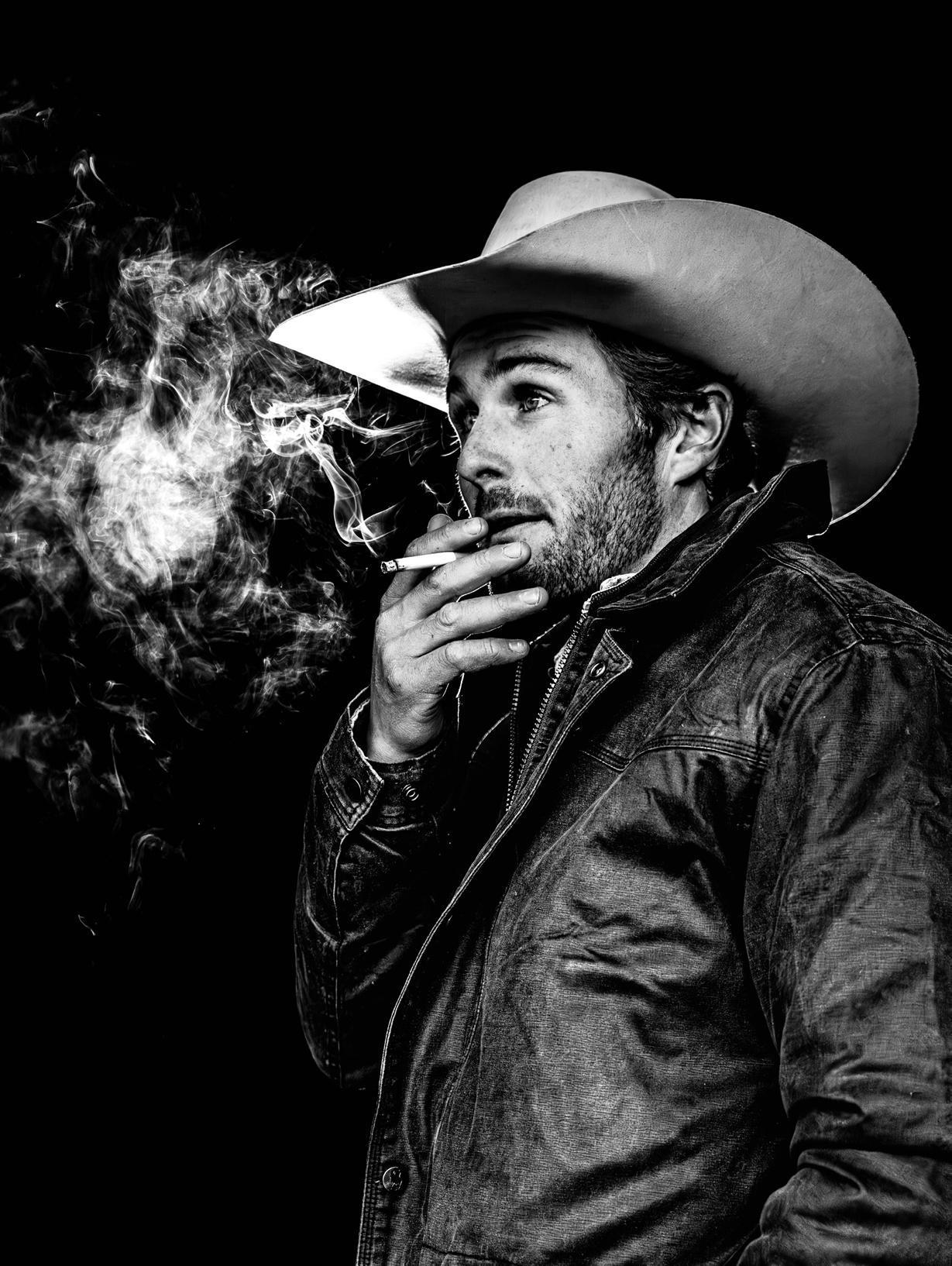
along. I used to plan everything in advance and had huge, lofty goals. But I realized sometimes the best things are things that can’t be planned.”
Her photos have an under-exposed appeal, the backgrounds are dark, sometimes mysterious, the subjects natural and unposed, often deep in thought. Her characteristic use of dim lighting sets a moody tone. She finds beauty in ordinary backgrounds and surroundings – a broken-down tractor resting at the edge of a hayfield, rose bushes growing rampantly next to a long-abandoned building. If a picture speaks a thousand words, Kenzie’s provoke deep thought and wonder far beyond the brief moment caught on camera.
“I love what I do because I love to see people’s passion and I try to capture that in my photos and videos,” Kenzie said. “We’re all designed for a purpose, and I feel like I’ve found mine.”
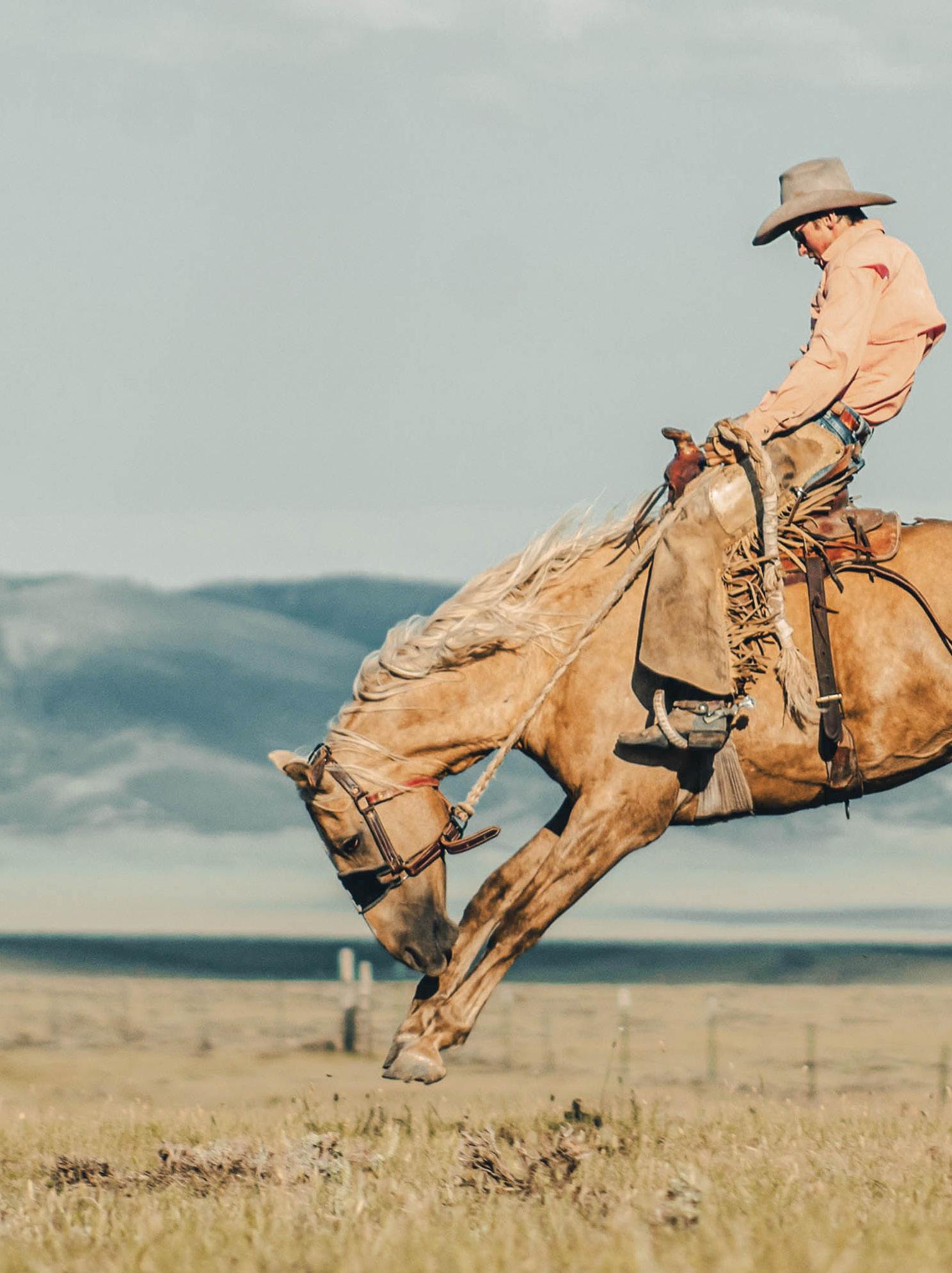

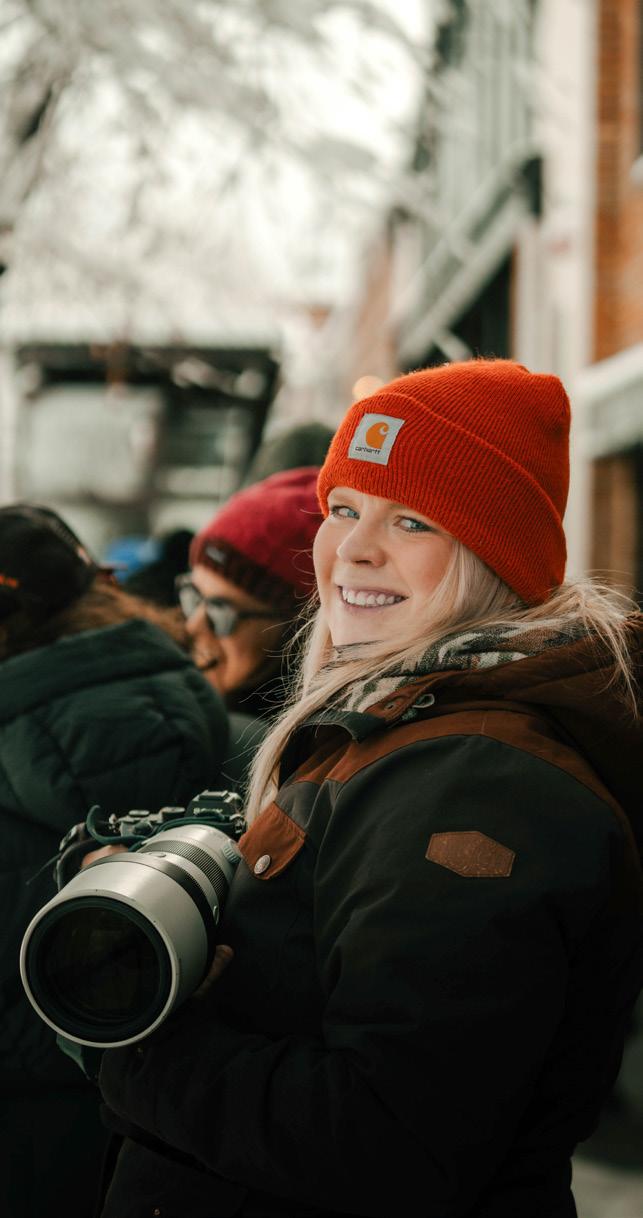

We first met Kenzie in 2019 while we were covering a ranch rodeo for our first issue. Because she had a camera and was getting shots we didn’t think we could capture, we approached her and asked if she would be willing to show us her work. She did and we were thrilled! One of those photos is on the cover of our first issue. We’ve come full circle. I have followed her career for the past seven years and recently asked if she’d be interested in coming with me to the interview with Herb and Susan Russell. It was a privilege to see her in action and use her photos in the feature.
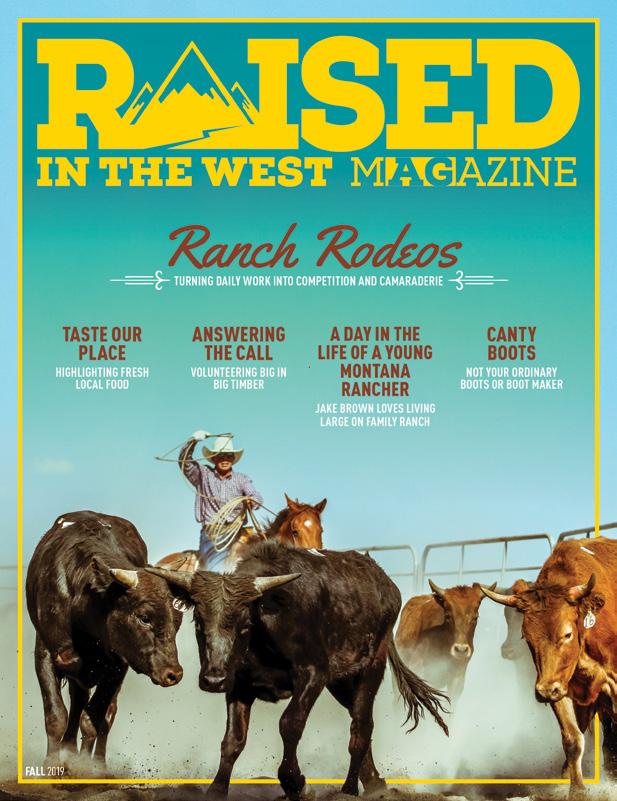
The Alpine Science Institute offers: Bachelor of Applied Science with focus on Outdoor Leadership Certificates in Trail Building and Mountain Bike Guiding. AA, AAS and AS degrees in Outdoor Recreation, Expedition Science and Regenerative Food Systems.
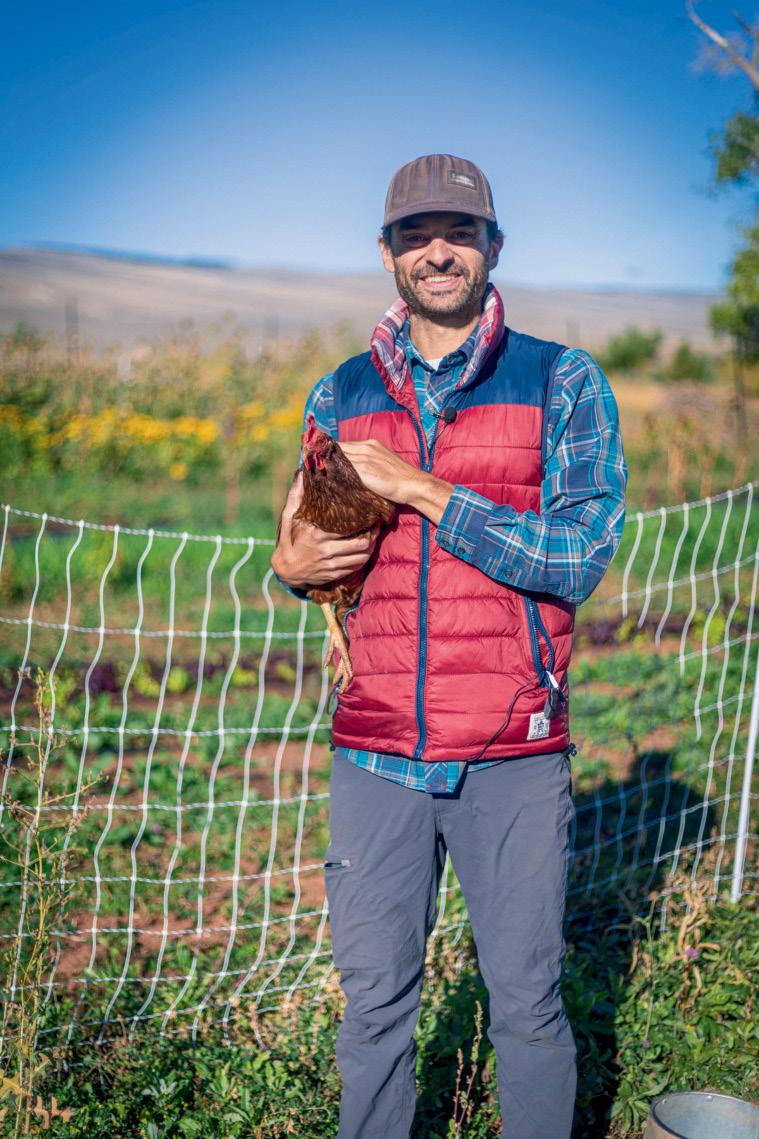

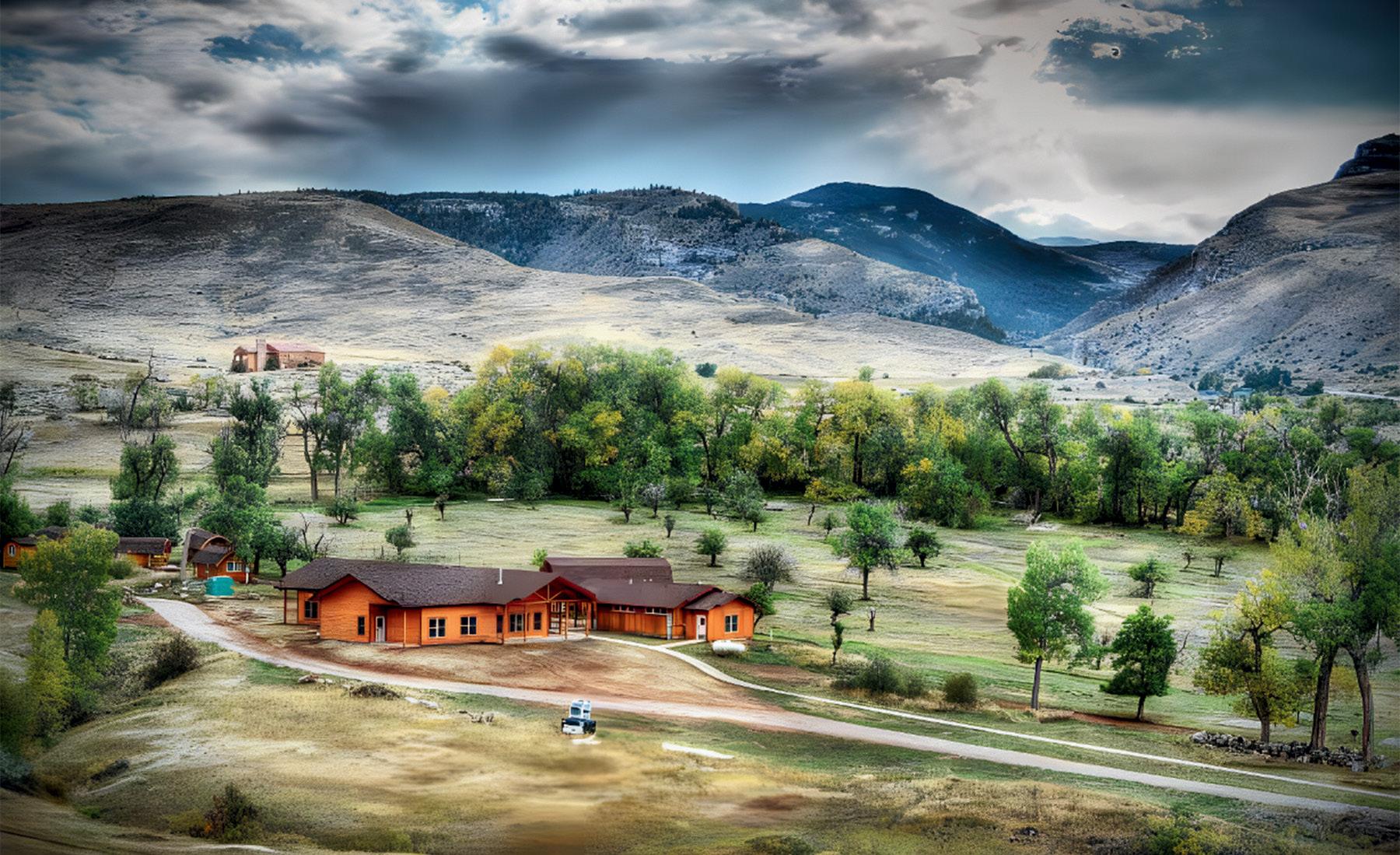


WWW.CWC.EDU

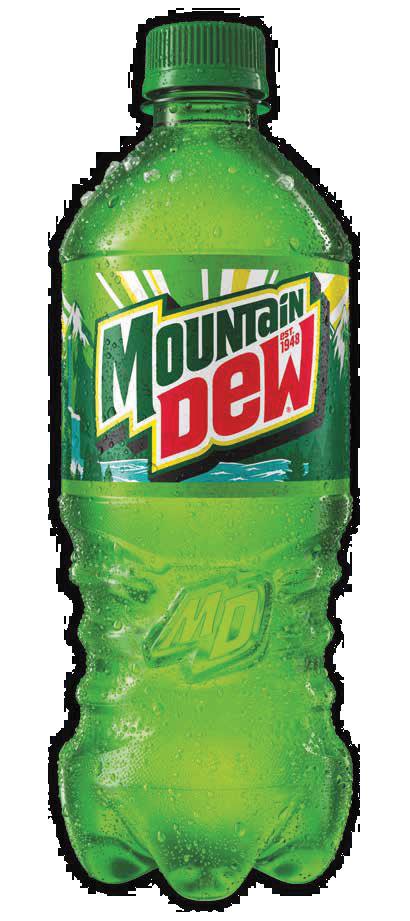








My Grandpa Boysen was an avid hunter and fisherman and lived in rural California surrounded by lemon, avocado and persimmon trees. Every Autumn, he sent my brother and me a package that, once we sliced the shipping tape, the box would burst open with the scents of his orchard harvest. Down deeper were secured plastic bags filled with his specially cured venison. The first treat we’d rip into was the jerky; it was tough, tear-with-yourteeth, soak-in-the-flavor as you gnawed on it, kind of jerky. And a perfect source of protein for bike rides or treks through our back woods. It’s taken me years, but I’ve finally come as close as I can to duplicating his jerky creation.
The secret to getting that smoky flavor is a two-step process. First smoke the meat and then dehydrate it.
INGREDIENTS
• Elk, deer, or antelopeeither steak or small roast
• Marinade
• Smoke Rub
DIRECTIONS: Step One: In a container, cover the meat with the marinade and refrigerate for 6-8 hours.

I am a proficient zucchini grower and at the end of the season, there’s always plenty. I’ve added a recipe for another way to use up excess. It’s perfect for breakfast or lunch, add a few sunripened tomatoes from the garden and you’re set.
For both the smoked trout and venison jerky, I used apple flavored wood chips. I also added a cherry blend to the jerky. I recommend a smoke rub such as Meat Church’s BBQ products-The Gospel: All Purpose Rub or Holy Cow Smoke for the jerky and the same rub or Holy Voodoo for the Trout.
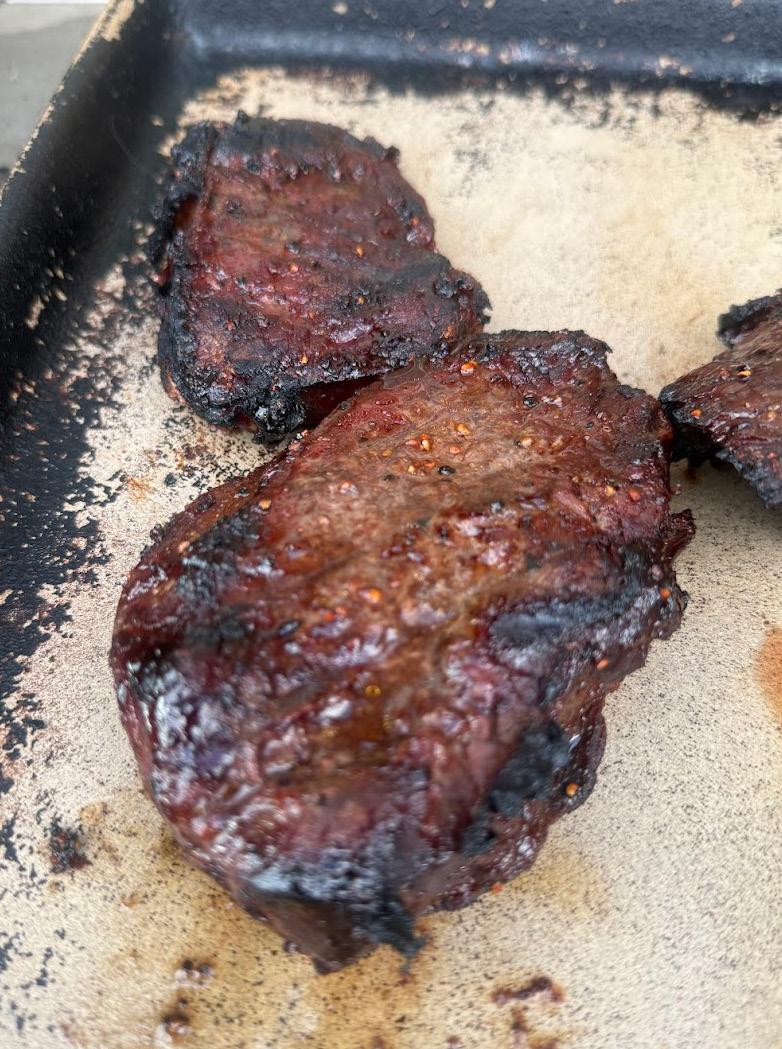

Preheat smoker to 275 degrees. Use wood chips or pellets to your liking.
Remove the meat from the marinade, place it on a cookie sheet and coat all sides with smoke rub. Place the meat in the smoker for 6-8 hours, depending on the size and cut of the meat. Cook to an internal temperature of 160-165 degrees. When done, remove and let it cool.
Step Two: Set Dehydrator temperature at a range of 94 – 104 degrees
Sliced cooled meat into 1/8 to ¼ inch thickness.
Layer the strips on each tier and dehydrate for approximately 8-10 hours. The end goal with this recipe is to create a tough textured jerky, not moist. Great for going into a pack, hardy for short and long-term and can travel anywhere.


INGREDIENTS
• Trout-fileted
• Smoke Rub
• 1 orange-sliced
• 1 lemon-sliced
DIRECTIONS: Preheat smoker to 275 degrees. Use wood chips or pellets to your liking. Place the trout on a cookie sheet, skin side down. Coat the trout filets (the meat side) with smoke rub and place the sliced oranges and lemons along each top of the filet. Place the trout in the smoker for 4-5 hours. We like our smoked trout cooked well, and by smoking it for 5 hours, the skin will peel away from the meat. The safe temperature to serve trout is 145 degrees. This is great to eat once it’s done or to reheat. Another way to carry the trout further, is to dehydrate it into a jerky to pack anywhere.


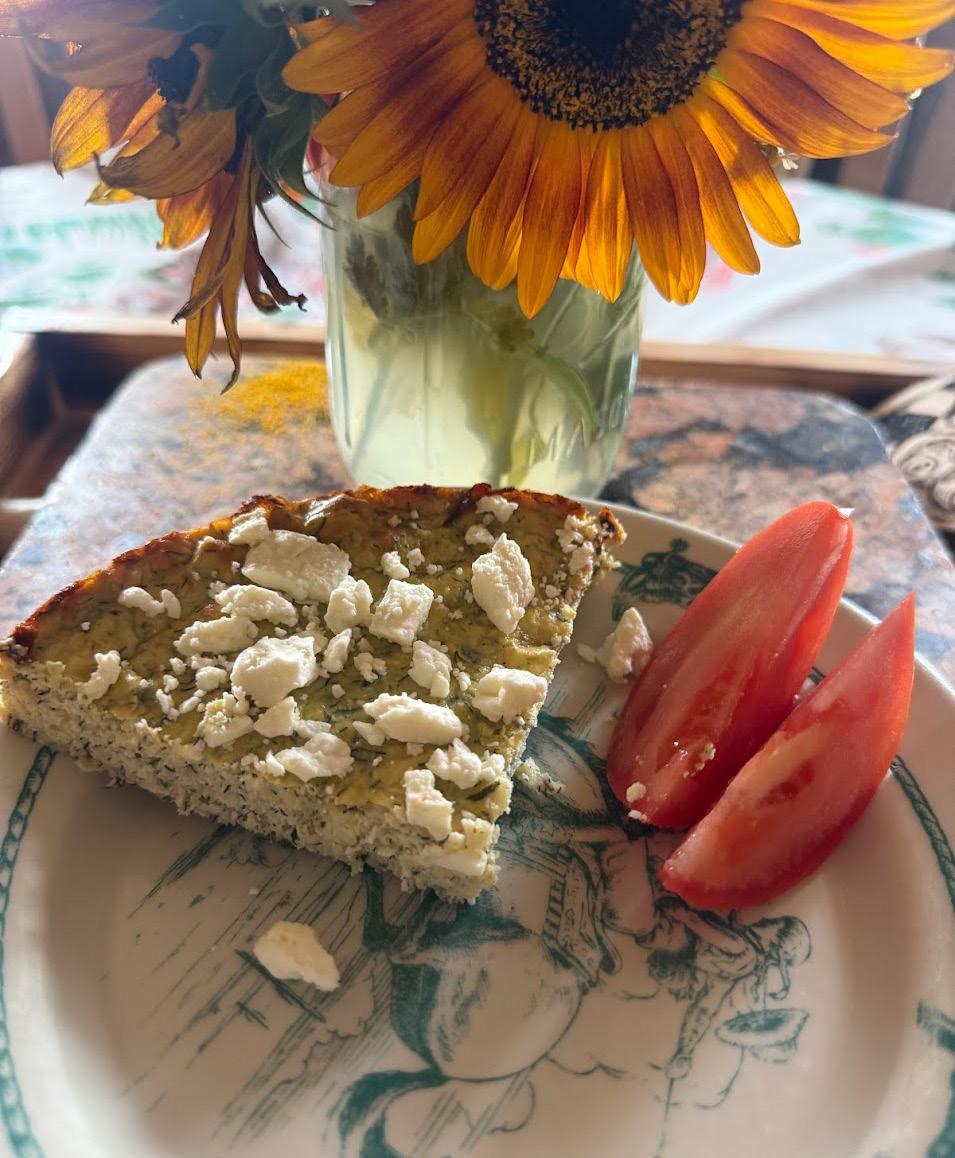
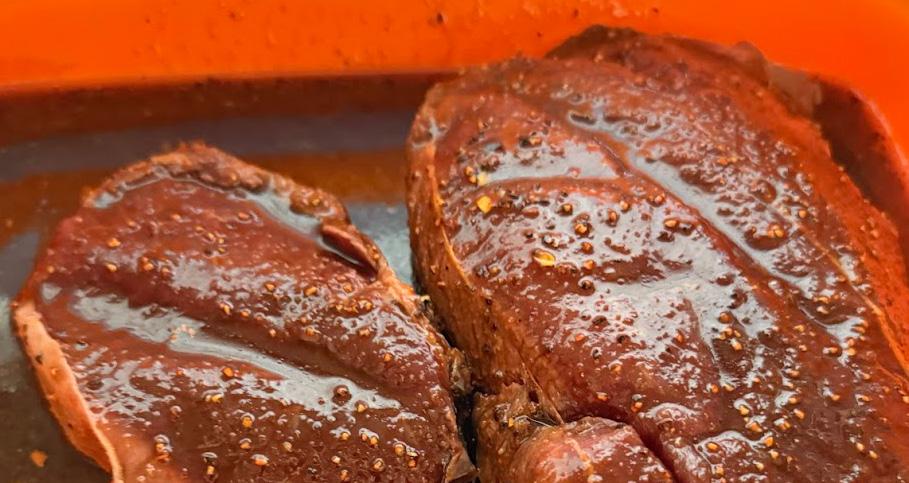
INGREDIENTS
• 1 cup brown sugar
• ½ cup butter
• ½ cup soy sauce
• 1 Heaping teas red pepper flakes
DIRECTIONS: Put all ingredients in a small saucepan. Cook on medium heat until evenly combined. Cool for about 10 minutes and then pour over the meat.
Use two 6 inch springform pans which make 6-8 servings
INGREDIENTS
• 30 ounces Ricotta Cheese
• 1 cup parmesan cheese-grated
• 2 cups zucchini-grated with water drained
• 1 Tbsp garlic-minced
• ¼ cup Dill-fresh and chopped
• 1 Tbsp Lemon zest
• 2 eggs-beaten
• ½ cup Feta cheese-traditional or a chive mixture
• Dash of salt and pepper
DIRECTIONS: Preheat oven to 350°F (165°C). Spray springform pans with baking spray.
Combine all of the ingredients except the Feta cheese in a mixing bowl. Mix well. Pour into the spring form pans and spread evenly. Top with chunks or crumbles of Feta cheese. Bake for one hour or until the Feta is melted and the cheesecake is slightly golden and does not move in the center. Remove from oven and cool for 10 minutes. Serve warm or let it chill to serve. For garnish, add a garden fresh tomato.








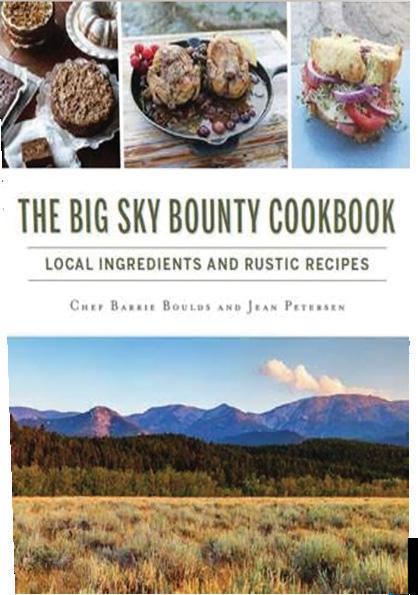
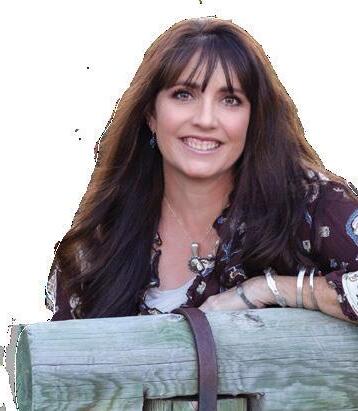

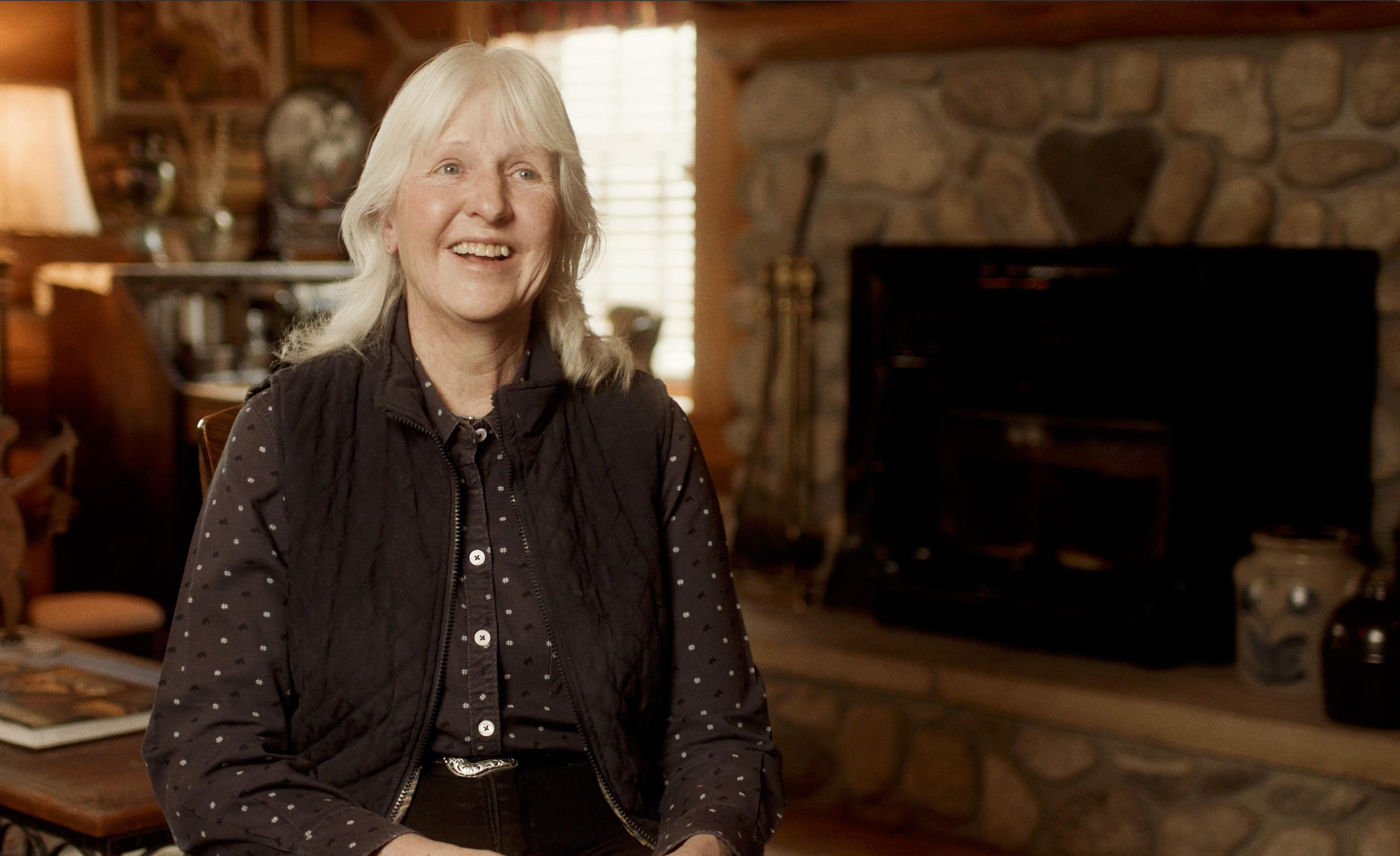
“I

– Michaele Dimock
After years of pain, Cody local Michaele Dimock found hope—and healing—through Cody Regional Health Orthopedics.
“I’ve lived on the South Fork near Cody for 30 years. When I started feeling pain with every step, I couldn’t do the ranch chores I loved. I knew I needed help.” Michelle’s journey led her to Dr. Mark Ryzewicz and the expert orthopedic team at Cody Regional Health. “Dr. Ryzewicz explained everything before and after surgery. The staff were warm and friendly. Today, I can walk without pain, drive my car, and even engage the clutch again.” If you’re struggling with joint or mobility issues, trust the orthopedic specialists your neighbors rely on.

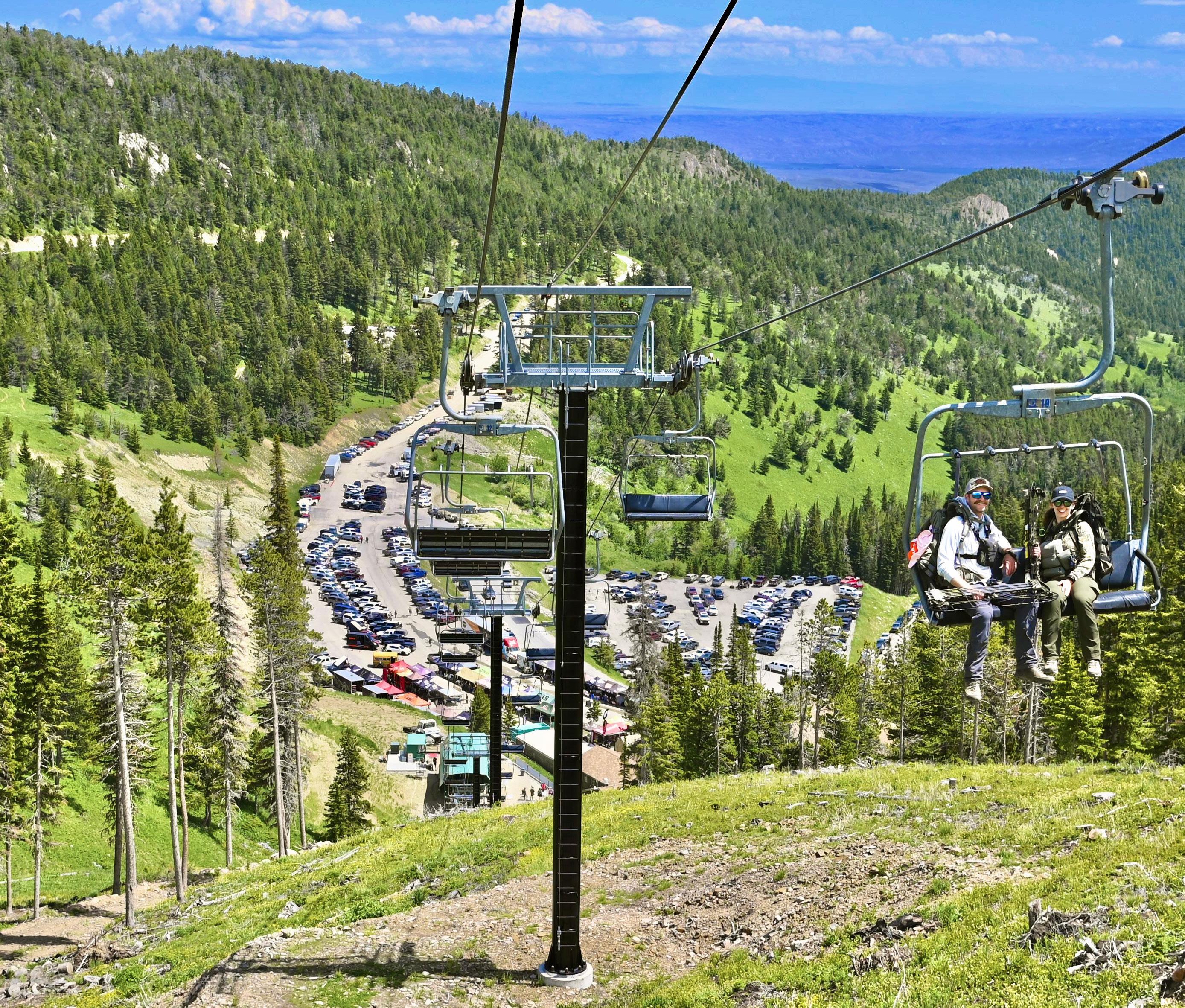
Thousands of camo-clad archery shooters traversed the snowless slopes at Red Lodge Mountain, shooting their way through 3D courses set up to hone their skills and test their marksmanship. Dozens of archery enthusiasts carrying bows and quivers filled with arrows, packs and harnesses strapped to their torsos, were visible from the chairlift.
Hosted by Total Archery Challenge (TAC) in late June, it was a bow hunter’s paradise as the archery community came together to participate in one of 14 such events held throughout the U.S this summer - and the first one ever held at Red Lodge.
“Red Lodge Mountain has been an amazing venue,” Conner Brockhouse, TAC Event Coordinator said. “The feedback we’ve received from the participants has been nothing but positive. The Red Lodge Mountain workers went above and beyond. We give it a 10 out of 10 rating.”
Red Lodge Mountain typically shuts down as a ski hill on April 15 to comply with the operating plan they have with the Forest Service and private landowners. That all changed last year with the installation of their new chairlift - Stache Express.
“In previous years, we allowed foot traffic up the hill,” Troy Hawks, Red Lodge Mountain Marketing Director said. “But the Stache Express chairlift slows down enough that people on foot can load. We’ve never had that before and it’s opened up more opportunities for us, including the archery event.”
In groups of six or less, the archers hiked into areas that had been designed by the TAC team. Over 100 3D targets challenged the skills of the participants as they adjusted for distance, angles and natural obstacles. With over 2400 registered participants, the mountain was as full as a busy ski day.
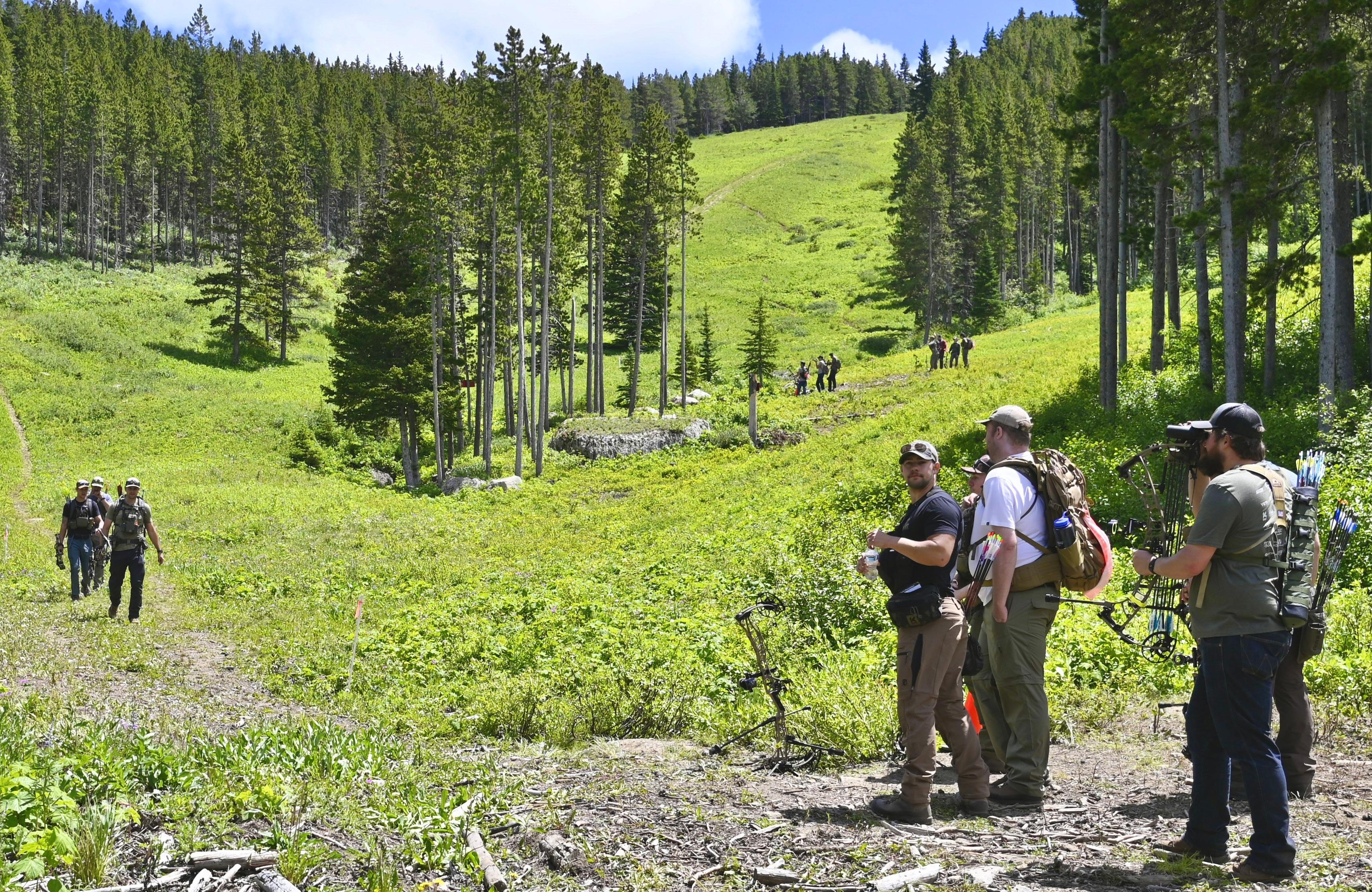
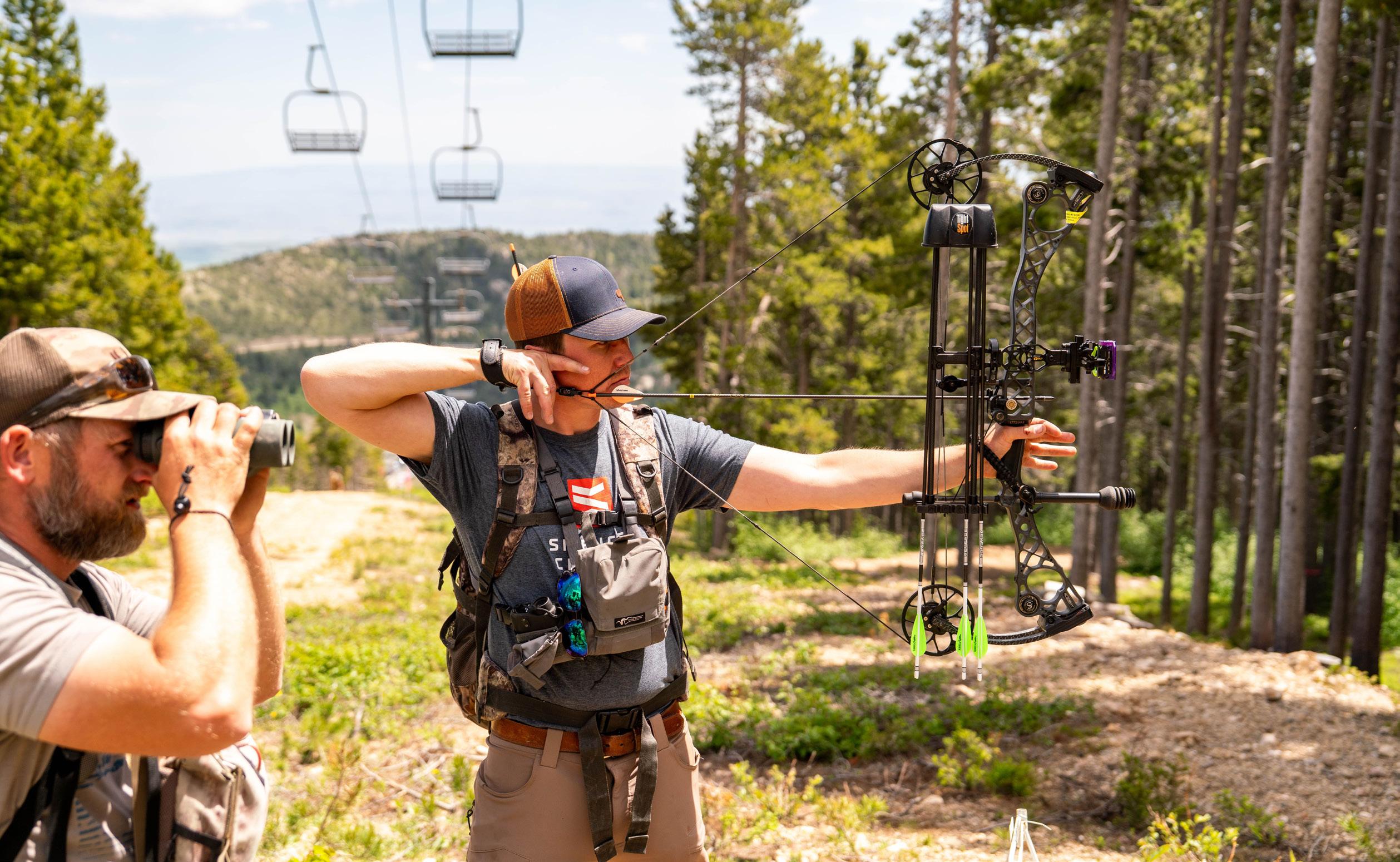
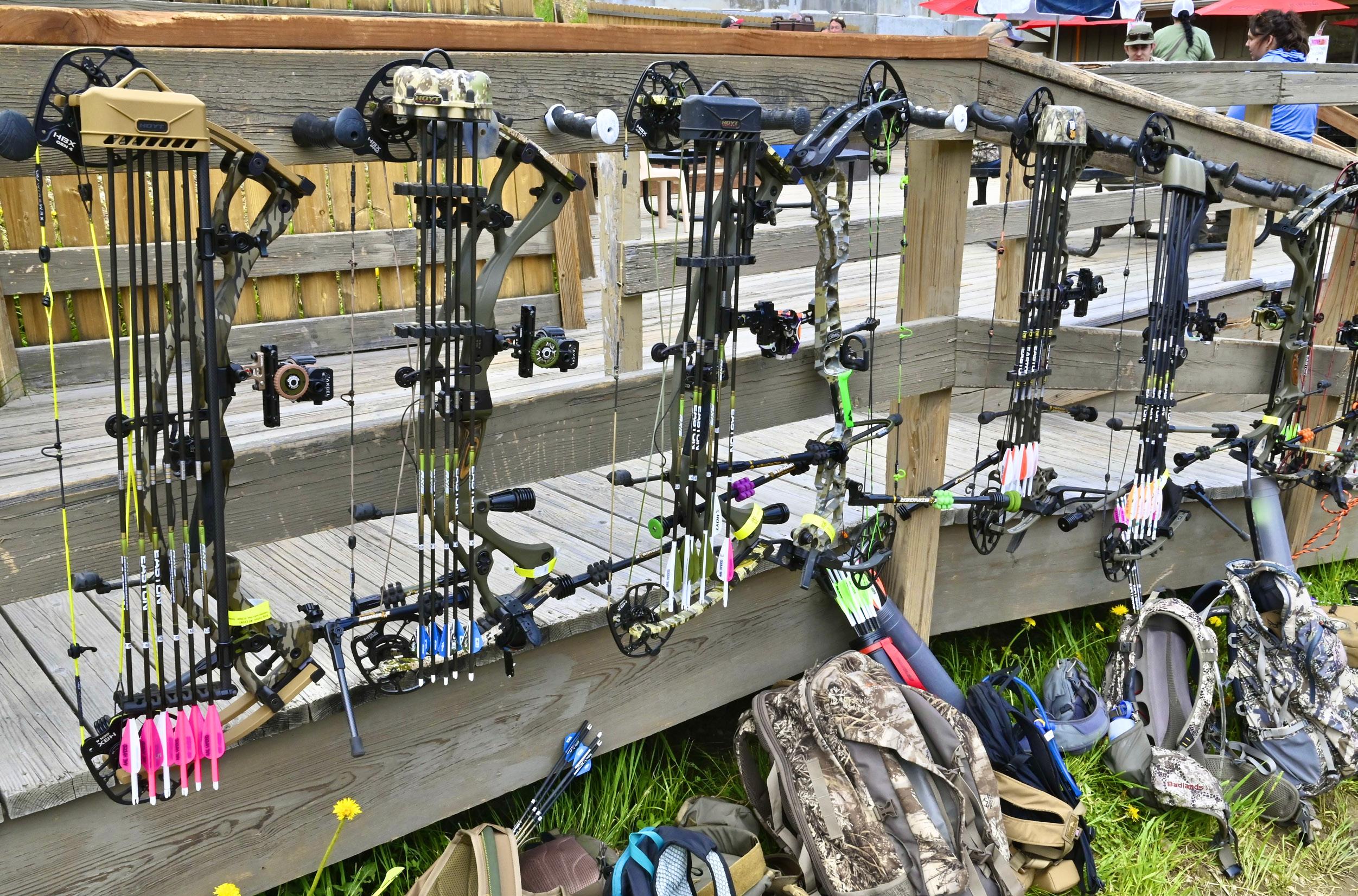
Set along slopes and forested areas, with rocky crags and slippery trails, the professionally designed courses were accessed by the Stache Express and the Palisades chairlifts to accommodate the hunters. But the courses were not for the faint of heart as they set up for the best position to score their mark on targets that ranged up to 100 yards.
For five Montana hunters, it was an opportunity to get together with good friends and have a little healthy competition. Chad Wiberg, Theresa Dighans, Zach Starcher and brothers, Tyler and Christ Hereim have known each other for years and often hunt together. This was an opportunity to bring out the bows and shoot for bragging rights.
scope and shoot. Even from 65 yards or more, the soft thud of an arrow scoring the hit could be heard.
Binoculars verified the accuracy of the shot, and the points accumulated as congratulations or laughter followed, depending on where the arrow landed.
has been an amazing venue. The feedback we’ve received from the participants has been nothing but positive. The Red Lodge Mountain workers went above and beyond. We give it a 10 out of 10 rating.
— CONNER BROCKHOUSE, TAC EVENT COORDINATOR
“We’ve been to TAC events before and this has been a great one,” Chad said. “It’s friendly competition for sure, but I like to win!” And he did, narrowly beating Zach at the end of the weekend by one point.
Chad’s friends echoed his sentiments. As the five of them worked their way through the Sitka Course, they took turns stepping up to measure the distance with range finders, taking their time to
“Some of these aren’t really realistic shots,” Theresa commented. “There’s a lot of variables that could go wrong if you’re shooting an animal at that distance. Most of us would wait for a much better shot to ensure that we didn’t wound the animal. But it’s been a great event, and the views and scenery are incredible.”
“A lot of the shots wouldn’t be ethical shots if you were hunting,” Chad added. “But this event makes you a better shooter and pushes you to the limit, and even past your limit.”
TAC doesn’t gather scores or offer awards at the end of the day. It’s non-competitive and just for entertainment. Judging by the endless smiles and laughter, everyone was having a great time.
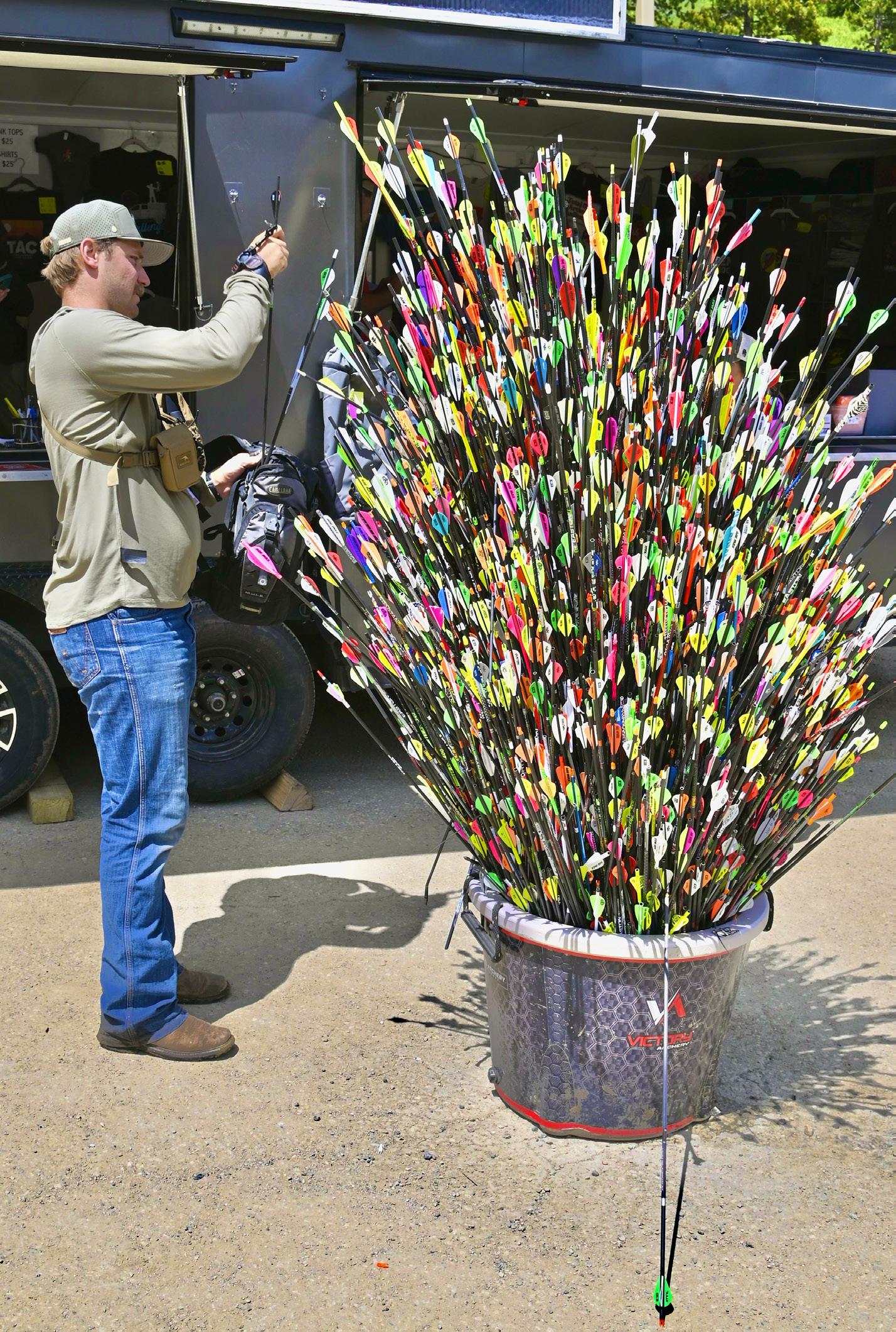

“We give people a score card for their own use,” Conner continued. “It’s fun for each group to track how well they are doing, but this event is meant to bring people together and enjoy the outdoors.”
Although the shooters were from 43 states and three countries, it didn’t stop them from bonding through the day. A group of Canadian hunters agreed that some of the shots were hard but also added that the challenge is where the fun is.
“Can you imagine dragging a carcass from that spot?” one of them commented. The target on the Sitka course was about 70 yards downhill in heavily timbered terrain. “I think I’d wait for a better shot, but it’s sure fun!”

As the groups of archers made their way through the courses, they coached one another on ways to increase their accuracy. With a slight breeze, many had advice on adjusting sites, or where to aim.
Along another course, husband and wife, Tyler and Rebekah Weeding were shooting together. Tyler shot competitively in his youth and he and Rebekah enjoy hunting together now.
“This is the fourth TAC I’ve been to,” Tyler said, “and Red Lodge has been the best. The courses are set up really well. I’ve taken shots this weekend that I wouldn’t typically get to take. The scenery, the shots, it’s all been very cool and unique.”
On the Palisades side, Tyler remarked about a target that was accessible only by crawling over the top of jagged rocks to make the shot on a bedded animal target.
“It was positioned so that you didn’t have a clear view, it was

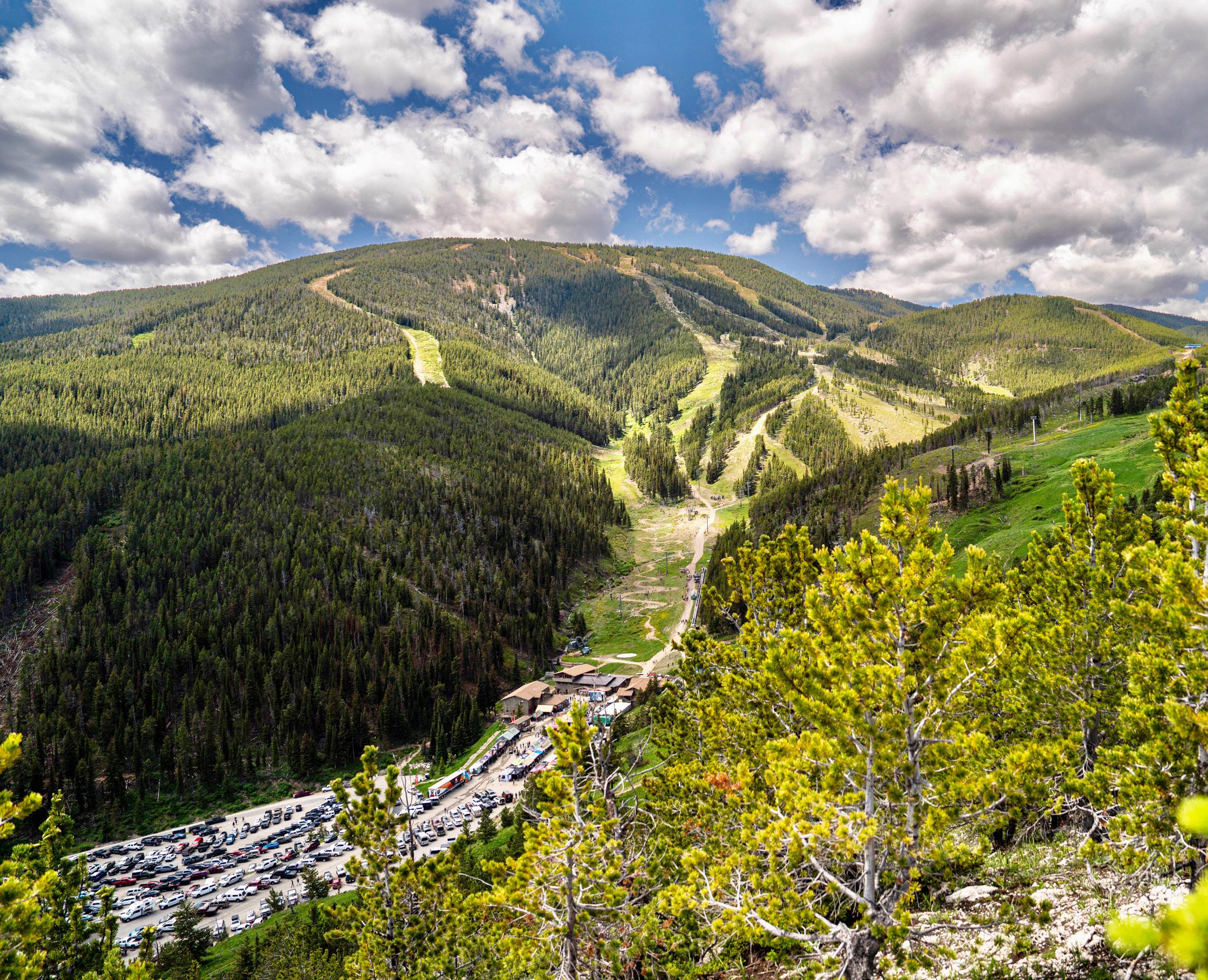
obstructed by branches and overgrowth. It was very technical,” he explained. “And was the hardest shot I took.”
Down at the ski lodge, novelty shots were set up for those hoping to test their luck at winning prizes including a 2025 - completely decked out - Ford F-150. But the chances to win take expertise, luck and a little money. Fifteen dollars buys one opportunity to hit a bullseye on the side of a caribou at 111 yards, to quality to put your name in a raffle for the truck.
“At the end of the year, we’ll have about 250 names,” said Cayden Brockhouse, a TAC employee running the course. “From over tens of thousands of tries.”
Another novelty shot was a 3-inch hole on the side of a metal rhino offering the chance to win hunting gear. The “ping” of an arrow hitting the metal instead of the foam target was a sure sign you broke your arrow. There was a lot of that.
“There goes another $30 arrow,” Cayden quipped, when another ping sounded. “But this is a fun challenge for these guys, they
can’t stop trying.”
Along with those two targets were dozens of others set up for kids and participants new to archery. Throughout the three days, hundreds of shooters practiced their shots on the range.

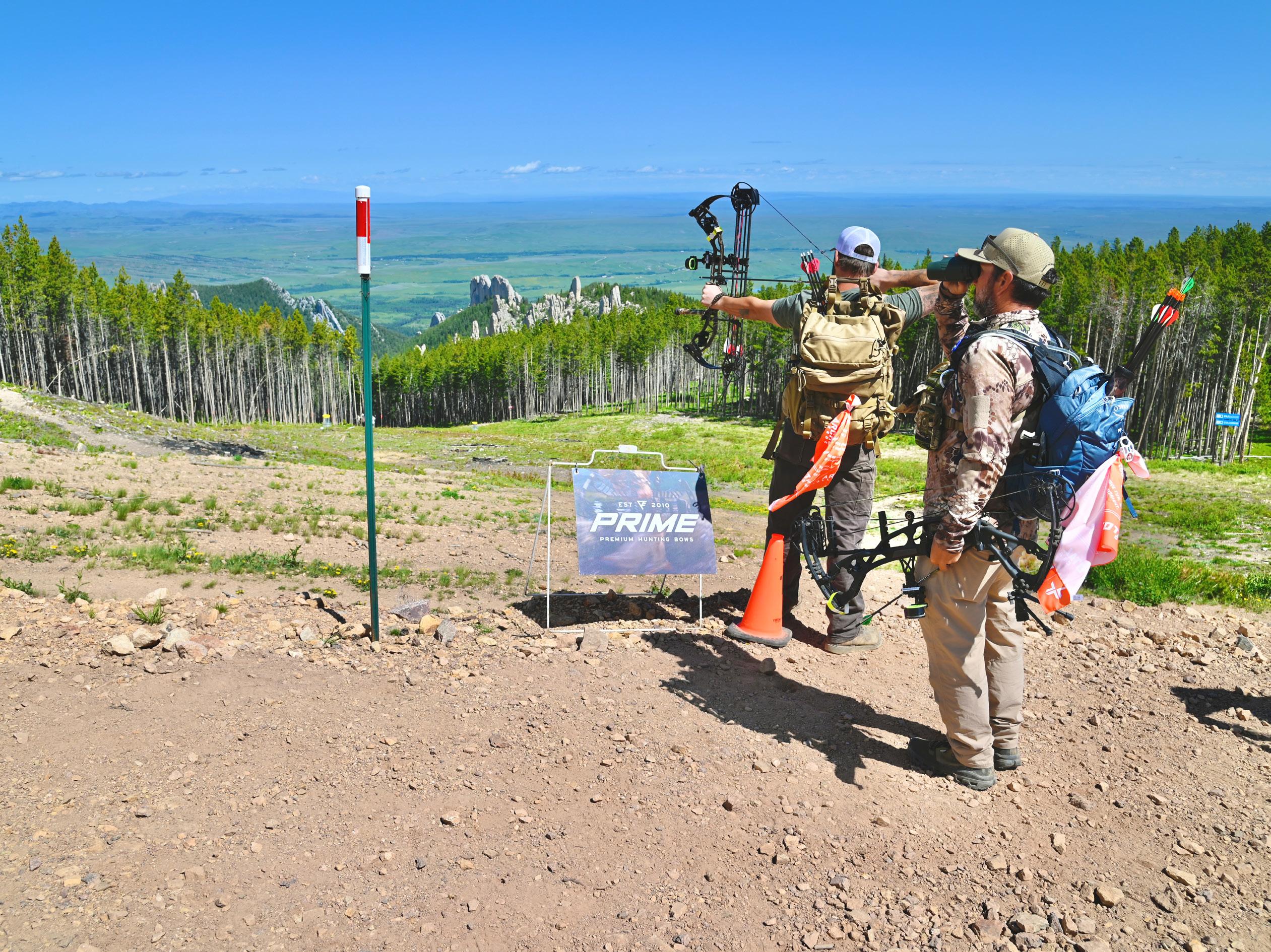
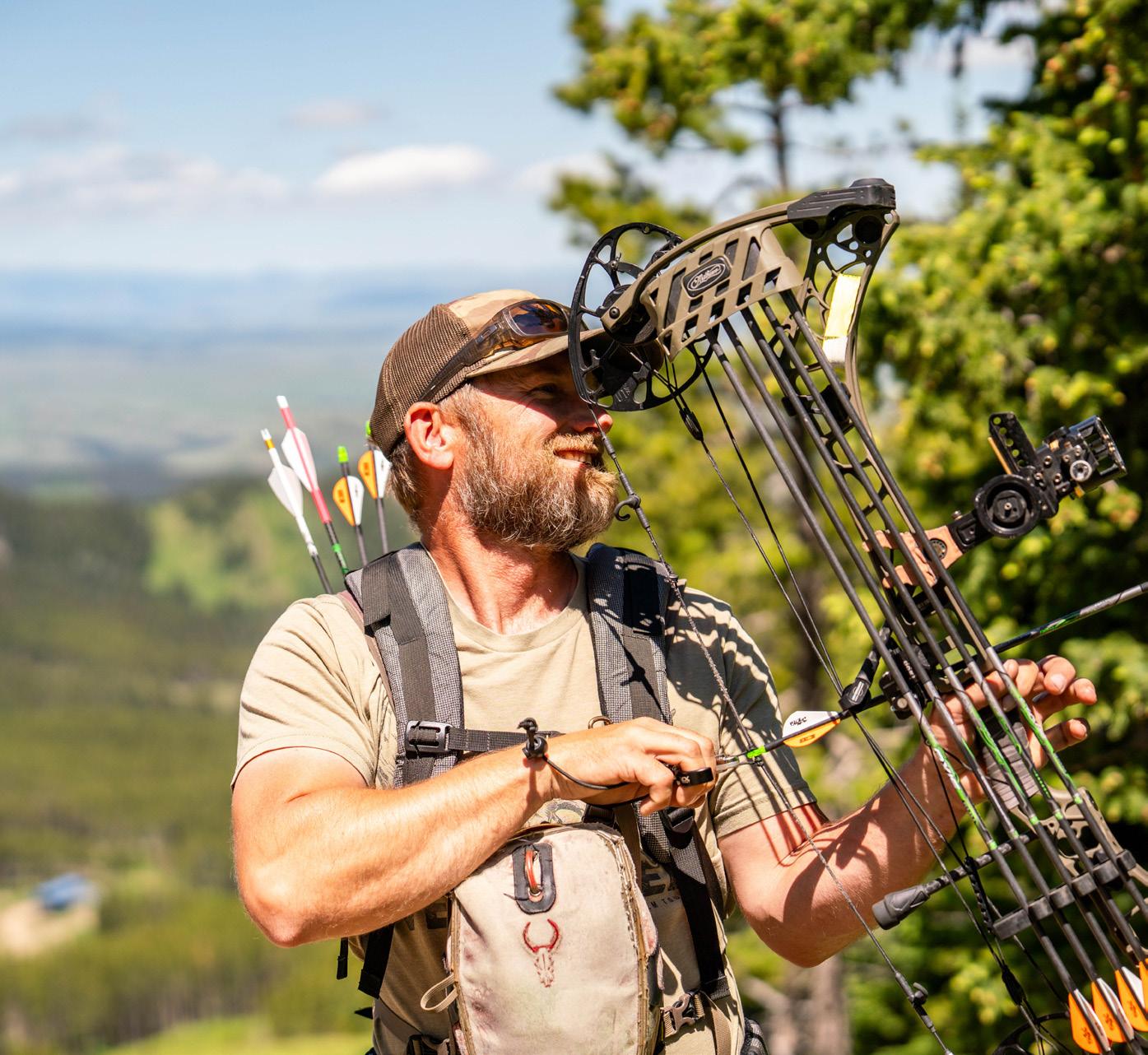

With thousands of arrows being shot across the mountain courses, many were lost and broken, never to be used again, but there’s a competition for finding those arrows too. Every dozen arrows turned in becomes a chance for a prize. By the end of the three days, a six-foot-high bouquet of thousands of colorful arrows stood in front of the registration trailer.
“It’s just a way to keep the area clean,” Conner said. “We like to leave the facility cleaner than when we arrived.”
The upper parking lot of the ski hill was home base to dozens of vendors introducing the latest in archery equipment. For shooters waiting for their Nock time, there was plenty of shopping to do, or a beer and burger to enjoy at the Bierstube.
The respect the participants showed for the course, the event and each other, was evident. Even with thousands of folks walking across the lower mountain, at the end of the event no evidence of their being there could be found.
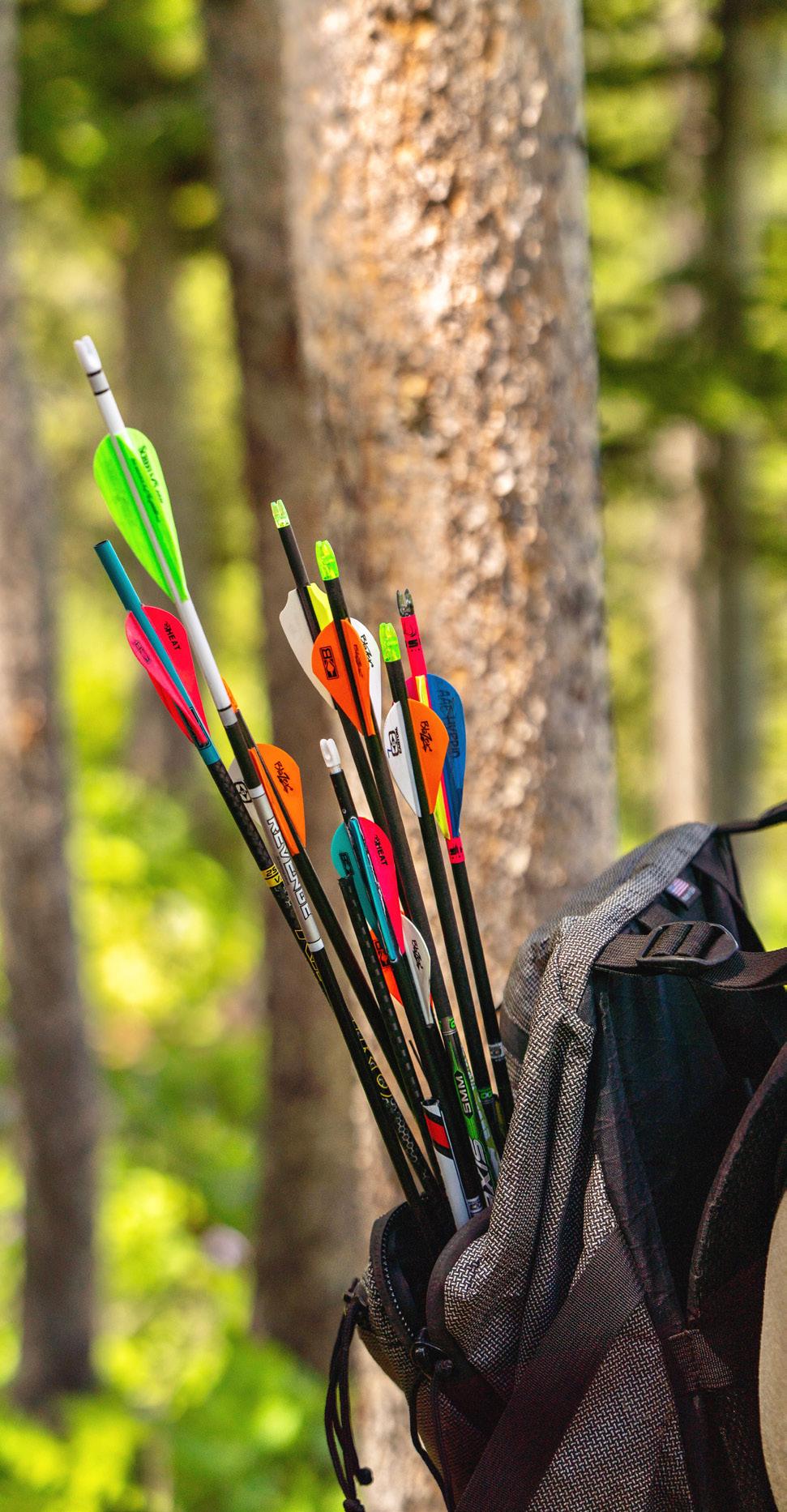
“We’re delighted with the TAC event and how it turned out,” Troy Hawks continued. “They came with great attitudes. This is the type of event we’d love to see more of at Red Lodge Mountain.”

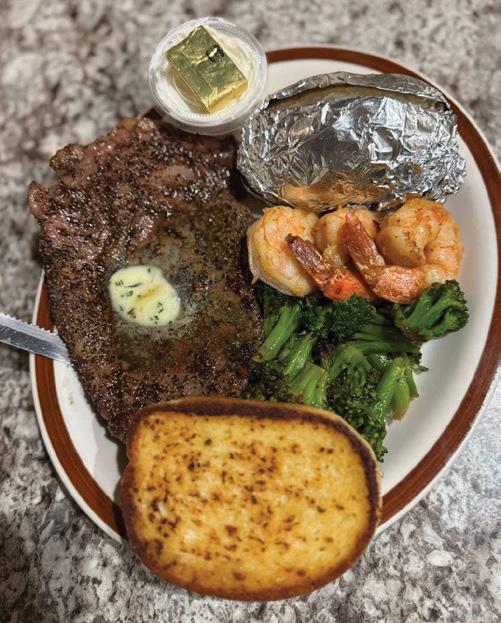




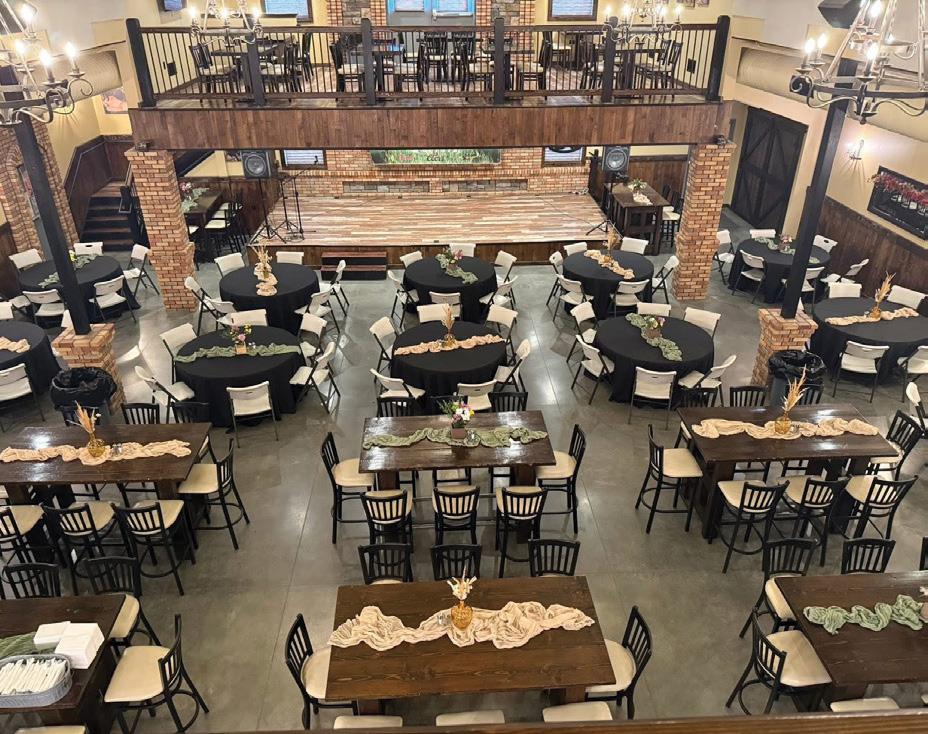



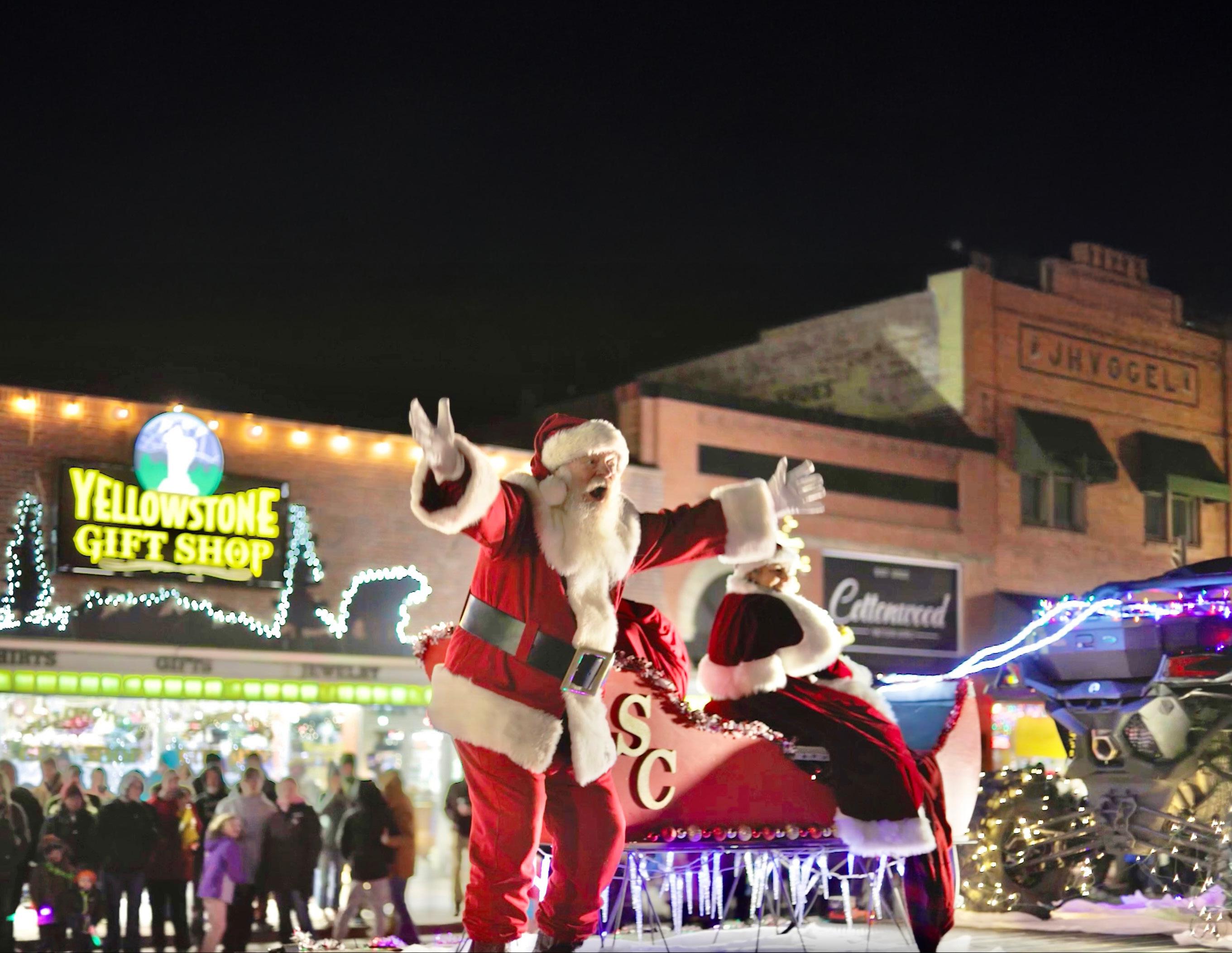
When the first snowflakes start to fall in Cody, Wyoming, they don’t just blanket the mountains, they dust cowboy hats, saddle horns, and the hearts of everyone lucky enough to call this place home. This is where the untamed spirit of the West meets the cozy magic of the holidays and nowhere is that truer than during Cody Cowboy Christmas: Saddles & Sleigh Bells.
Nestled just days after Thanksgiving, this heartwarming weekend invites you to slow down and savor the season. From festive floats and carolers echoing down Sheridan Avenue to storefronts aglow with lights and Western hospitality at every turn, Cody transforms into a scene straight from a Hallmark Christmas movie—except this one has boots, spurs, and plenty of grit.
This year’s theme, Saddles & Sleigh Bells, celebrates the rugged elegance of a Western Christmas. It’s a chance to gather with neighbors, support local artisans, and experience the kind of small-town joy that’s hard to find these days—but always alive in Cody.
The streets will be shut down, but the doors of the businesses will be wide open, offering holiday shopping, special offers and winter beverages. Visits from Frosty the Snowman, The Grinch and Santa will delight the smallest shoppers. Carolers, live music and a Little Miss Snowflake pageant are just a few of the familyfriendly events.
Visitors are welcomed like old friends, whether it’s your first trip to Cody, or your fiftieth. Local businesses open their doors with hot cider and handmade gifts, families line the streets for the parade, and the air carries that unmistakable mix of woodsmoke, fresh snow, and excitement.
So pack your boots and your holiday spirit, and head to Cody this Christmas. We’ll be waiting—saddles, sleigh bells, and all.


CODY WYOMING

ADVERTORIAL

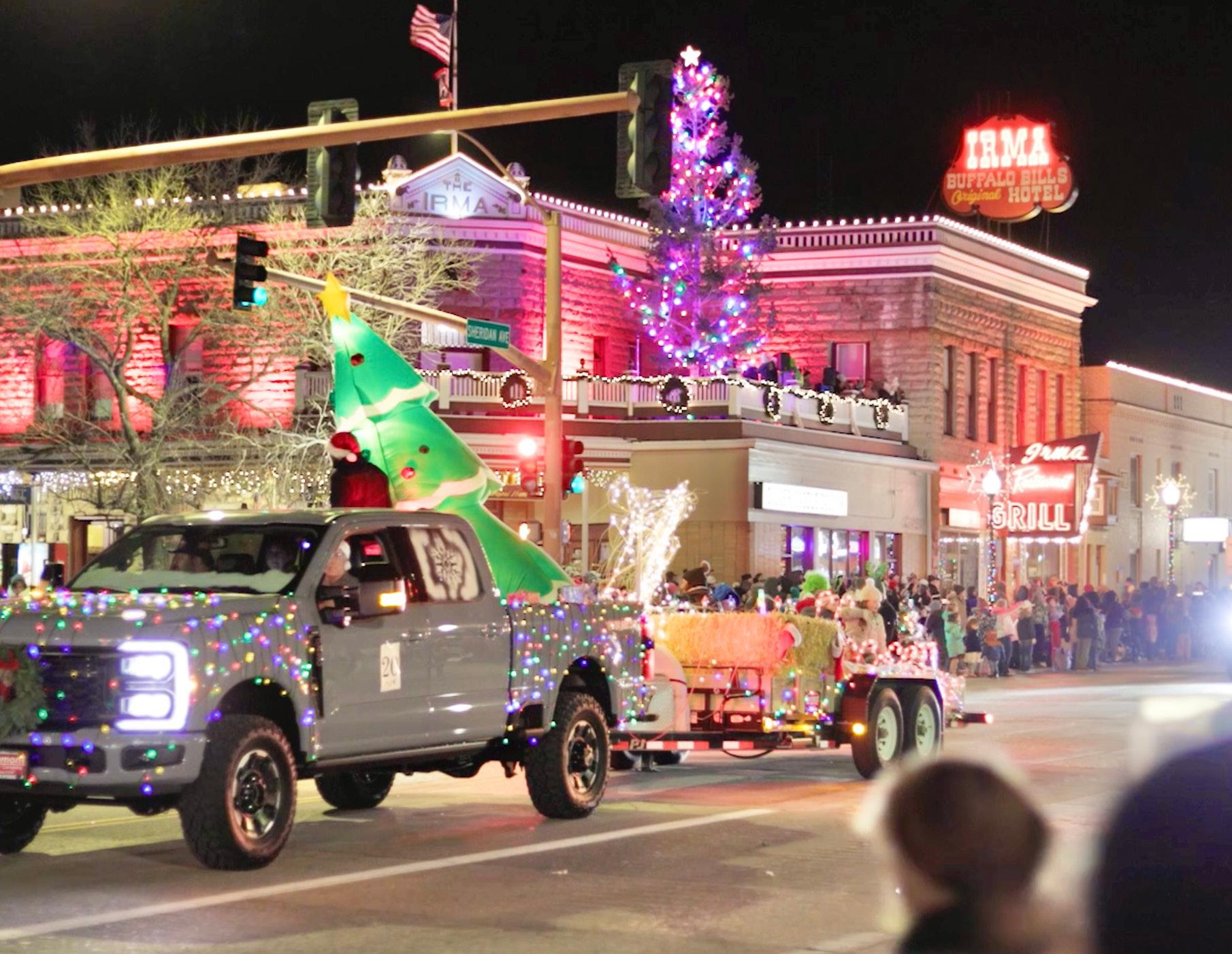
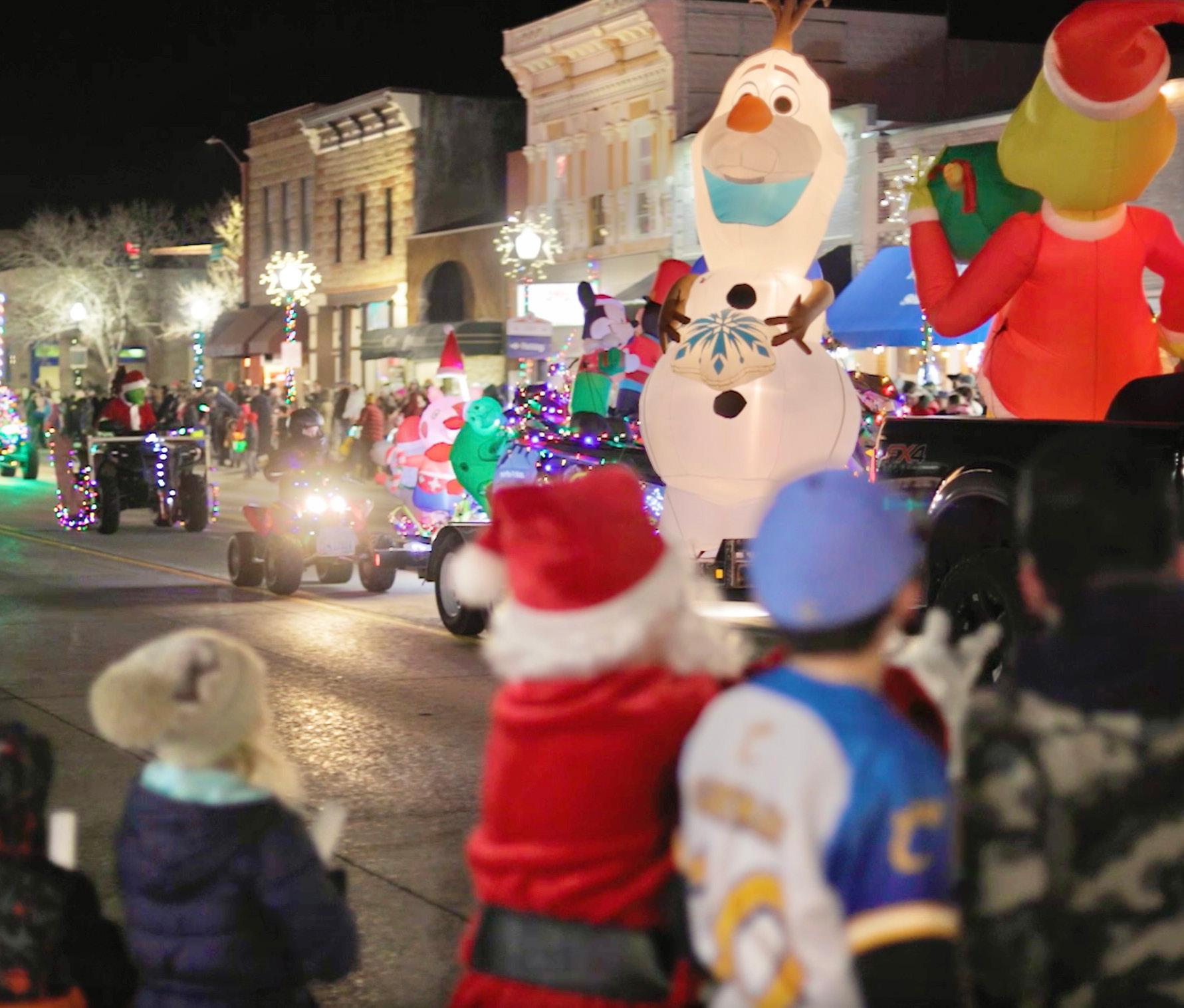
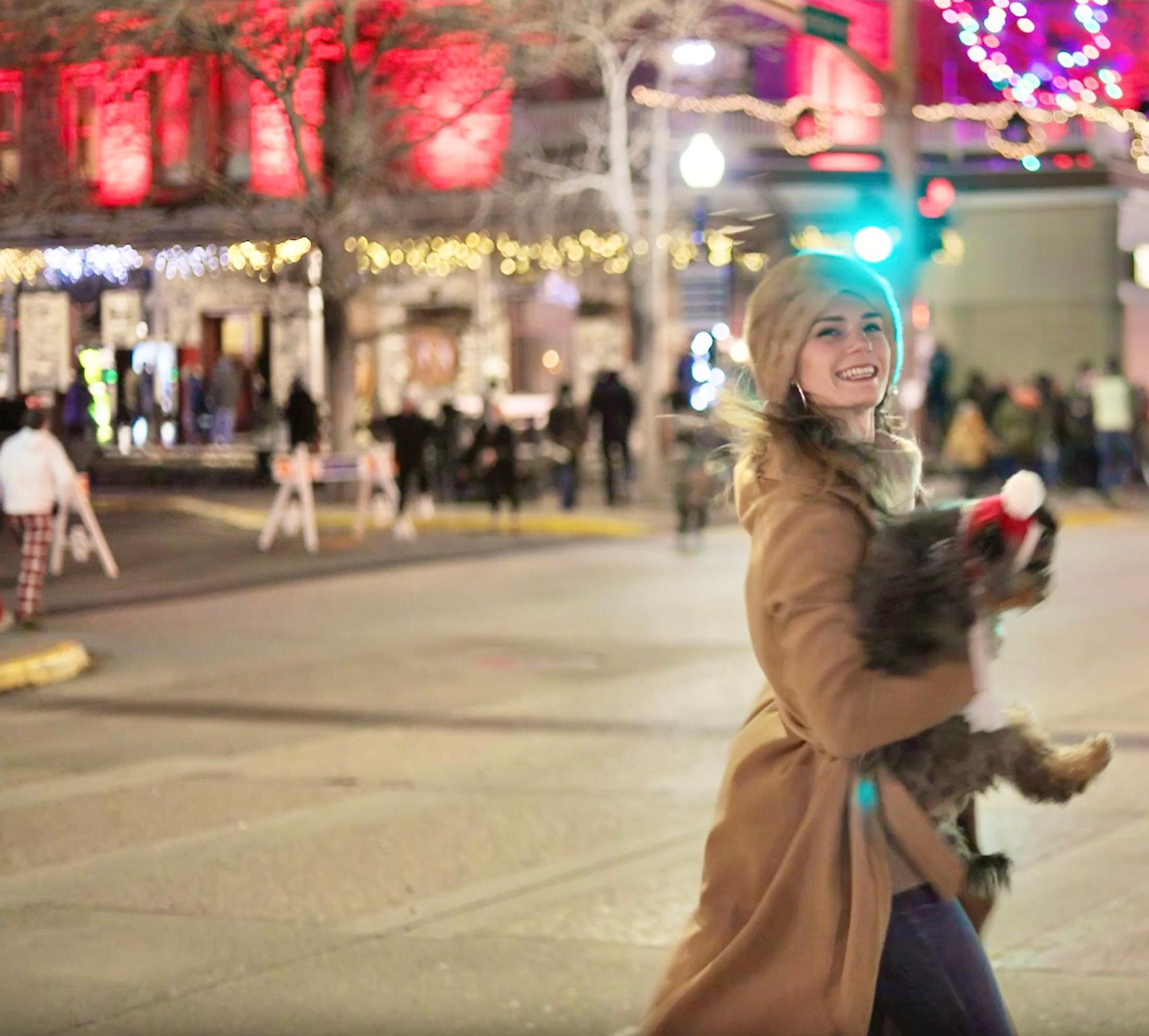
33RD ANNUAL cody cowboy christ mas stroll and lighted parade
NOVEMBER 29, 2025
4 PM TO 8 PM
PARADE STARTS AT 6PM


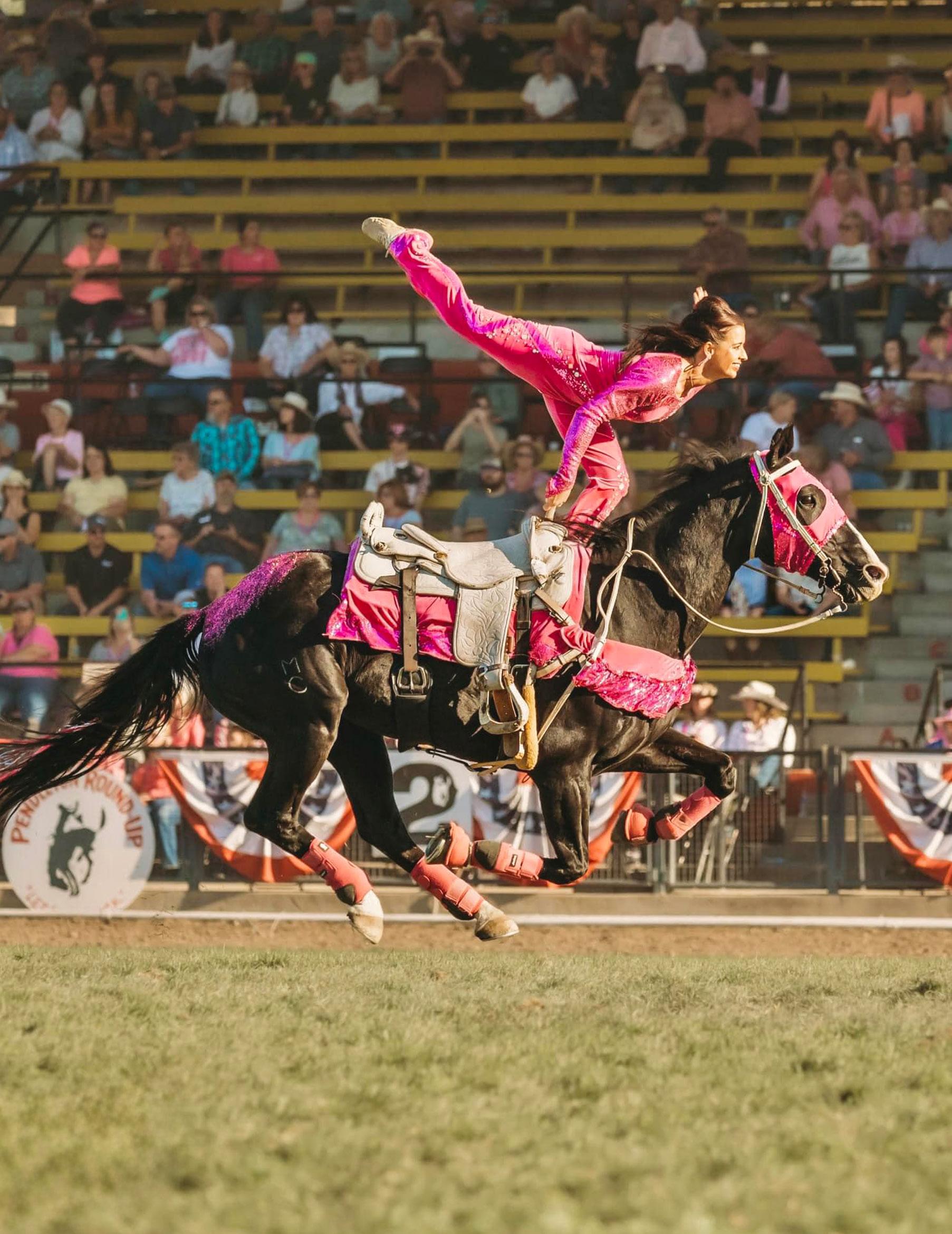


With all its flamboyant pageantry, and horsemanship, trick riding is the stuff of little cowgirls’ dreams. At age five, Madison MacDonald-Thomas was smitten by the spotlight, fast horses, and jaw-dropping stunts.
Now, years later - that’s Madison in the NFR spotlight, standing on the saddle, her horse at a flat-out run as she holds an American flag with fireworks shooting out the top. She throws an accomplished wave to the crowd as her costume glitters under the lights.
“It’s an adrenaline rush,” she said. “When things are all going good it’s pretty easy.”
Madison, from Helena, has performed in rodeo arenas across North America and Mexico. She is considered one of the best trick riders in the nation as her performances include dizzying tricks such as standing in the saddle, vaulting from side to side and hanging by one foot on the side of a running horse.
“It’s an incredible bond between you and your horse,” she said. “The trust you have to put into an 1,800-pound animal and in yourself is very unique.”
Madison has loved horses since she could remember. Her mother produced Wild West shows in Calgary, where Madison learned trick riding. The draw for her has always been the horses, and she’s trained every horse she rides. All of them have a few things in common. They’re stout and built well and just seem to fall into Madison’s lap when she least expects it.

“I always find ‘rejects’ or horses that couldn’t find a job and are just passed around,” Madison said.
Bonnie, her newest mare, is one of those horses. Not only did she not have a job, but she also didn’t seem to want a job until Madison started training her for trick riding. But after just six months of training, she used her to perform at the National Finals Rodeo last year.

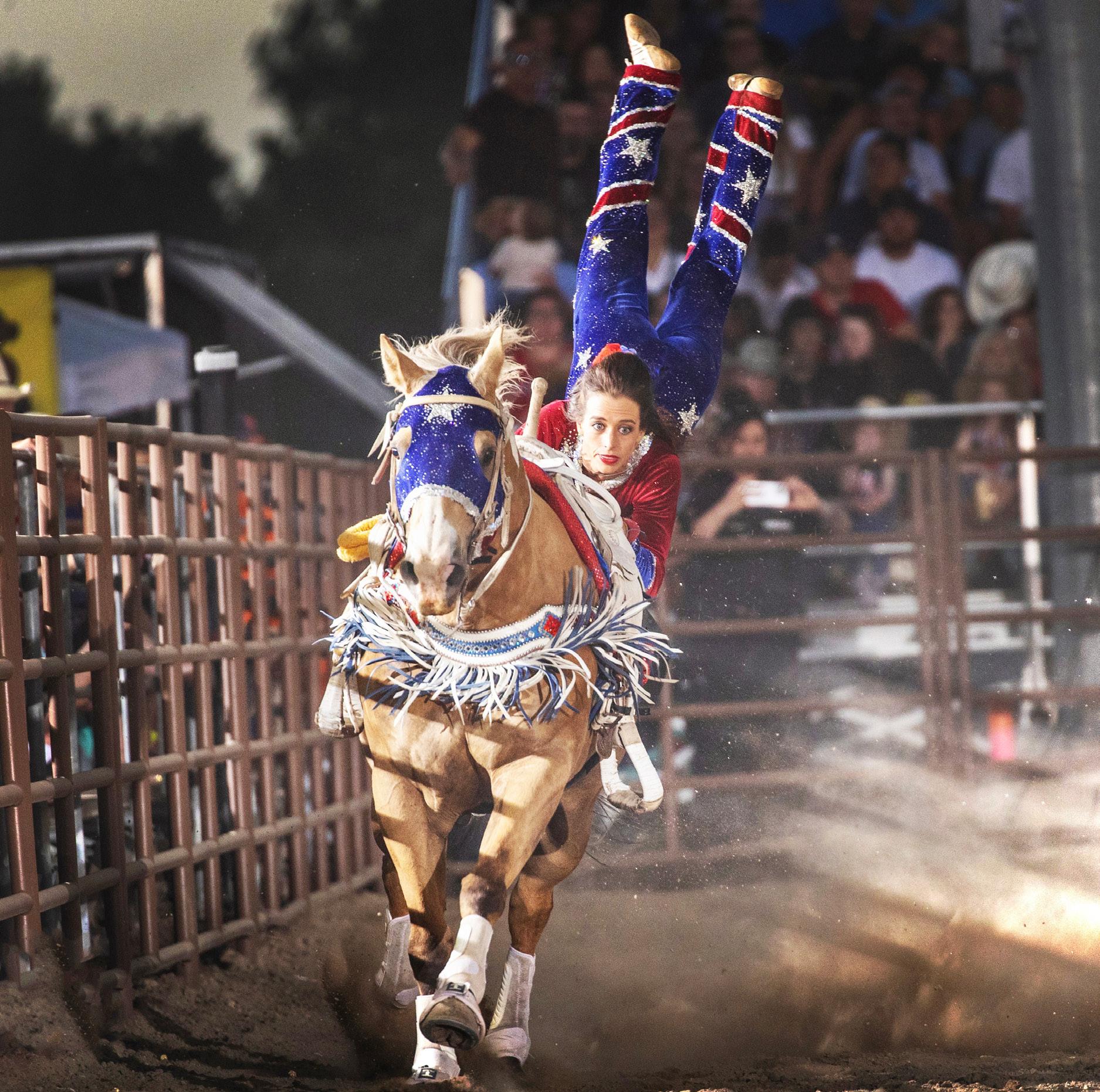
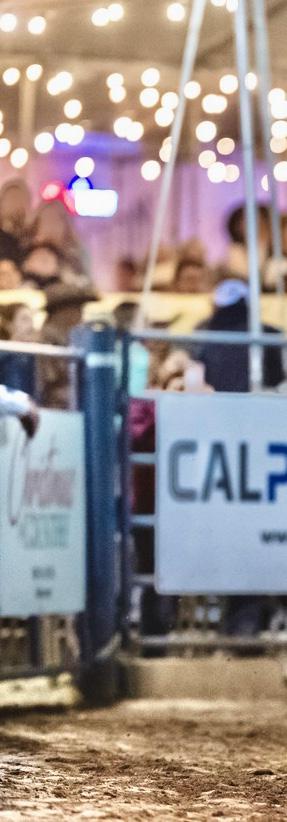
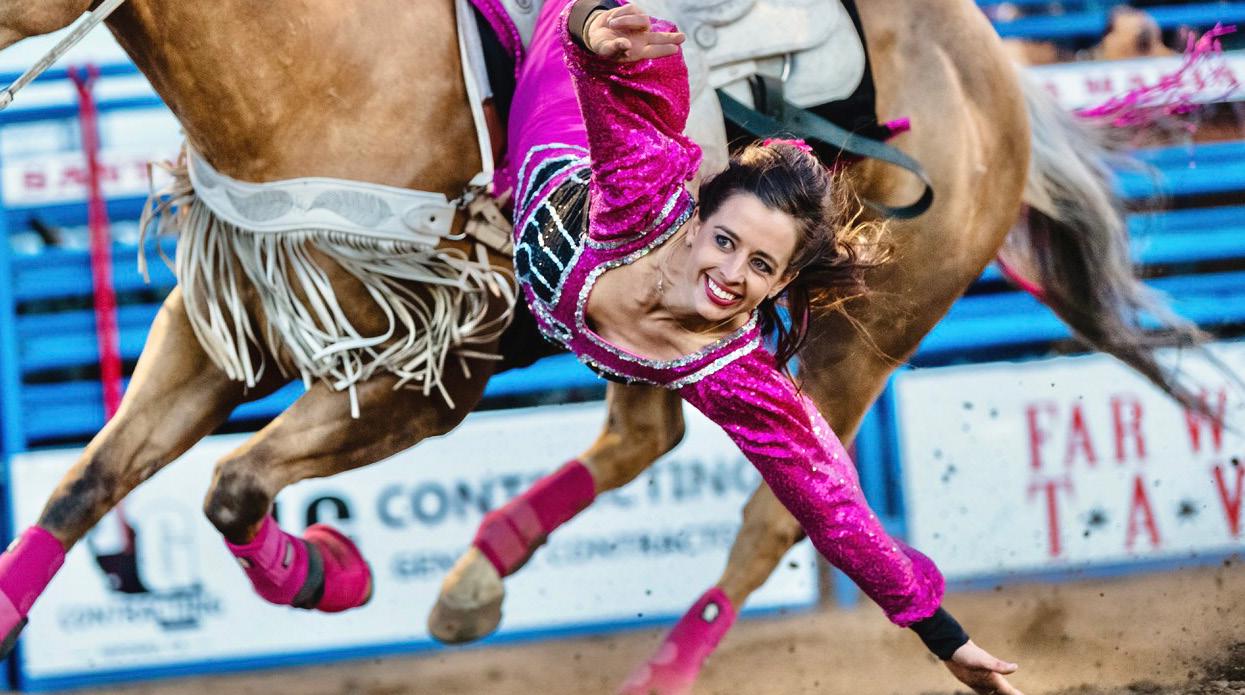

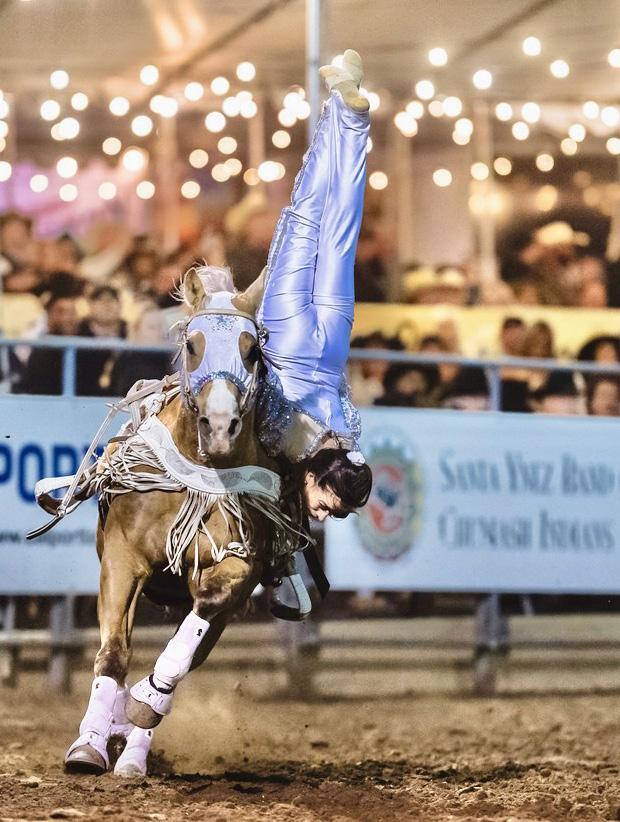
Chex, a palomino gelding, is 11 years old and is the steady ride Madison has been using in her performances for several years.
“He’s psycho, spooks at everything and all he ever wanted to do was run,” Madison said. “It took me a lot of years to get him solid and trained.”
While trick riding was her passion, it was barrel racing that paved her way to college in Texas where she pursued a degree in education. It’s where she met her husband Keegan Thomas, a rodeo cowboy who rode saddle broncs and bulls. Although she enjoyed barrel racing, she couldn’t give up her love of trick riding. After a while, there just wasn’t room for both.
Knowing she wouldn’t have the athleticism and risk tolerance forever, Madison decided to go all-in for trick riding. She’s 32 now and has been trick riding for 26 years.
“It’s a young person’s game,” she said. “I’ve slowed down my performance schedule and I am trying to stay closer to home.”
She has reason to slow down. Her son, Koda, is 14 months old and spending all summer
easy for the little guy.


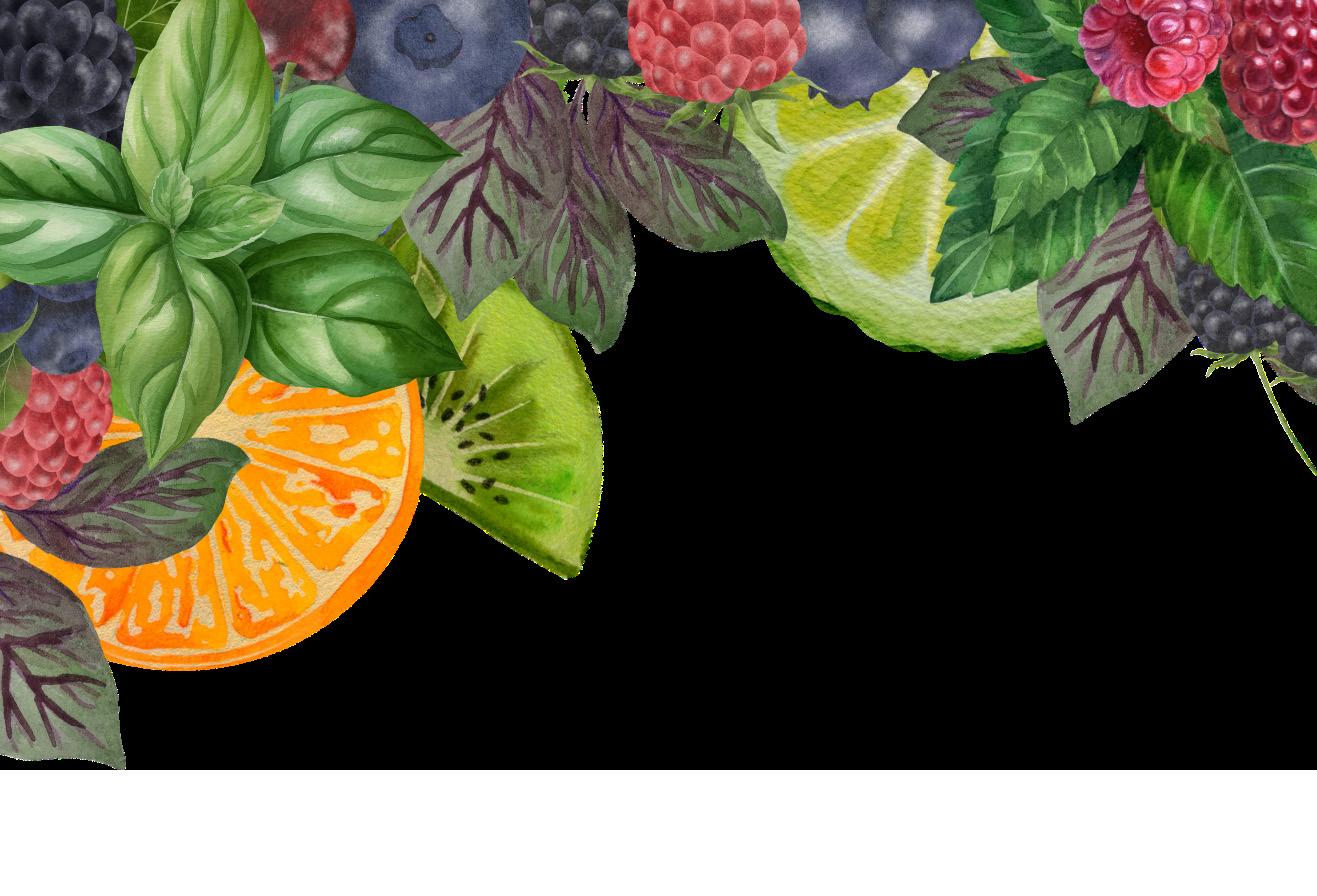
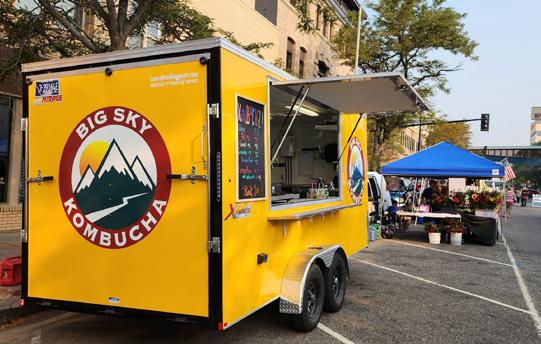
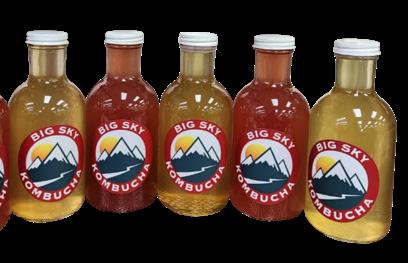





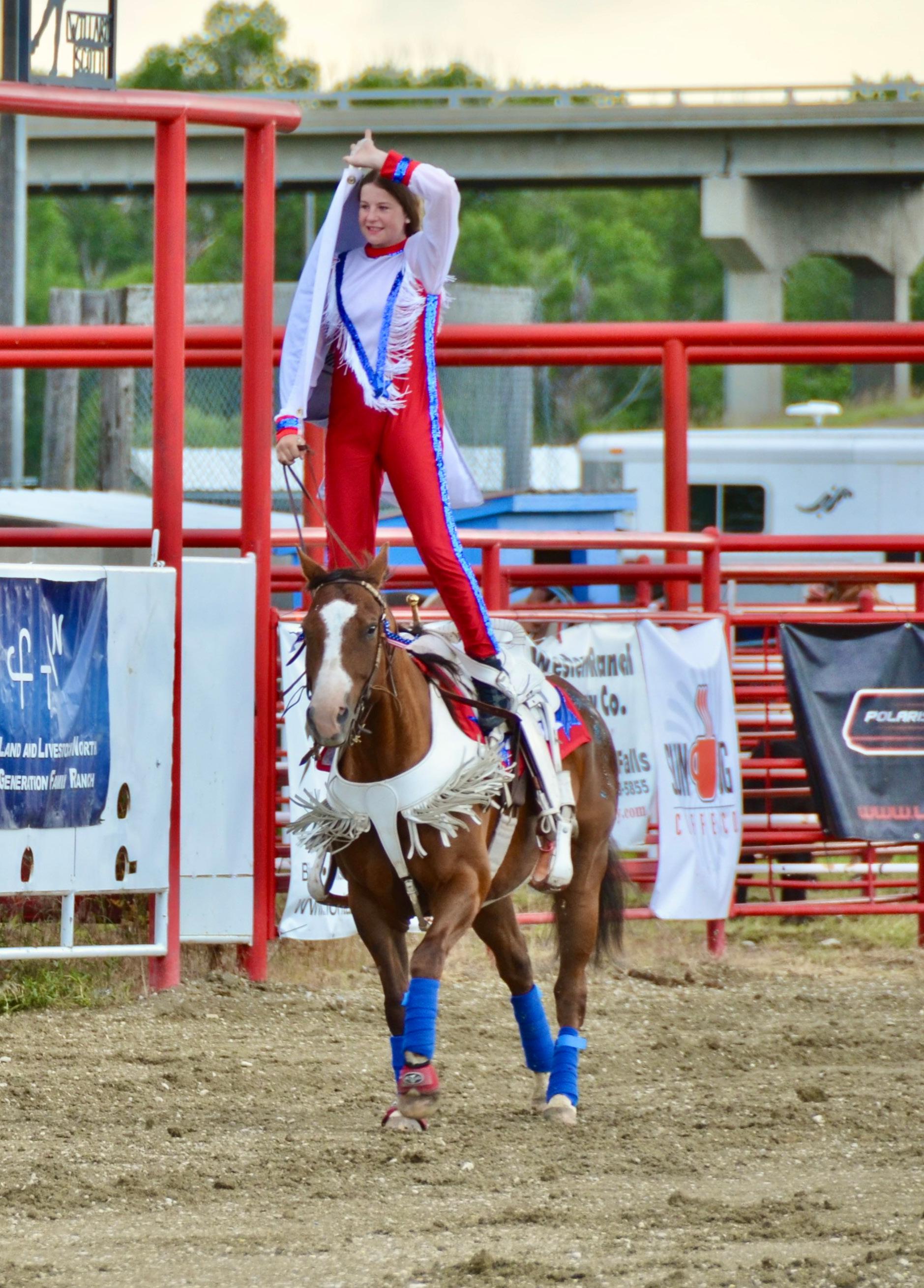

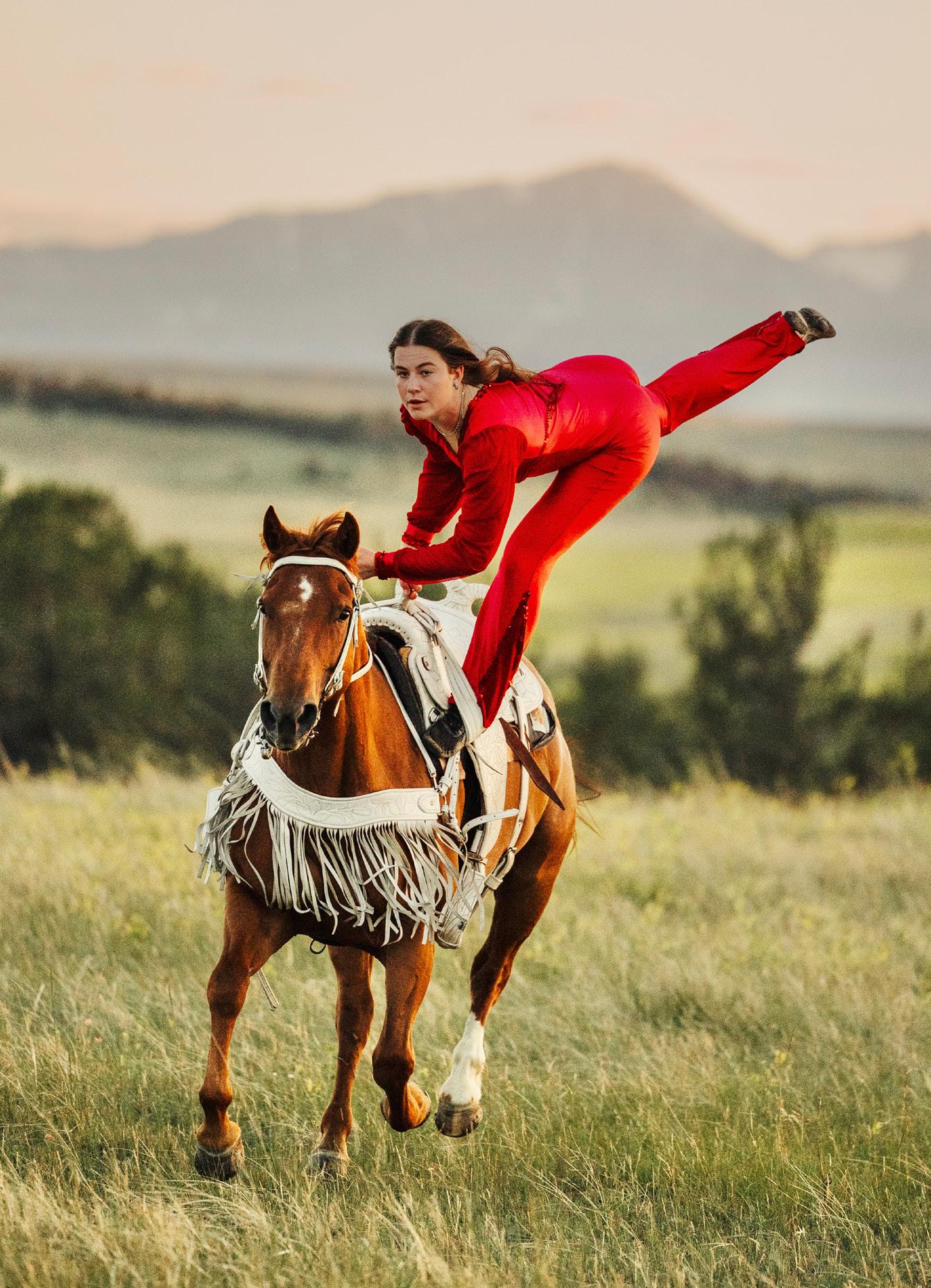

“The hours on the road are hard on everybody,” Madison said.
Over the years, Madison has had a few wrecks, but nothing serious: a few spills, a broken wrist. “Nothing major” she said - that was, until May during a performance in California.
Madison was on a borrowed horse that she’d previously trained, but the horse hadn’t performed in the arena for some time. The horse lost its footing, and hit the fence with Madison mid-trick. It lost its back end and fell on her, then reared up and fell on her again.
“I played it safe and easy,” she said. “My main goal right now is to stay as close to home as possible.” To achieve that, Madison is focusing more on teaching trick riding to students from age seven to seventeen.
“We start from the ground up,” Madison said. “You have to have good horsemanship. Riding comes first and your tricks come second."
Trick riding is incredible. In A WAY IT FEeLS LIKE FLYInG. That’s the best way to describe it - and when you have a crowd that’s into it, it’s awesome.
She was knocked out and woke up in the back of an ambulance. Somehow, not a single bone in her body was broken, but the concussion was serious. She’s still dealing with the aftereffects, including memory loss.
— PAIGE WERTHEIMER
She took ten days off and went back to California for a performance.
Paige Wertheimer, 17, is one of her students. She lives in Big Timber on her family ranch, Nash Land and Livestock. The first time she saw a trick rider was at the Livingston Rodeo when she was three or four years old.
“I fell in love with it instantly and I knew then that that’s what I wanted to do,” Paige said.
She attended a trick riding clinic in Bozeman when she was 11, and she was hooked. At first the tricks were simple, like turning around in the saddle or spinning on the saddle horn. She quickly moved beyond the basics. Now, her favorite tricks are complicated vaults.
Paige has performed at small-town rodeos across the region,
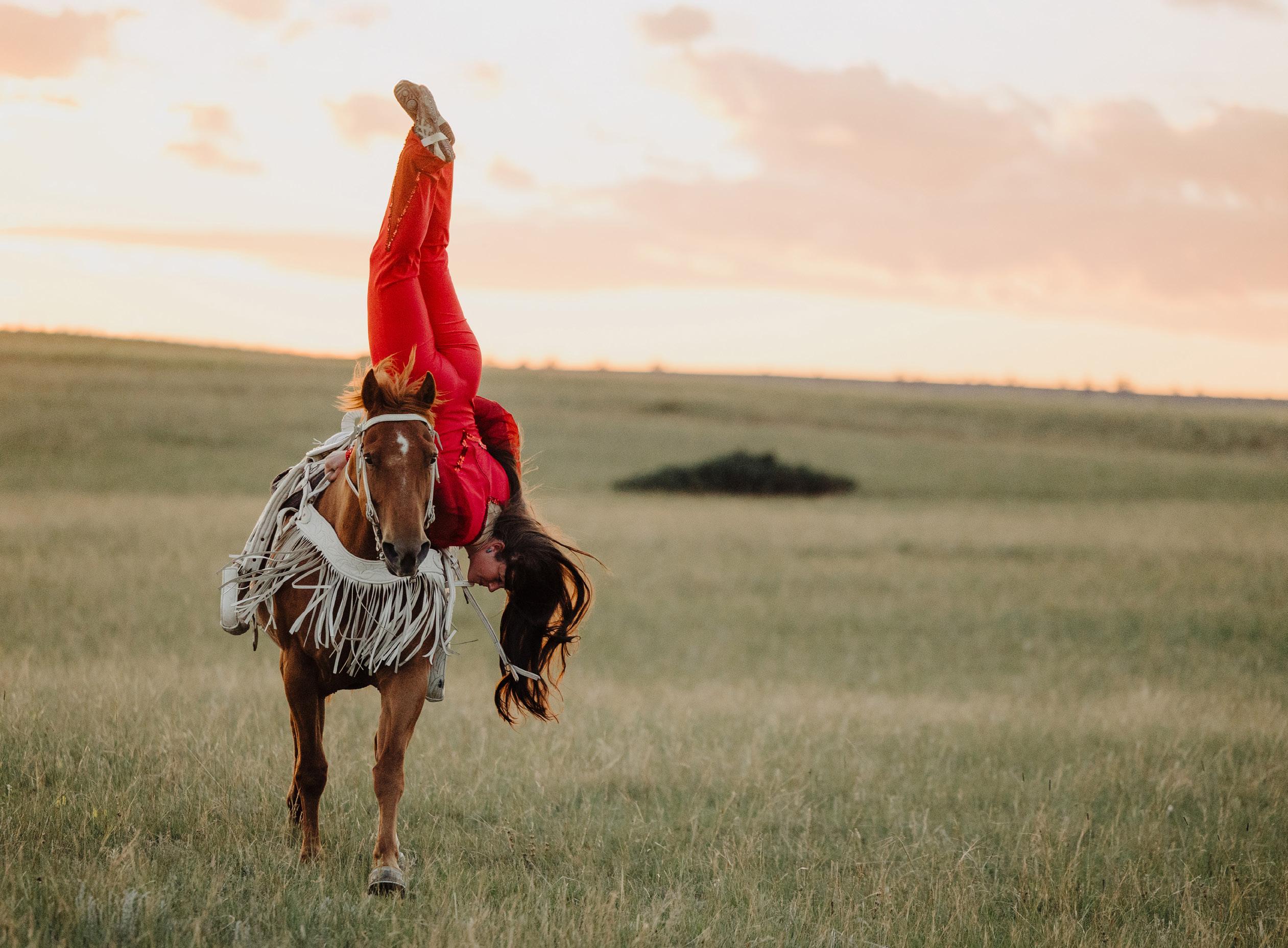
most recently at the Big Timber and Harlowton Rodeos this summer and is becoming known for her thrilling performances.
“Trick riding is incredible,” Paige said. “In a way it feels like flying. That’s the best way to describe it - and when you have a crowd that’s into it, it’s awesome.”
Paige practices at least three or four times a week at the indoor arena at the ranch. She always practices with someone watching, and it’s usually her mother - her biggest fan.
“Learning to trick ride has been one of the best things I’ve ever done,” she said. She still takes occasional lessons from Madison.
To meet a surge in demand for her guidance, Madison is considering building an online masterclass for students who can’t travel to Montana. She’s planning to create videos for students and have them send videos back to prove they’ve mastered the trick before moving on to another video.
Horses are at the center of her passion. They always have been, and for both Madison and Paige, trick riding is just one more opportunity to be on a horse.
“It creates an incredible bond between you and your horse,” Madison said.







